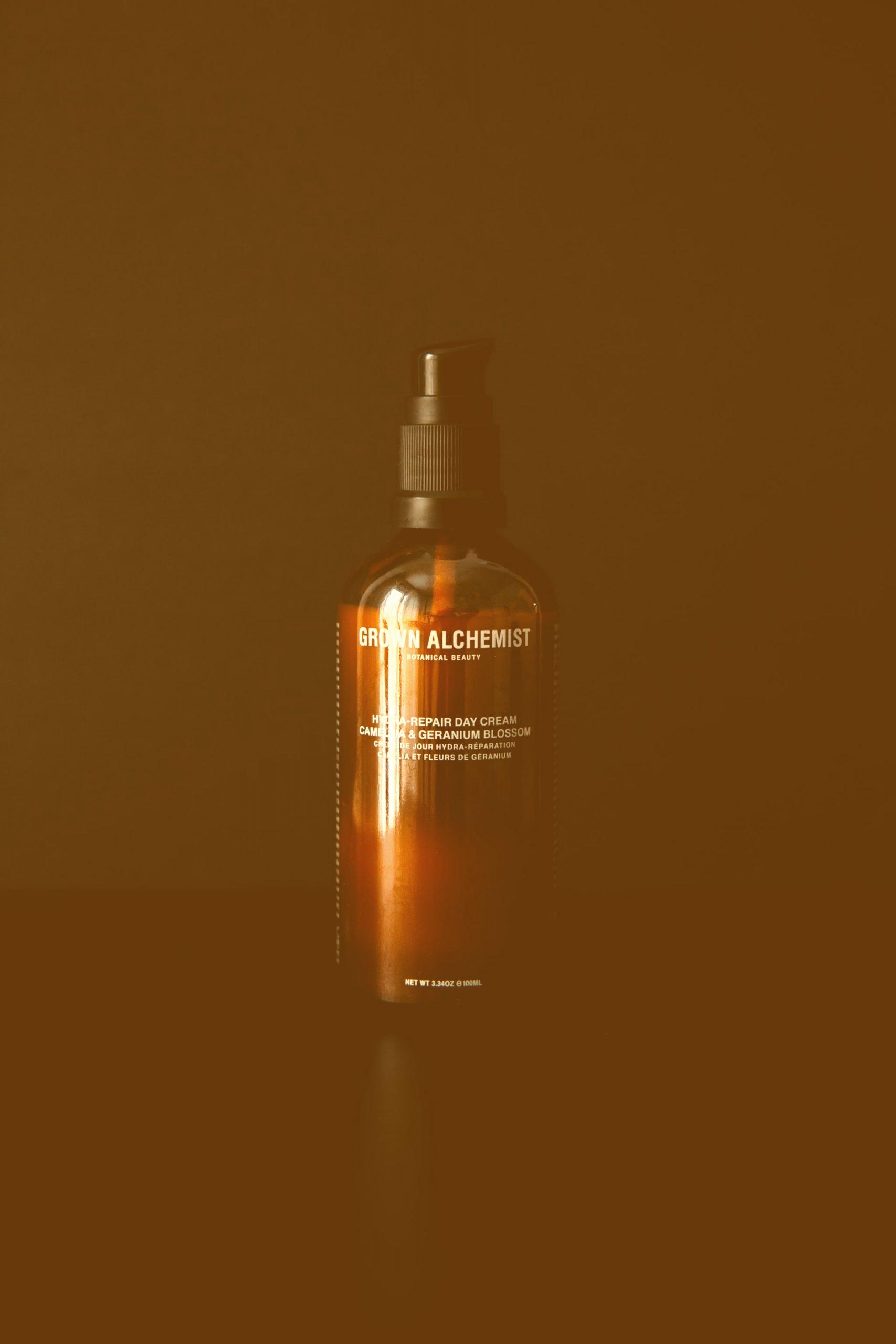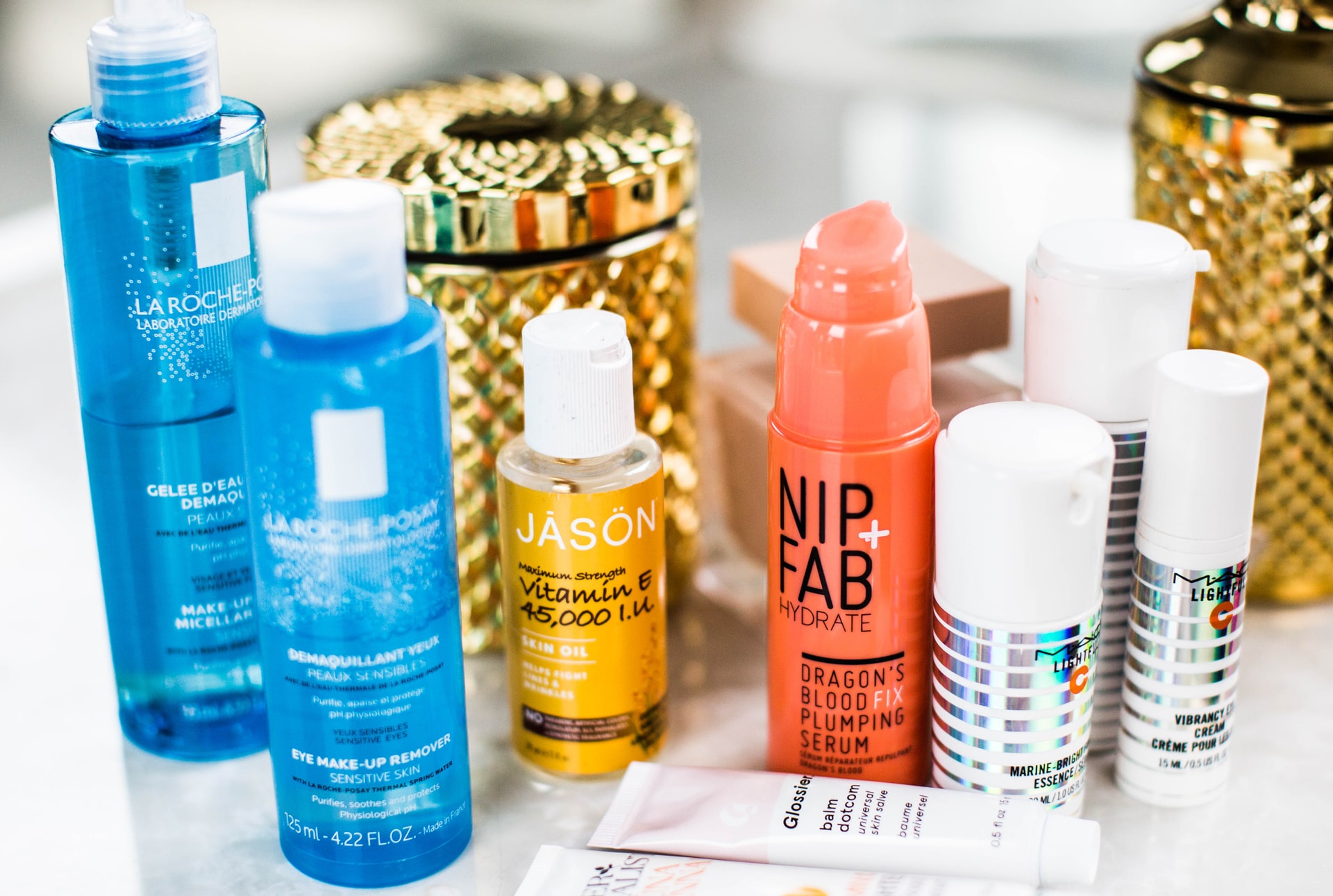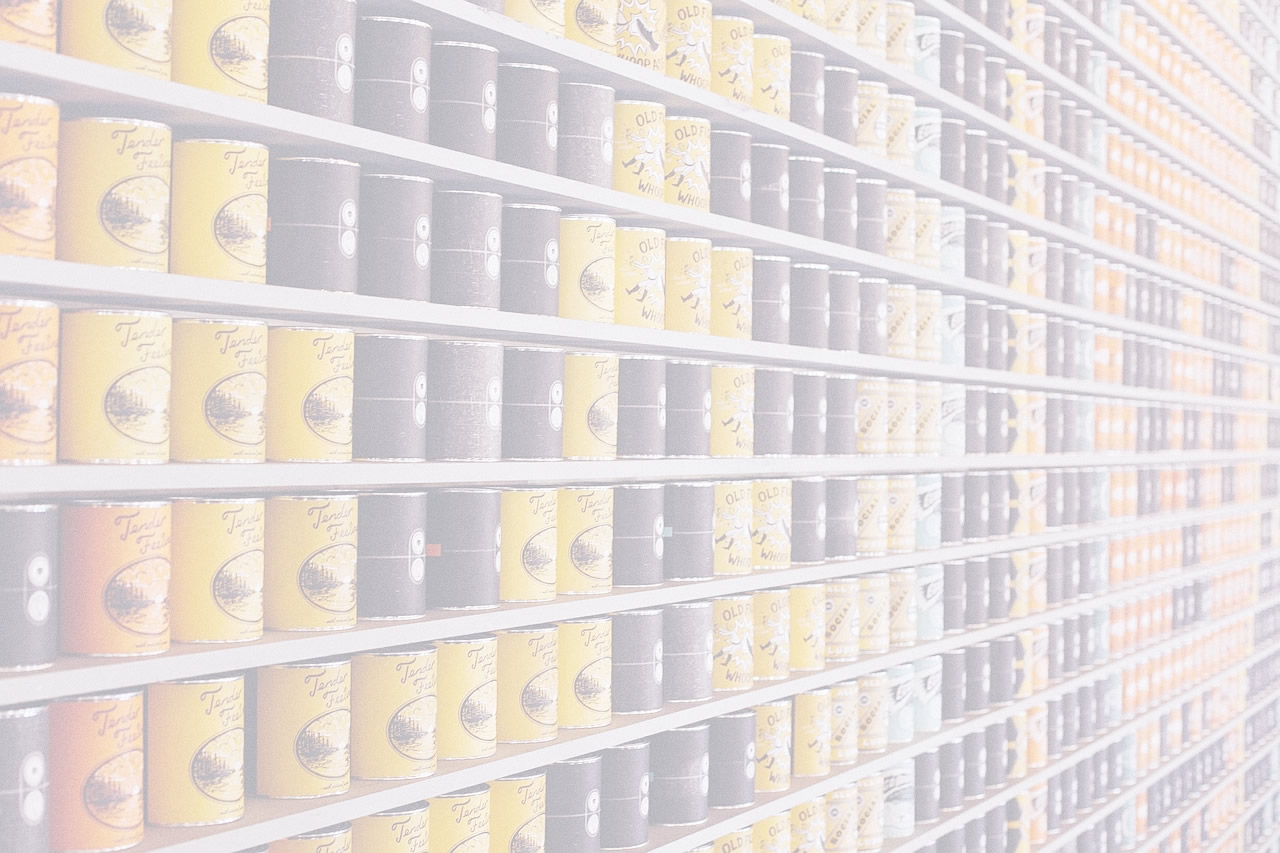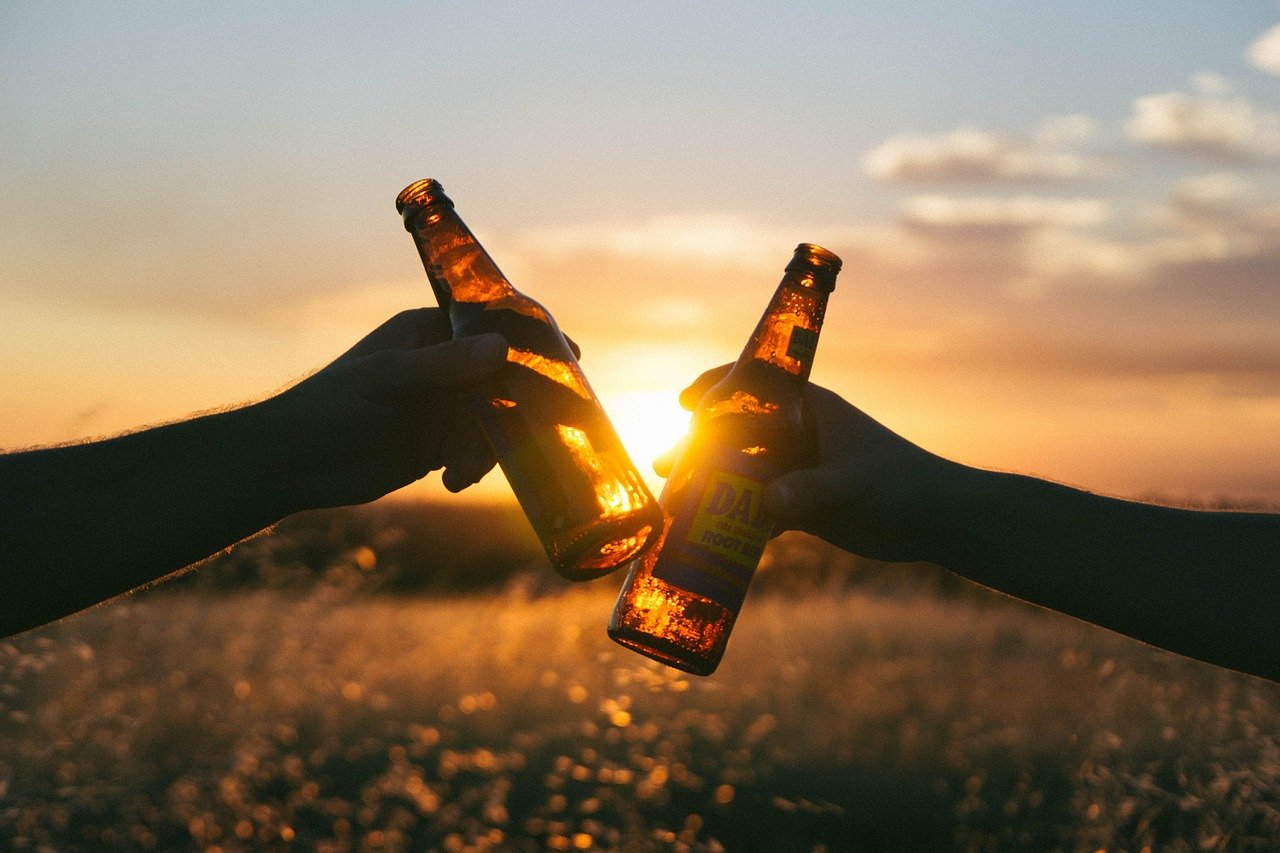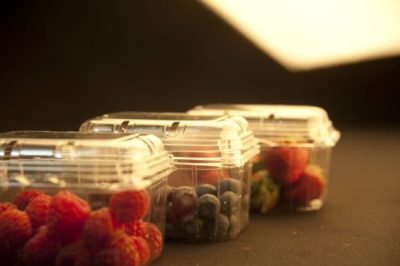A Useful Guide to Cosmetic Packaging in Australia
Introduction
Looking to find a suitable cosmetic packaging solution? You will probably find everything you need to know in this article.
Check through the context and find out more below.
Australia’s strong commitment to sustainability appeals to today’s conscious shoppers, who are increasingly conscious of their skin.
Consumers are buying an Australian identity that embodies a laid-back mindset, a healthy lifestyle, and a “counterproductive” beauty regimen.
Today, the local beauty scene and its strict cosmetics laws have attracted global attention due to the growing demand for natural and ethical products.
Why cosmetic packaging is important?
There are many reasons why cosmetic packaging is important.
One major reason is that cosmetic packaging can protect the product. And another major reason is, they provide convenience for consumers.
Cosmetic packaging plays a key role in the storage or transportation of cosmetic products.
It not only protects the product from deterioration but also helps preserve its quality.
So, selecting cosmetic packaging solutions require a lot of care and knowledge.
Protection
The main purpose of a package is to protect the product from degrading during storage, shipping, and handling.
Usually, cosmetic packaging consists of durable materials to give products longer shelf life.
However, as consumers often open and close the package during their use, the package can be less protective. Anyway, the package should ensure the safety of cosmetics. In other words, cosmetic packaging protects the product from dust and contamination in most cases.
Meanwhile, a package itself can damage for a variety of reasons. These reasons can result from biological, chemical, radiation-induced reasons. And/or damages caused by humans, electricity, pressure, or etc. Because of this, cosmetic packaging often comes in multiple layers. Also, it is vital to protect products from environmental factors such as mold and bacteria. Thus, good cosmetic packaging must be strong enough to protect products and with enough strength to withstand man-made forces. Besides, the capability to resist radiation damage as well as mechanical, thermal, biological, and chemical risks.
Creation of brand awareness
Excellent cosmetic packages not only convey beauty but also help to set brand awareness.
Since cosmetic packaging is what consumers initially see, it greatly influences how they view the product and that’s why the appearance of the container is also very important.
A cosmetic package must be good-looking because it’s part of the marketing strategy. And the cosmetic packaging also serves as the critical part of the quality as a whole besides the product quality.
Also, the sales of cosmetics mainly depend on brand image, while the cosmetic packaging is the fundamental way to show it.
Usually, the core competitiveness of a cosmetic product is the connection between brand and customer’s emotion. Thus, the cosmetic packaging must show how the product will improve its appearance and attitude.
Since the purpose of customers is to enhance appearance, the packages should stimulate this desire. In many cases, cosmetics packages change and develop constantly to acquire better recognition on the market.
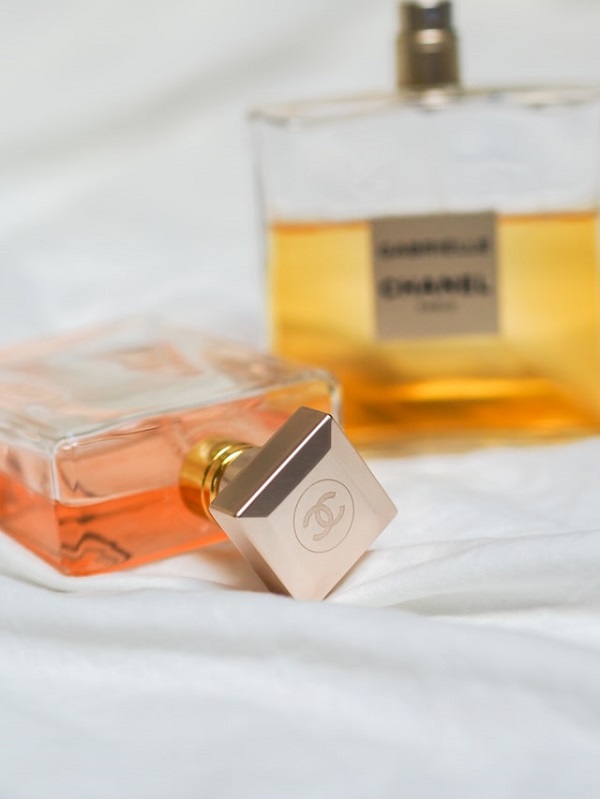
Cosmetic packaging types
Cosmetic packaging types by styles
There are many popular packages in the cosmetics industry, such as
- airless bottles
- pumps
- sprayers
- tubes
- jars
- droppers
- compacts
- and more
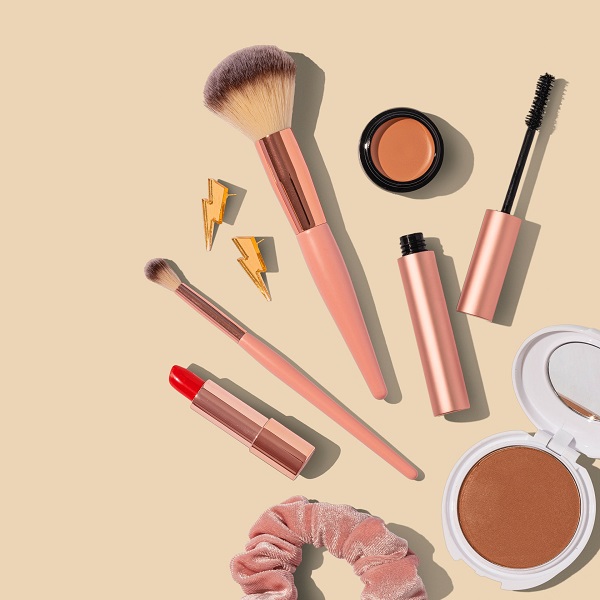
Cosmetic packaging types by materials
When choosing cosmetic packages, we need to consider the materials and how it reacts with our products.
Ingredients of the products may have special requirements for the materials of the package.
For example, most natural green skincare products are full of ingredients like essential oils, fatty acids, natural surfactants, and fruit acids. These ingredients will react with some types of material.
Butters and creams can seep out of a kraft bag, so we probably won’t use kraft wrapping for them. In this case, polypropylene is a more suitable option.
Polyethylene terephthalate (or PET)
This material is common to see in plastic bottles for cosmetics and beverages packaging.
PET provides an oil barrier between the plastic and the internal product. And it prevents chemical ingredients from damaging the plastic.
Moreover, PET is also popular for its appearance, as it looks like glass with transparency. Another reason is, PET can come in various colors. That offers a bunch of more possibilities in cosmetic packaging designs. (We will talk about the design ideas for cosmetic packaging later in this article. Don’t miss it!)
Besides, PET has a variety of “squeezability” from semi-rigid to rigid. And it is very light in weight, hence helps to reduce shipping costs.
If your product contains essential oils, high alcohol content, or other solvents, PET could be the best cosmetic packaging material for it.
PP – Polypropylene Plastic
PP is another popular plastic used in cosmetic packages today.
It remains the choice for various tubes and cosmetic containers because it is BPA-free and 100% recyclable.
Glass
Glass is a green and high-grade cosmetic packaging material, while its cost of shipping and manufacturing is high.
Dark glass jars are perfect for essential oils, serums, vitamin C-rich lotions. It gives the product a premium look and feels. But be cautious about scrubs and bath gels in glass products, as they may be broken in bathtubs and showers.
Metal
Metal cosmetic packaging is good-looking, but it requires a special coating to hold a high percentage of essential oil products. Before you buy metal packaging, you should carefully check if it will rust or break when it contains your product.
Metal lids can damage easily during manufacturing and shipping, so be careful with them.
HDPE
HDPE gets its fame for its durability and strength.
It is highly resistant to most acids and hence suitable for products with solvents.
But it’s not good to use HDPE in products with high essential oils content. That’s because it will react with the EO. Besides, HDPE can be translucent, so you can see your product inside.
Moreover, HDPE is easy to recycle and has a wide range of uses.
Paper-based Boxes
Paper is one of the most common materials used in cosmetics packaging.
As plastic cosmetic packaging is so harmful to the earth.
So, the cosmetic packaging industry pays special attention to this environmentally friendly and sustainable paper packaging.
Similarly, paper-based cardboard boxes are very popular. They are heavy paper stock used for cosmetics products. These boxes are useful for many cosmetic packages.
Meanwhile, shippers prefer to use corrugated boards for logistics services.
More about cosmetic packaging boxes
Corrugated board? Isn’t it the same?
People often feel confused about the corrugated board and kraft paperboard, but they are different types of materials.
The corrugated board consists of three layers of kraft paperboard.
And kraft paperboard is an extremely thick layer of brown cardboard.
Two of the three layers of corrugated cardboard, called liner boards, are the main body of the box. And the remaining layer, which is thinner and made of reinforced paper, is used to make air pockets.
Thanks to these air pockets corrugated boards can gain a good impact resistance.
Thus, the corrugated board is suitable for shipping and handling. The corrugated board has different types of thicknesses and ratings.
Usually, it’s not so common to see packages made of corrugated boards with complex designs like normal cardboard boxes.
Still, it’s easy to print or add designs to them.
Corrugated vs Cardboard boxes
Not that you’ve known the corrugated board and cardboard are different materials.
We believe you’ve figured out the difference. If not, feel free to ask PrimePac : )
So, the next question we need to answer is: Which one is more suitable for your product cosmetic packaging?
Cardboard is a very common choice because you can custom several printings with different types of colors and textures. And it feels more comfortable to touch.
Meanwhile, corrugated boxes are also a good choice.
Corrugated boxes are of widespread use in shipping and wholesale because they have great resilience and resistance. When other boxes are on top of them, corrugated boxes can support, while cardboard boxes are likely to damage.
Also, read Everything about Food Packaging You Need to Know.
Sometimes, it remains difficult for consumers to see the product and get enough information without clear labels on the cosmetic packaging.
Thus, labels on the cosmetic package need to show basic information about the product.
The basic information includes contact information, ingredients, EXP dates, warnings, and instructions. It’s because labels identify the product and its source, and remind consumers of facts they need to know.
And we’re going to dwell more into the cosmetic packaging labels down there.
Cosmetic packaging labels
Labels tell consumers what they need to know about the product which includes how to use the product and where the product comes from. Also, it should list the ingredients and functions of products. Besides, the label must provide contact information about the company and product tracking information. Marking may be considered misleading not only because the label statement is deceptive, but also because the label does not reveal important facts.
Moreover, labels must be easy to read.
We can list as one ingredient for some certain ingredients, such as perfumes though.
And some information can appear only on the secondary package, the outermost package consumers will see directly. But the very important information must be on both the secondary and the inner packages, particularly when the product is prone to misuse.
Make sure the information is correct and accurate
Accuracy of information is still one of the most important factors in cosmetic packaging and labeling regulations.
Although they may not be able to inspect all the products on the market, the government can impose penalties.
Therefore, please be sure to be careful with the labels on the packaging of cosmetics and avoid erroneous violations of laws and regulations.
After all, the manufacturer is still responsible for ensuring the safety of the public’s products.
Avoid putting misleading information on the cosmetic packaging
As well as labels on other industries such as food and beverage.
Misleading information on the package for cosmetics is definitely prohibited.
None of the following information can be misleading:
- name
- address
- ingredients
- storage conditions
- the dates
Besides, we can use abbreviations only if the abbreviated words are clear enough to explain what they stand for.
Also, the text on the package must be clear. So, choosing a reliable supplier like PrimePac in Australia can pretty much help you out with the labeling problems with cosmetic packaging solutions.
When it comes to packaging in small sizes, the text printed on the package might remain too hard to read. For cases like that, we need to use tags with legible text.
Find more about the requirements for food packaging labels in Australia.
Requirements for how to list the ingredients
For components of the product that are 1% or more by volume, we must list them in descending order.
The weight of each component determines the priority of the order. In other words, the heavier ingredients used in the product take precedence.
As for the ingredients that make up less than 1% of the total product, we can list them in any order. Also, if the product involves colorants, we need to show them on the label. There is no special requirement for priority in the order.
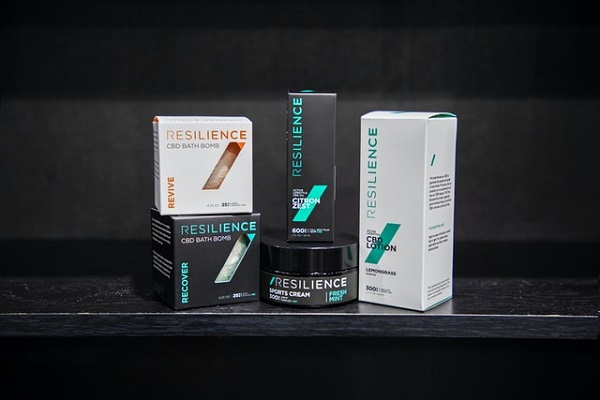
Cosmetic packaging design ideas
It’s time to start designing your cosmetic packaging and labels.
Set your brand design standards
The first step of designing packaging is to set the elements for your design.
You need to consider the following elements.
Style
Before you start designing the packaging, these questions may help you.
- What emotions do you want to bring to your design?
- What personality do you want to embody in your design?
- Do you want a minimalist vibe?
- Looking to be more dramatic or more stylized?
By knowing what style you’re looking for, the rest of your design will be more efficient and targeted. Determining the style at first helps ensure the packaging you create is consistent with your overall design goals.
The style will also help you determine other design elements that you need to consider.
For example, if you are going for a pop art feel, you might need to add some illustrations to your design. If your cosmetic products contain natural elements, natural style is a good choice for your design. And then you might want to add some nature photography to your packaging design.
The point is, when you know the style you want, you can add the most suitable elements to make your design stand out.
Colors
When choosing colors for your packaging, you should choose colors matching your brand personality. Besides, you want something to grab customers’ attention and make your products stand out from the competition.
Attracting your customers is rather important in the highly competitive world of beauty and cosmetics.
Choosing your brand’s color palette is like choosing this season’s must-have eyeshadow palette. You want to stay true and show your brand’s personality.
In the meantime, you want to be a distinct one among the competition.
So, how to choose the right color?
Take pink as an example. Pink is a popular color in the beauty and cosmetics industry. It’s fun and feminine. It is one of the most widely used colors in all makeup products.
But you can’t choose pink, because your goal is to stand out in the market. If you go with pink as the packaging color, it may be difficult to attract customers’ attention, because every cosmetics store has a sea of pink on its shelves.
Now, let’s have a look at some famous beauty and cosmetics brands.
The most recognizable brands use colors as a way to build their brand. When people want to buy purple cosmetics, they think of Urban Decay. Bold black and white are bound to Make Up Forever. The queen of pink is Too Faced Cosmetics.
So, if you want your brand to be successful, you need to do the same thing as those brands.
Choose a brand color palette that not only stands out from the shelves but also builds a strong bond with your brand.
Fonts
The third element you need to consider is fonts.
If you want to have something unique on your brand or something that can instantly attract customers’ attention, you can make good use of fonts in addition to color.
Like color, fonts help your brand jump out of the shelves. Besides, it shows your brand’s personality and conforms to the overall style.
You can study the fonts of some cosmetics brands, such as Urban Decay, Chanel, and Clinique, and find the connection between the font and the style.
One more thing to consider is how the font will look on your packaging. Just remember to make the font easy and clear enough for reading.
Get the important information on your packaging that you want to tell your customers
Next, you should collect all the information and icons that the packaging needs.
Common things on cosmetics packaging include expiration labels, government warning labels, brand copy. Besides, you need an image to show your product is cruelty-free. Additional images and graphics may be useful.
Collect all these things so that you can organize them properly in your packaging design.
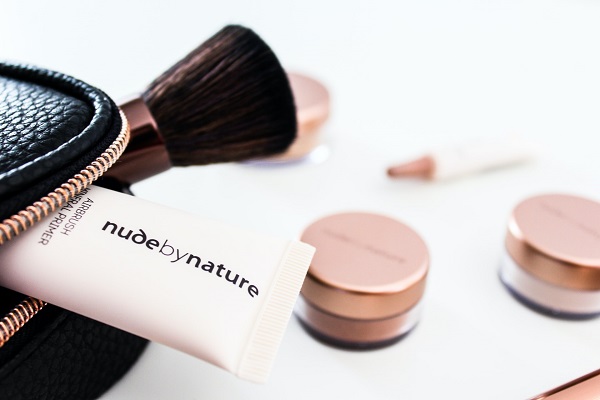
Choose a focal point for your design
Now that you know the ideal type of product packaging, it’s time to think about design.
The first thing you should do is select a touchpoint.
When your customers view your product, your product can immediately “talk” to them. You must deliver a compelling enough message to keep customers in your product.
Otherwise, they will move to another location on the shelf.
So choose the one thing you want customers to know about the product. Whatever you choose, you need to make it visible in the packaging design.
Logo helps build brand awareness.
Through the logo, your customers will know that the lipstick or face cream they buy is yours. Therefore, you should know that the design of the logo is very important. It is best to place the logo front and center.
As for the logo itself, it’s best to add something unique. Do your beauty products contain ingredients that will wow your customers and inspire them to buy your products? It can be a core element of the design.
Focus on the core elements of packaging design to ensure that your key message is being communicated to the customer.
Consider your material and professional printing options
Next comes the selection of packaging materials and special printing options.
There are many options to improve your packaging. But keep in mind that complex packaging can also mean high costs. Different kinds of products have different requirements for packaging. For example, if you are going to use your product in the shower, it is best to use a coated waterproof material.
Other design options can make your packaging look great.
Things such as foil, embossing, or ink with a 3D effect will give your packaging a high-end luxury feel. But they also add to your cost per package.
If you don’t know what options are available or what your budget allows, contact the designer. Then find out which materials and printing options best suit your brand and budget.
How to find out Mr. Right (designer) for your cosmetics packaging design?
To find a good designer, there are 2 common ways.
DIY
DIY is probably still the first choice because no one knows what package design you want better than they do.
This is not recommended in most cases unless you are very confident in the design domain.
By designing your own, you can actually save money. But the design of your cosmetics packaging is so important that it may not be the best place to save money.
Hire a designer
Another approach is to hire a designer to manage the design process for you. You can hire a freelancer or start a design competition.
If you decide to hire a freelancer, it’s best to find someone experienced in cosmetic packaging design.
It would be better if they specialized in the cosmetics industry.
Start designing!
Once your design is ready, it’s time to start designing!
The first step is to review your brand style design with your designer. Then talk with your designer and make sure he knows exactly what you are looking for. After that, you should ask him for a design mock-up. You will receive a concrete piece of packaging before you finalize your design.
When you get the design mock-up, you need to evaluate it and see if it is suitable for your product.
Here are some questions to evaluate the design.
- Will it appeal to my ideal customers?
- Is it clear what this product is?
- Does it help your brand stand out from the rivals?
- Will it be as popular in five years as it is today?
After completing the design, your designer will create your packaging die lines. And you will need to send the files to the printer.
The files include a vector file of your packaging die lines for each product, and Pantone or CMYK color codes.
Print out your packaging design and take your product to the world!
Wrapping things up
There are plenty of opportunities in the beauty and cosmetics packaging industry.
With the right product, the right packaging, and the right design, you can certainly seize the opportunity!
Know more on The Ultimate Guide to Choosing Your Beverage Packaging.
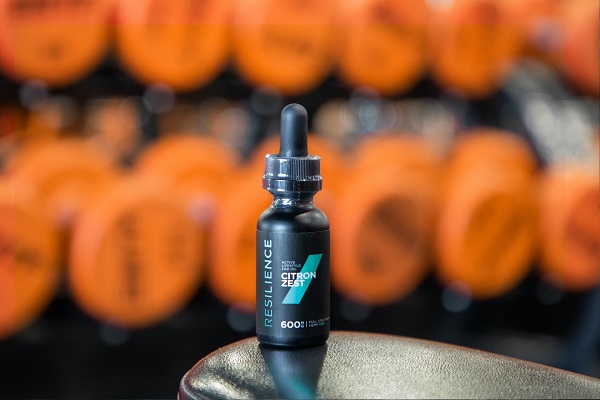
Eco-friendly ideas about cosmetic packaging
Types of eco-friendly cosmetic packaging
Biodegradable Packaging
Brands like coca-cola and Nestle say they will turn to PCR (post-consumer resin) packaging.
Under the influence of consumer-driven, even if the price of biodegradable packaging is slightly higher, the sales also increase.
PrimePac’s biodegradable and compostable packaging solutions end up in landfills or marine waste.
Moreover, the ratio of PCR to raw plastic materials has been increasing to ensure that functionality. And keep the colors within high cycle content.
Reducing packaging is also a real driving force for brands. Many cosmetic companies find ways to reduce the number of packages through better design and lighter parts.
To achieve that goal, PrimePac introduced small bags and make cosmetic packaging solutions as sustainable as possible. And we also provide recycled paper as part of our kraft paper bags. All these solutions are now available in Australia. So, if you’re looking to get an eco-friendly cosmetic packaging solution, don’t hesitate to contact us.
More recently, we have applied technology to print on our normal packaging with eco-friendly ink.
The adoption of that printing technology will not discolor the substrate. Nor will it contaminate or change the chemical stability. And it does not affect the function of the flip or disc top. Plus, they are also compatible with most types of plastics such as PET, HDPE, and PP.
Through extensive testing, we are now able to provide cosmetic packaging solutions compostable and biodegradable in landfills.
It can not only decompose all the cosmetic packaging resins but also leave no microplastic.
Hemp cosmetic packaging
For the topic of compostable and biodegradable packaging, hemp packaging is now a popular talking point.
In the cosmetic packaging industry, hemp has the potential to become a very environmentally friendly choice.
In fact, it is not only for hemp products but also for every kind of cosmetic packaged goods. And the cannabis industry has gradually become an ideal experimental base for this innovative packaging material.
At the Cannabis Packaging Summit, Schmidt said there are really two kinds of plastics: organic and synthetic. He often explains to people that plastics can also be non-synthetic, natural, and plant-based.
Besides, as a member of the bioplastic family, hemp plastic is a special material. And using it to make plastics doesn’t need to change the infrastructure and equipment used to produce petroleum-based polymers. In terms of usability, they have the same advantages as ordinary plastics. However, they are biodegradable, hence less impact on our environment than traditional plastics.
The current situation of hemp packaging today
The 2018 Farm Bill provides a way for marijuana and cannabis to become major agricultural products.
In the future, cannabis will play an important role in the development of biodegradable bioplastics.
Some companies are even developing plastic cannabis as a by-product. However, this only makes sense if cannabis companies want to use by-products to develop packaging solutions for their products. Of course, cosmetic packaging will share the proceeds after that.
As for Mr. Eichner of Sana Packaging, an American firm, he wants to use by-products to make cannabis Packaging.
But at present, the cannabis industry does not provide the consistent infrastructure needed for plastic production. In Eichner’s view, although marijuana and the cannabis industry are growing every year, it’s getting bigger and bigger.
But from a macro perspective, the industry is still small. And its infrastructure is not perfect.
Still, both Everly and Schmitt see huge market potential for sustainable plastic alternatives. Furthermore, they believe that consumer behavior towards sustainable practices will have an impact on this trend. Everly says new buyers’ acceptance of higher levels of packaging has a real impact on the environment.
Nowadays, plastic hemp is becoming more and more popular in the cosmetic packaging market. This is because consumers there tend to use natural products that have less impact on the environment.
For Schmidt, the sustainability and digestibility of cannabis packaging have huge potential.
He believes that every challenge requires a specific solution. In some cases, a digestible product is not necessarily a good thing. They can also cause harm.
Some cases involve child safety. Exposure to the air of certain ingredients in some products can cause safety issues.
Is it an opportunity or a threat?
The acquisition of cannabis by large packaging companies and the cannabis market could affect smaller specialist companies.
After all, smaller companies may not have access to the same technologies, resources, and solutions as larger companies.
But Everly and Schmitt take a different view.
They say the entry of large packaging companies into the industry does not always affect the development of smaller companies. The reason may not be hard to say. Small companies can develop personalized solutions for customers to meet their specific needs, while large companies can produce efficiently.
According to Eichner, the big packaging companies are trying to explore the entire cannabis and cannabis industry.
But he doesn’t expect large corporations to fully join the cannabis and cannabis industry for a while. Until the federal government legalized it, that was not a possibility.
‘The big multinationals that go public are very cautious,’ he said. And they tend to avoid dealing with convicted substances.
But when they do participate, Eichner expects it will benefit certain small packaging companies. The purpose of these big companies, after all, is to make packaging. They can partner with smaller companies to achieve their goals. In this way, big companies can also save almost all their manufacturing costs. Therefore, it is not a bad idea to form partnerships with both large and small packaging suppliers.
But the interest of large packaging manufacturers in building brands for plastic hemp solutions remains an issue.
In the future, we will see a lot of big packaging companies buying cannabis packaging companies. Or partner directly with them to distribute products.
Challenges in hemp packaging including compliance and regulation
Everly said that bags and jars are not so popular nowadays as they used to be.
The government has not prohibited it totally for now. But given the consideration of environmental impact, the barriers to entry could be tougher.
Regardless of the challenging fact, still, big players are entering the cannabis space.
Big packaging enters the cannabis space
Schmitt, a co-founder of the summit, told that the uncertainty of the packaging products has kept “normal packaging companies” from entering into the field.
He estimated that about 80% of hemp packaging comes from its own packaging solutions.
But not from mainstream packaging companies.
Once the product is rescheduled, we should seize the opportunity. This is telling us that this proportion will reverse and grow rapidly, according to Schmitt.
As marijuana continues to move slowly towards legalization, formal suppliers of packaging solutions are no longer rejecting the industry.
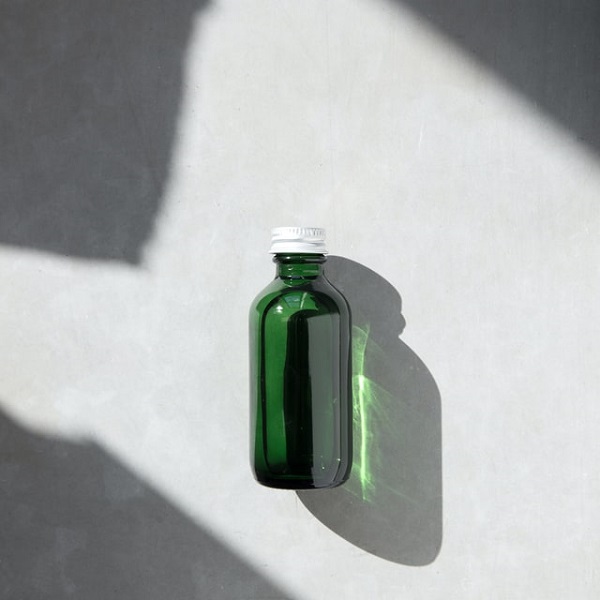
10 Ways to Repurpose Cosmetic Containers
As we all know, how we are in love with organic and natural cosmetics packaging solutions with no cruelty. Meanwhile, we tend to overlook the beautiful containers in our storage boxes. Most of us are looking for ways to reduce our carbon footprints though.
If you’re a make-up fan like us, you’ll know how easy it is to pile up a mountain of cosmetic packaging.
But if we find new uses for these containers, you not only save you money but also protect the environment!
Let us show you how to reuse your old cosmetic packaging below.
#1: Use old lip balm containers to save your bobby pins
You know what? Recycling old cosmetic containers and other types of containers is actually very simple.
For example, do you have old lipstick boxes? And will you easily lose your bobby pins? Well, an old lipstick container will keep your pins inside the space. Sometimes, it’s really helpful especially on hot days when you want to keep the cooler a bit.
So, think twice before throwing your lip balm container away. They can be your bobby pins saver for the other days ^ ^
#2: Turn your compact containers into a jewelry storage box
Do you think it hard to recycle an empty compact container?
In fact, one way to reuse this make-up container is to use it for jewelry storage. Instead of scattering your jewelry randomly and end up difficult to find them back, compact containers just help you out.
Moreover, you can also use them to keep your elastic bands, earrings, and other cute little stuff.
They’re small enough to put in your wallet for the ladies’ night. And big enough to hold the small necessities for an enjoyable journey at the same time
#3: Make vases with perfume bottles
Many people like to collect empty perfume bottles, and the obvious reason is, they are truly beautiful.
And sometimes, just too expensive to give up.
So, for all these reasons, why should we throw them away?
Besides, you can always turn these cute pretty bottles into vases. It is definitely a good way to add value to your home/office decoration.
#4: Make Travel-Sized Containers
Reduce your travel dollar store to resize cosmetic containers for travel. An old face hot pot can carry three ounces of moisturizer.
#5: Create your unique brush holder with shampoo bottles
Shampoo bottles are the most versatile containers. You can extend them easily with a short tap.
So, cut an empty shampoo bottle from the bottom part, say a few inches. Then, blunt the sharp edge with a knife/scoop.
Look! Your distinct and unique make-up brush holder just comes out this way!
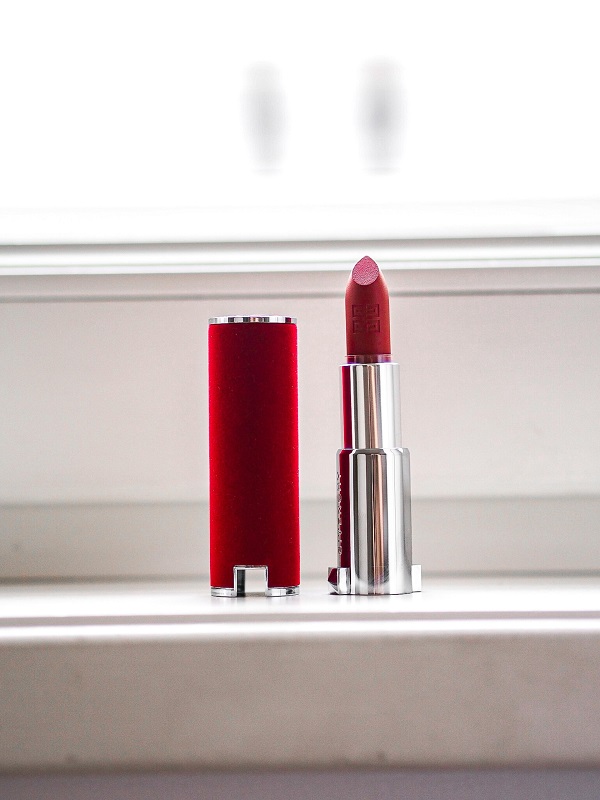
#6: Transform old compact containers to be perfume holders
Have you ever thought that your compact containers can hold your perfume discs? Now, we’re going to tell you how to do it.
And you can do this DIY by the following easy steps:
- tsp beeswax pellets (6 grams)
- 5-40 drops essential oil
- TBSP carrier oil (around 14.5 grams)
- Put oil and beeswax in a glass bowl on a small pan filled with water. Heat it for a while, until you see it melt completely.
- Pour the liquefied oil into a clean and empty container and cool for a few minutes.
- Stir the essential oil gently into the mixture of liquefied carrier oil and beeswax.
As solid perfume solidifies, the fragrance enhances. When using, you rub your fingers on the solid perfume, then apply it to your wrist.
Interesting to know, homemade solid perfume can last for 12 months.
#7: Make a D.I.Y. Sewing Kit with cosmetic containers in large sizes
Our favorite hotel freebies can be beautiful sewing tools. This is because it seems to contain all the sewing tools you need!
And the good news is, you can make your own sewing toolbox freely by reusing the make-up container!
For example, loose powder boxes and even larger eye makeup containers can hold sewing necessities. And that includes:
- small scissors
- several pins
- safety pins
- needles
- threads of various colors
#8: Get your old lipsticks to be pill containers
How could this happen? It’s very easy indeed!
To do so, just simply scrape the remaining pieces of lipstick and then inject it in the daytime.
Compared to those dull cosmetic boxes, using old lipstick can make gorgeous makeup boxes, which are excellent alternatives.
#9: Generate the beautiful plant jars
Cosmetic containers as small as ink cans or even eggshells are perfect materials for making plant jars.
We just need to fill with potting mixture, moss, mini forget-me-nots, or Viola. However, we usually choose plants with fine roots and water in these jars.
Before these tips, you might not ever think your little cosmetic jars could be so useful!
#10: Revive the old domestic containers and create your D.I.Y. skincare portfolio
How to propel your recycling work to the next level? Forget about expensive containers and use what you have.
Think of making your own skin cleanser? For example, homemade apple juice lotion, DIY cleanser, and facial oil moisturizer. Feel free to use your pretty empty cosmetic containers to increase the recovery rate.
Recycle your cosmetic packaging
If you feel little interested in reusing, you can recycle the cosmetic containers!
Strictly speaking, reorientation (adapting to different purposes) is not for everyone. Some containers are not suitable for reuse. For example, those fingernail polish containers are not easily reused due to their toxic properties and harmful chemicals.
So, we can only recycle them.
What are the benefits of recycling? We can tell a bunch here, including:
- reduce waste in landfills
- save energy
- save natural resources
- prevent pollution by reducing the demand for new raw materials
- and more
We can convert the waste into reusable materials by some easy handy recycling jobs.
But sometimes, recycling can remain a huge effort.
Fortunately, some of the world’s best-known brands have already figured this out. Here are some brands whose recycling efforts have raised several levels:
- AVEDA – Aveda works with G2 Revolution, a recycling company. They allow customers to bring Aveda packaging and accessories to the store to recycle. And at least 85% of Avida’s haircare bottles and cans contain completely recycled materials.
- LE LABO FRAGRANCES – offer discount system. If the old customers buy perfume again, they can enjoy a 20% discount.
- MAC – MAC accepts its main package through the back-to-m.a.c. program. When you return 6 MAC primary containers to any MAC counter or Mac cosmetic online. You can get free MAC lipstick. You can choose the color number for this lipstick.
- GARNIER – They work with TerraCycle. Garnier accepts Garnier’s empty bottles (bottles, caps, hairspray tubes, hair gel triggers) and delivers them free of charge.
- TENOVERTEN – This manicure salon works with CalthWe, then reclaims the remaining nail polish bottles, and parts such as plastic caps and brushes.
- CÔTE – A salon in Losangeles, works with Environment Services Inc to recycle nail polish bottles. And the introduction of preferential policies, regular customers can enjoy a 10% discount when they buy again.
- LILAH B – The brand offers each minimum package. This allows customers to send back old beauty products of any brand for free
Tips on Recycling Cosmetic & Makeup Containers
Nowadays, many companies and organizations are willing to reuse and recycle cosmetic containers. Penny & Pine, for example, is an environmentally friendly and sustainable company.
Together with the best brands in the world, our advice is not limited to products. Do other brands you like share the same values?
Here’s how to find your favorite brand and judge if it supports your campaign:
Tip #1: Find out the recycling program by the container’s company
Many of the world’s most famous (and expensive) brands usually offer you free shipping and free gifts.
Well, you can check out their product packaging and website plans, partners, and some other details. And see if these companies have recycling plans.
Tip #2: Recycle those caps
Bottles and skincare products are made of hard plastic, making them difficult to recycle.
That’s why so few people are willing to accept plastic cap recycling programs.
If the company does not accept plastic cap recycling, please send your plastic caps to the bottle cap recycling company.
Tip #3: Clean and wash the containers before putting them into the recycling bin
Cleaning up these containers is just a small act.
However, this small move can play a role in protecting the environment.
Make the world different.
Tip #4: Know more about what you can recycle by asking your recycling company
In fact, you can recycle more than you think! So you have to ask around.
As technology evolves, many recycling programs are looking for more ways to reduce waste in landfills. You only need to make a phone call or do a quick Google search to find out what recycling is available. When we pursue beauty, we don’t have to destroy the environment.
So, please reuse cosmetic containers, provide them with a new rental life, or walk a mile to bring the containers to the recycling bin! You only need such simple steps to protect the environment. This is a good gift we can give ourselves and the environment!
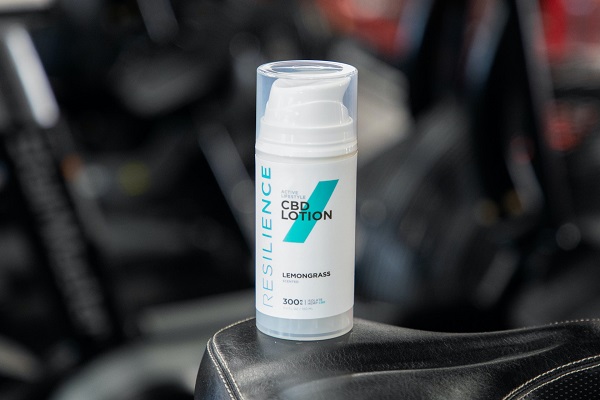
The safety of cosmetic packaging
People’s requirements for new products are getting higher and higher, as evidenced by the work done by the competent authorities, the cosmetics industry, packaging manufacturers, and industry associations.
According to Annex I of the Regulation, the cosmetics safety report must include detailed information about the impurities, traces, and information of the packaging materials, including the purity of the substance and mixture, the evidence that is technically unavoidable in the case of trace amounts of banned substances, and Relevant properties of packaging materials, especially purity and stability.
Plastic packaging for cosmetics does not have to comply with the regulations 10/2011, but the most practical option may be to adopt a method similar to that of food and assume that the raw materials must be suitable for food contact during the packaging design process.
Only when all agents in the supply chain comply with legal requirements can it be possible to guarantee the safety of packaged products.
The packaging in direct contact with cosmetics is called primary packaging. Therefore, in terms of cosmetic safety, the characteristics of the material in direct contact with the product are very important.
Information about the characteristics of these packaging materials should be able to estimate any potential risks.
Relevant characteristics may include the composition of packaging materials, including technical substances such as additives, technically unavoidable impurities, or substances that migrate from the packaging.
Since the most worrying is the possible migration of substances from packaging to cosmetics, and there are no standard procedures available in this field, one of the most widely established and accepted methods in the industry is based on verifying compliance with food contact regulations.
The materials used to make food packaging include plastics, metals, alloys, paper, cardboard, printing inks, varnishes, rubber, organic, glass, and ceramics.
According to the food contact protection framework, these materials and articles are subject to the regulation of 1935/2004, which is regulated by the standard.
These materials and articles should also comply with quality assurance, quality control, and documentation systems, and be manufactured in accordance with Good Manufacturing Practices (GMP).
The requirement in the specification 2023/2006(5) in the framework specification also stipulates some specific material formulation measures to ensure the established basic principles and measures.
The most specific material that has been formulated is plastic, such as No. 10/2011(6) and Xi Suo Lin.
Regulation No. 10/2011 specifies the requirements to be met by raw materials and finished products. The key information for information transmission 10/2011 in the supply chain).
Regulation 10/2011 also stipulates the limit on the number of substances that may be present in the final product or may be released into the food (migration) and stipulates the standard of the test and migration test results (requirements for the final product).
In terms of laboratory analysis, in order to verify compliance with the specific migration restrictions specified in 10/2011, the steps to move the laboratory include:
1. The packaging manufacturer must provide a Declaration of Compliance (DoC) for all plastic raw materials used in accordance with Appendix IV of the specification 10/2011.
2. Perform an overall migration test to verify the scope of the material (if applicable. In overall migration, all non-material substances in the food can be migrated) without identifying a single substance.
These simulant tests differ in quantity and contact form (such as immersion, surface contact, filling).
The total migration limit is 10mg/dm2 contact exposure. In contact with the baby food during the contact period, the amount of the food simulant is 60mg/kg.
3. If necessary, whether to carry out and test the reserved/or specific migration volume to verify the restrictions on the relevant substances.
Specific migration tests are carried out in accordance with the UNE-CEN/TS 13130 standard, as well as internal test procedures developed by the laboratory for the analysis series.
After reviewing the DoC, decide whether it is necessary to conduct a test. Of all the permitted substances, only some have restrictions and/or specifications.
Those with specifications must be listed in the DoC to verify compliance with the corresponding restrictions in the material or final product.
The unit of indicates the specific migration result is the trace amount of the substance contained in the simulant per kilogram.
In order to design overall and specific migration tests, simulants and supply conditions must be selected.
Conclusion
Today, we’ve discussed a bunch of things about cosmetic packaging in this article.
- The importance of cosmetic packaging
- Various types of cosmetic packaging
- Cosmetic packaging labels
- Design ideas for cosmetic packaging solutions
- How to make cosmetic packaging more eco-friendly
If you like it, don’t forget to share this article with your friends. And keep your eyes on our latest blogs.
A Valuable Guide to Personal Care Packaging
Introduction
Personal care packaging is really important especially for suppliers of personal care products.
Today we are going to tell you why and how to create attractive designs with a bunch of examples on the market.
And sure, we’ll also talk about the market and trends of the industry. If you’re inside the personal care packing industry you definitely don’t want to miss it.
Why packaging is important for personal care products?
To better understand the importance of personal care packaging, we need to know the importance of personal hygiene.
It’s important for both physical and mental health.
Good personal hygiene habits help to lower the risk for diseases, as your body is exposed to bacteria 24&7. If it’s not cleansed through time these bacteria can multiply increasing the risk of infections and other health problems.
Mentally, personal hygiene is important for self-esteem.
Being clean and well-groomed can make you feel more comfortable and confident on your own skin. While being dirty is not only a risk for your health, but it also creates feelings of discomfort and anxiety.
That’s why we always need to maintain a good personal hygiene routine.
What does a good personal hygiene routine look like?
We are mostly aware one must have a daily personal hygiene routine. And it’s important to the start, during, or the end of a day.
Here are some important factors for personal hygiene.
Handwashing
Our hands are the most susceptible part of our body to be around bacteria.
This reason is simple, we use our hands constantly in our daily life.
That includes holding your phone, pen, opening a door, or going to the bathroom. Thus, washing our hands frequently with water and soap remains one of the keys. For example, wash our hands in the following situations:
- Before eating or cooking food.
- Before holding a baby.
- After visiting the toilet
- After coughing or sneezing
- And the cases after touching the animals
Dental Care
Caring for your teeth can not only benefit your appearance but also avoid things such as gum disease.
Also, it helps with problems like bad breath, tooth decay, and many other infections.
So, always remember to
- Wash your teeth a minimum of twice a day, mostly after eating and before going to sleep.
- Floss the teeth daily to clean the spots that a regular toothbrush cannot reach.
- Store your toothbrush in a clean and dry place.
- Change your toothbrush regularly to avoid bacteria accumulation.
Bathing
Taking a bath daily is important as well, you can do it better by
- Bathing daily with soap and warm water prevents the body to have an odor or for bacteria to stick around.
- Always remember to dry yourself after showering to avoid infections as Athlete’s foot.
- Shampoo and condition your hair at least once a week to keep your scalp clean and prevent head lice.
Laundry
Germs and dirt can cling to your clothes too.
So, it’s also important to wash your clothes regularly to remove any germs or impurities.
Also, if you’re ever exposed to a patient, the bacteria can also stick in your clothes go home with you. In this case, adding antiseptic liquid or disinfectant will make your clothes clean and fresh before you wear them.
Personal hygiene may look hard to do. But once you’ve got those habits, you’ll find it as easy as eating and drinking.
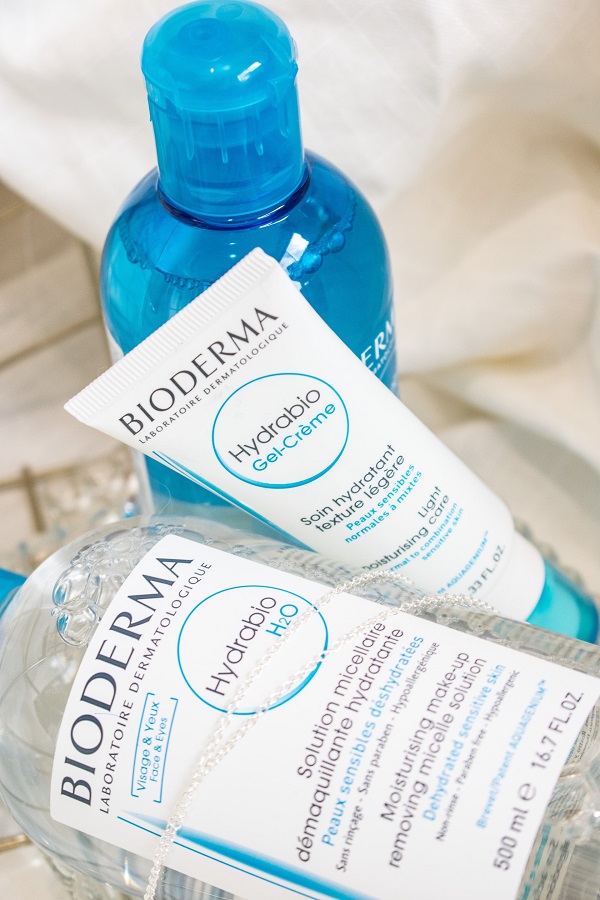
Personal care packaging is everywhere in our daily life.
As you can tell, high-quality personal hygiene involves a series of personal care products and items. So, think about the following scenario. If the personal care products come with ugly packaging or give you a dirty feeling, will you buy them?
We are sure you will know the answer especially when you’re inside the personal care industry.
Thus, personal care packaging remains critically important because it leaves your customers the first impression.
There are times you might leave the product on the shelf because of the personal care packaging. While you must have the experience that you decided to buy the cream because it stood out among the many. And the reason is easy, the price and functions remained the same. However, the attractive personal care packaging just caught your eyes. If all these things come with bare/no personal care packaging. Too hard to imagine, right?
Now that we’ve learned the importance of personal care packaging for personal care products, let’s look at the market.
The global personal care packaging market
Personal care packing is one of the essential features of the personal care industry.
It not only creates a physical visual appeal but also contributes to increased the value of the products. Moreover, many companies constantly invest in improving the personal care packing ideas for their products. For example, haircare, skincare, deodorants, and many others.
Currently, the market for personal care packing has a value of 24.49 Billion USD.
And the market expects to reach 31.9 billion USD by 2025.
Plastics remain the key material for the personal care packaging industry
So, personal care packaging remains a significant part of the packaging market, since the industry is in rapid and continuous growth. The personal care packaging solutions may involve the most varied packaging requirements compared to all other sectors though.
Take the materials as an example. Metals, glass, paper, and plastic, all these items make containers with different shapes and sizes determined by the product.
Among the many, plastics remain one of the primary materials used for the personal care packaging industry. This is a result of their nature.
Plastics can form containers, flexible pouches, caps, closures, and nozzles.
In the meantime, plastic tubes are the most used form for personal care packaging in the personal care industry. It can store liquid-solid and semi-solid materials and dispense products.
Also, tubes provide better protection for the product, when compared to other forms of containers.
The personal care packaging market in regional sectors
Asia has a rise in disposable income, along with the growing popularity of personal care packaging products.
A result of the growth of skincare products in particular.
Natural to organic ingredients would be the primary factors driving this growth. Through time, there are many socio-demographic changes in these regions. This includes the following countries like Korea, China, Japan, and India.
The growth of personal care product demand then results in the surging demand for the personal care packaging market.
On the other hand, oral care is also gaining benefits as consumers comprehend the importance of preventing oral health problems.
At the same time, most toothpaste brands in the US gained popularity.
In Italy, about 76.3% of consumers suffering from diabetes talked about their experience. That is, they brush their teeth after each meal as they are more likely to suffer from periodontal disease. The disease results from infection to the gum and bone that hold the teeth in place.
Recently, the spread of COVID-19 has greatly impacted the market by disrupting the supply chain. Many massive factories close down because of the pandemic situation.
Subsequently, companies providing personal care products are facing difficulty to find personal care packaging solutions for their products.
In many countries, suppliers of personal care products are difficult to function. So, the governments put the personal care industry under the essential category, so that they can function during the epidemic burst.
The market for personal care packaging in Australia
The industry structure in Australia is changing. Concerns for a healthier lifestyle have become a popular trend.
As a result, the demand for personal care packaging is greater than ever.
And the awareness of environmental protection has raised among the customers in recent years.
Thus, many manufactures start to develop and expand new personal care packaging solutions to change their materials. From non-eco-friendly to sustainable materials such as glass, recycled cardboard.
And that involves the compostable personal care packaging as well. Organic materials like peanuts, sugarcane, starch can fulfill the expectation of the customers.
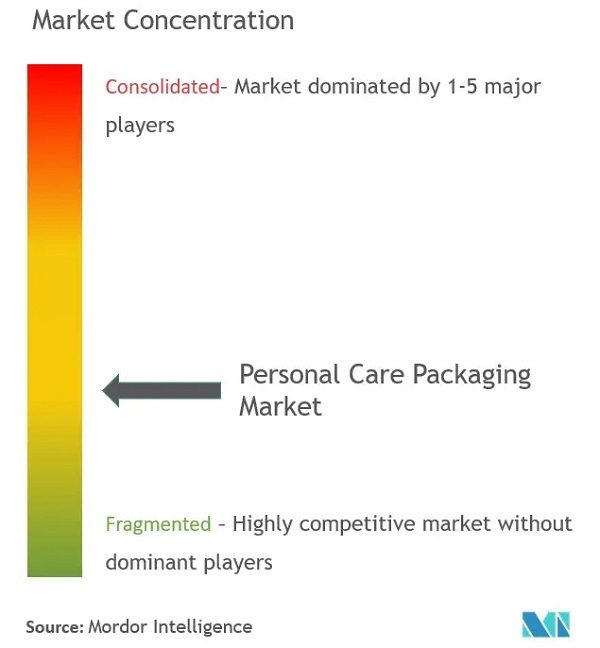
Find more about the current Australian packaging market.
The big players on the global personal care packaging market today
Amcor Plc
The Australian Amcor Group is a multinational packaging leader in the world.
The Group develops and produces a variety of flexible and rigid packaging solutions. And their specialties include closures and cartons.
The packaging product by the Amcor Group is common to find in many industries, including:
- food & beverage
- pharmaceutical
- medical device
- home
- personal care
- and more
In the year 2018, Amcor has pledged to develop all its packaging products to be recyclable or reusable by 2025.
Also, it has joined the US Plastic Pact, a collaboration led by the Recycling Partnership, World Wildlife Fund (WWF), and Ellen MacArthur Foundation.
More recently, Amcor and the US Plastic Pact have been working together to create a path forward to a circular economy for plastic in the US by 2025.
So far, the US Pact convenes over 60 brands NGOs, retailers, and government agencies to work out innovative solutions for packaging products and business models.
The Amcor Group strives to be a role in responsible packaging solutions and minimizing waste in the environment.
The headquarter of Amcor is in Australia. With around 48,000 staff, Amcor has generated $13 billion in sales with operations spanning across more than 40 countries.
And it is making progress towards its commitment by the increased use of recycled materials. That will drive greater recycling of packaging around the world.
AptarGroup Inc.
Based in the US, AptarGroup, Inc., is a global manufacturer of consumer packaging and drug delivery devices.
Today, Aptar has manufacturing operations throughout 18 countries.
Other than manufacturing, it is also a global leader in the design of active packaging solutions. They are making meaningful packaging solutions in the looks, health, homes, and lives of millions of people around the world.
The innovative solutions by Aptar’s are common to find in a variety of end markets as followed:
The headquarters of the Group lies in Crystal Lake Illinois. And it has 14,000 employees in 17 countries currently.
The history of Aptar began in 1946 as Werner Die & Stamping in Cary and formed the Group in 1992.
Many companies in the biotech and pharmaceutical industries adopt Aptar’s devices for different medicines.
In July 2019, the FDA approved Aptar Pharma’s Unidose Powder System as the first intranasally-delivered, needle-free rescue treatment for severe hypoglycemia.
During the COVID-19 pandemic in 2020, the Group invested to accelerate its molding equipment and assembly machines for pumps.
As always, Aptar creates innovative packaging technologies to build brand value for customers through design, science, and insights.
Today, the stock of Aptar lists on the New York Stock Exchange. And it was named to Barron’s list of 2019’s Top 100 Most Sustainable US companies.
Gerresheimer AG
Gerresheimer AG manufactures packaging products for medicine and drug delivery devices.
As you might tell from the name, the headquarters of the company is in Germany.
With the former name Gerresheimer Glass AG, glass and plastics packaging solutions remain their specialties today. And the packaging products by Gerresheimer AG serve widely in the personal care, cosmetics, and pharmaceutical industries.
Currently, the company has operations in Europe, Asia, and the Americas for its production. That includes 6 production facilities in China, 7 in India, and 5 in South America.
Today, you can easily find Gerresheimer’s footprints in the fast-growing emerging markets.
As a result of the COVID-19 pandemic, the global pharmaceutical business has developed well. And this also boosted the business of Gerresheimer.
Moreover, the company will continue to increase its investment in quality and capacity as they did in 2019 and 2020.
Accordingly, Gerresheimer has generated a revenue of 363 million Euros in the second quarter of 2020. That marks 4.6% organic growth in the core business compared to the same period of 2019.
Albéa SA
Albéa SA is the leading supplier in plastic and laminate tubes, mascaras, lipsticks, and samplers. And it offers the largest range of packaging solutions for personal care and beauty industries in the world.
You can find their footprints in compacts, lip gloss, fragrance & lotion caps, promotional items, and accessories as an expert.
Over 50 years, the innovative packaging design and world-class manufacturing by the company have acquired customers’ hearts throughout the world.
At the moment, the company has 12,000 people serving various brands in 60 countries across the world. You can find their 32 facilities in Europe, the Americas, and Asia.
By the year 2019, Albéa’s global sales have reached a total of 1.2 billion USD.
Silgan Holding Inc
Silgan Holding Inc is a leading manufacturer of metal containers in Europe and North America.
The company’s products lines include:
- plastic containers
- steel and aluminum containers
- plastic and metal closures
- dispensing systems
And you can find the footprints of Silgan Holding’s products in the following industries:
- personal care
- beauty
- food for human and pets
- beverage
- health care
- pharmaceutical
- household
- garden
- and more
Besides, in the market of North America, the company is now the largest manufacturer of plastic and metal food containers. And the market share of their products takes over half of the market in the year 2019.
The products of Silgan Holding have served various branded clients. Listerine, Campbell’s Soup, Del Monte Fruits and Vegetables, and Friskies Pet Food are all their clients.
The company’s goal is to increase shareholder value, reduce operating costs and build competitive sustainable solutions.
Moreover, Silgan Holding is an expert in acquiring and integrating. Since the establishment in 1987, Silgan has acquired 36 businesses.
As a result, they have created a net sale of $2.47 billion in 2019.
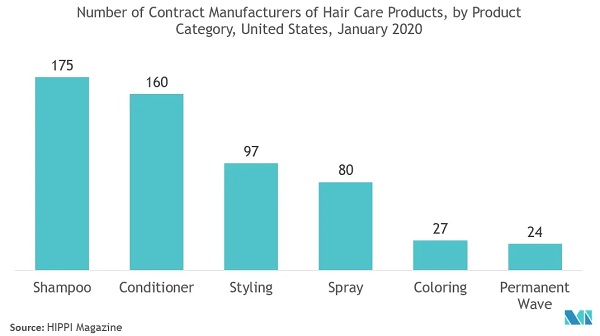
The personal care packaging trends
Haircare is likely to grab a significant share over the other personal care products
Haircare retail is a highly known and competitive sector.
As seen, haircare companies mostly rely on packaging distinction to forge a company and customer connection.
Impressive packaging ideas will make your brand stand out among your competitors in the personal care packaging market.
That’s why more and more hair care brands invest more money in packaging solutions for their products.
Some adopt matte and gloss printing techniques by increasing sensory elements into their packaging to attract consumers.
Many recognized Japanese personal care brands are trying to propel their presence in Europe.
Guhl, for example, the Tokyo-based haircare brand by Kao’s, start to tap into eco-friendly products and sustainable packaging solutions.
Typically, their personal care packaging comprising 50% recycled Polyethylene terephthalate (rPET) has managed to establish their presence in Europe. Countries like Germany, Austria, Switzerland, and the Netherland are in great demand of that.
Furthermore, the condition bottles used by Kao’s are fully recyclable thanks to the full use of polypropylene (PP).
Development of Traditional personal care Packaging
There are some personal care packaging that is used for a long period.
Bottles
Bottles are a versatile type of packaging used for a wide range of personal care products. They can be made from different materials such as PET, HDPE, and glass, and come in various sizes and shapes.
PET bottles are lightweight and commonly used for products such as shampoos and body washes, while glass bottles are often used for high-end skincare and fragrance products.
In 2020, the personal care packaging market is projected to be worth USD 43.11 Billion by 2030, registering a CAGR of 7.35% during the forecast period (2022 – 2030), The market was valued at USD 28.68 billion in 2021.
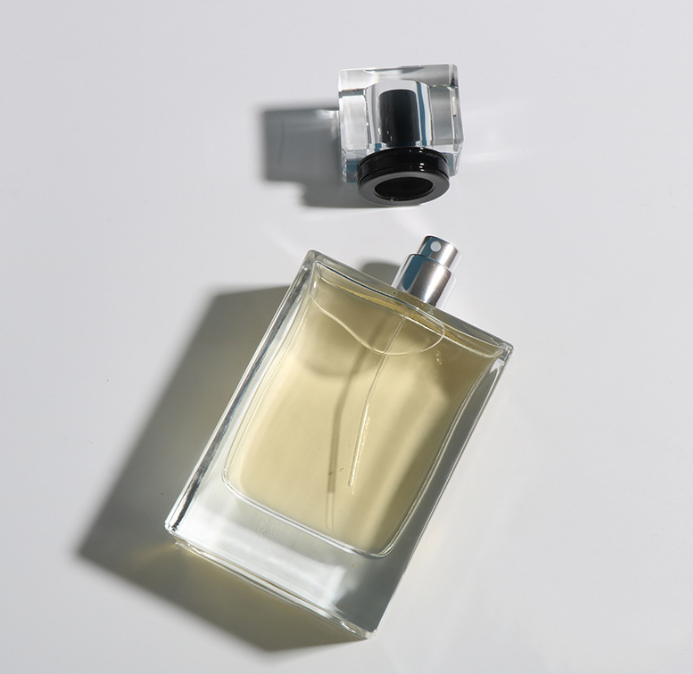
Tubes
Tubes are a convenient type of packaging for personal care products such as toothpaste, hand cream, and sunscreen.
They are typically made from materials such as PE, PP, and aluminum and feature a screw-on or flip-top cap.
According to a report by Technavio, the global personal care packaging market for tubes is expected to grow at a CAGR of over 4% from 2020 to 2024.
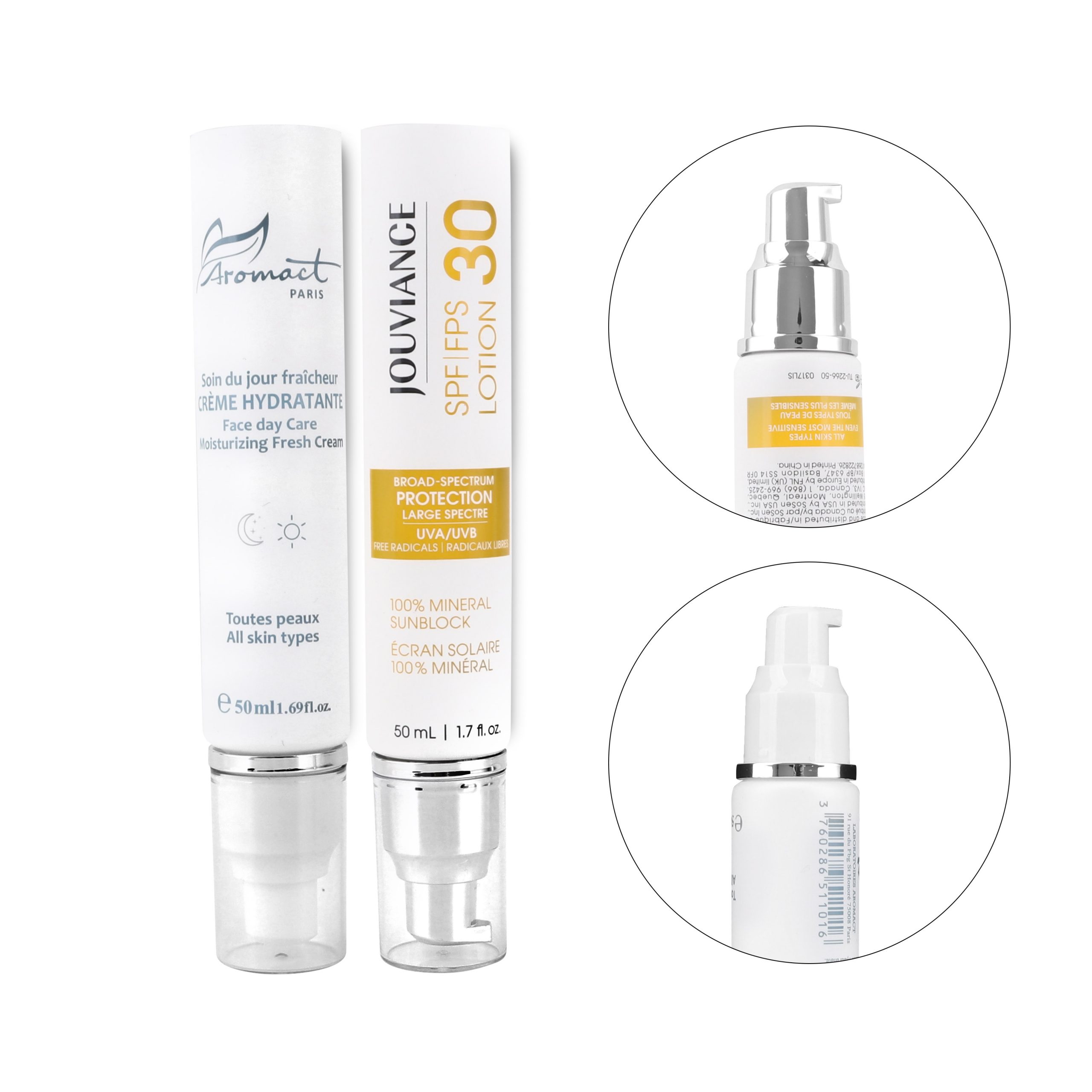
Pumps(Bottle variation)
Pumps are commonly used for personal care products such as liquid soaps, lotions, and hair care products.
They feature a dispenser that is activated by pressing down on a button or twisting a mechanism. Pumps are typically made from materials such as PP and PET and come in different sizes and shapes.

Spray
Sprays are a popular type of packaging for personal care products such as perfumes, deodorants, and hairsprays.
They feature a nozzle that sprays a fine mist of the product. Sprays are typically made from materials such as aluminum and PET and come in different sizes and shapes.
Spray

Jar packaging is hitting the game
Jar packaging is common to see for hair care products.
And there are a variety of jars on the market today, such as single wall and double wall, acrylic, and metal shelled. They can create an elegant appearance for hair care products since these jars can easily hold and sustain large volumes. That way, products like gels, creams, waxes, and pastes can all enjoy the benefits.
As a result, the trend also spreads to other personal care packaging today.
Moreover, these low-profile jars of plastic and glass come in travel-size packaging. And they are suitable for creams, lotions, and gels aiming at the high-end market.
For instance, Herbal Essences partnered with TerraCycle to develop a recyclable shampoo bottle composed of 25% recycled beach plastic in 2019. They are going to adopt this bottle for conditioner products as well.
Moreover, L’Oréal and ProAmpac developed a unique and sustainable packaging by adding a “Packing & Environment” policy since 2007. They achieved the goal by reducing packaging and volume weight with recycled materials or materials manufactured using renewable energy.
Besides, PB Creative, the award-winning brand design agency worked with Toni & Guy. They developed a new set of packaging designs to appeal to more “mature” consumers. And they relate closely to the market target of the brand.
PS: Toni & Guy is an international American chain of hairdressing salons.
Impact of the Covid-19 pandemic
The COVID-19 pandemic has had a significant impact on the cosmetic packaging industry, both in terms of supply chain disruptions and changes in consumer behavior.
Supply Chain Disruptions
One of the major impacts of the pandemic on the cosmetic packaging industry has been the disruption of global supply chains.
Many countries implemented restrictions on international trade and transportation, leading to delays and shortages of raw materials, packaging components, and finished products.
This has led to increased costs and longer lead times for manufacturers and suppliers.
Consumer Behavior
In addition to supply chain disruptions, the pandemic has also caused changes in consumer behavior.
With lockdowns and social distancing measures in place, many consumers have shifted their focus to self-care and at-home beauty routines.
As a result, there has been an increased demand for certain types of cosmetic packagings, such as skin care products and DIY beauty kits.
At the same time, the pandemic has also led to a decrease in demand for certain cosmetic products, such as makeup and fragrance, as consumers have reduced their use of these products due t working from home and reduced social interaction.
North America would probably be the biggest shareholder
The circumstance in the US
The US is a major leader in personal care products.
A study made by the Brazilian Association of personal Hygiene shows that the US had the most valuable market in the globe in 2018. And that generated a profit of 89.5 billion USD.
Now, the personal care market obtains a growing demand, as a result of premiumization in line with the global trend.
That also leads to innovative and premium packaging.
In the recent past, Estee lauder is working with another leading cosmetic line Bobbi brown. They launched an Art Stick Liquid Lip in a new color cosmetic container that facilitates the way that liquid lipstick is applied.
Currently, the US is also increasing the use of e-commerce channels for personal care products.
Natural beauty products, in particular, are experiencing more demand, as a result.
The US Government has proposed a new policy to regulate products. Personal care products need approval to be labeled as natural and sustainable before being placed on the market.
The circumstance in Canada
As for the personal care industry in Canada, the government has been playing a significant role in development.
As well as the US, Canada focuses on personal care innovation in the industry.
Studies show that the packing industry estimates to rise from 50,497 million units in 2018 to 52,911.4 million in 2023. Along with the promotion of academics about personal care products, which also contributes to the growth in the industry.
This is going to help the Canadian personal care industry to revive. The personal care industry in Canada is fragmented, but several SMEs might thrive thanks to the policy.
Moreover, this will also boost the growth of the personal care packaging industry during the forecast period.
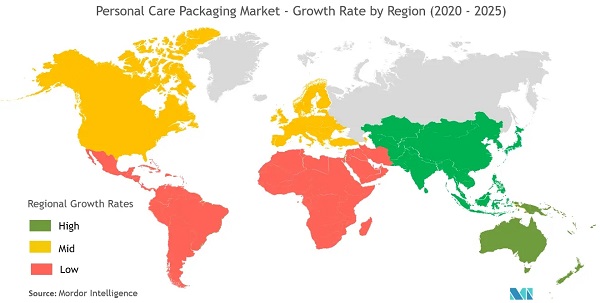
E-commerce leads the new marketplace
As mentioned above, e-commerce is very much driving the future of personal retail. That means personal care packaging solutions must adjust to better meet the new requirements.
both for appearance and resistance to damage during transportation.
The personal care market was once an industry only limited to physical stores. But these years, technological advancements had improved massively.
In fact, a big concern for many personal care players is protecting their signature style and branding.
Packaging appearance, just like fashion, suffers from ‘dupe culture’ and PrimePac will advise you on the best ways to develop your pretty packaging designs while protecting them from your competitors.
Feel free to tell us your needs and get a quote for the packaging solutions.
Besides, the personal care industry is moving towards e-commerce simply because consumers are striving to have digital experiences.
Also, many other platforms can provide top tips for packaging beauty goods for e-commerce.
And PrimePac is an example in Australia. With rich experience in the packaging industry, we can help you promote your brand and products into popular e-commerce marketplaces.
The pain points:
User experience has become more and more the key role to success.
But sometimes, micro-aggressions are preventing a product from being 100% pleasurable for a consumer.
For a while, the products in the personal care industry came with simple and often monotonous designs.
However, personal care retail sites with an optimal visual will definitely attract more customers. So, a change in the packaging industry is essential to meet the various requirements of a customer today.
Therefore, we always delve into the packaging designs. It is because we do know it can result in a greater user experience with total satisfaction.
Our goal is to make personal care packaging individual, inclusive, and accessible to every customer.
Concerns about sustainability
How is it going to impact the sustainability of our planet? This has been one of the major dilemmas.
And it remains a leading issue for consumers and brands inside this industry.
Plastics are currently the main talking point due to the series of current issues as you can tell. Ocean plastics, for example, have been a pain point for Aussies.
However, “not all plastics are equal”. In other words, plastics can also be sustainable if we use them in the right way.
And there are benefits in recyclable/recycled plastic, bioplastics, and compostable plastics.
Many studies and reports showed us how to make plastic packaging sustainable.
Also, experts have pointed out the possibility that “A product lifecycle won’t cost the earth”. We just need to understand and practice the topic “how to upcycle in packaging”.
Furthermore, Eastman’s Renske Gores talked about chemical recycling. She explained how to recycle chemicals. And the chemical recycling trend would represent the future of recycled materials. Hence, benefits plastic packaging in the personal care industry.
PS: Renske Gores is a veteran specialized in personal care packaging. Her current role is as an experienced participant in sustainable projects in bio-sourcing.
Nice look
Apart from being sustainable, products with a beautiful look in the packaging will inspire potential customers. As we discussed earlier, the quality of packaging for personal care products serves part of the whole user experience.
Thus, a packaging solution with beautiful looking would be a plus and make you stand out among your competitors.
Customization and individualization
We are now seeing a strong desire for individualization and customization by customers.
The desire to fulfill all customers’ desires in packaging for personal care products. From the shoe brands allowing you to upload your arts for your shoe designs to the billion-dollar market for cell phone covers.
In fact, there is a growing expectation from the customers.
As a customer yourself, you want your vendors to treat you as an individual rather than the general. That’s why individualization remains the shining star at the moment.
Of course, personal care packaging is not an exception.
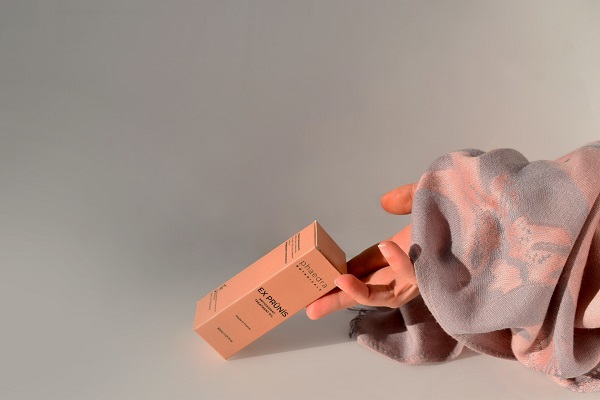
How to start your packing design?
If you own a business of personal care products, the potential for some serious stuff is there.
Also, you want to bring your amazing ideas to your products to attract customers.
To achieve that goal, you will have to find a way to break through the clutter. As some designers say, make your packaging jump off the shelf at Walmart. And tell your customer “THIS is the thing only for you!”. The smart way to do that is through your packaging solution.
As we mentioned above, your packaging is the first thing to turn the passers-by into your customers.
Unless your packaging grabs their attention, or they’re likely to gather dust on the shelf rather than go home with customers.
But how do we create a kind of packaging to make your target customers crave for it and scream “THIS IS WHAT I WANT?!”
Here are a bunch of tips for your reference before hatching out your great ideas.
Important things prior to your design
Before we start designing our packaging solution, there are several points we have to consider:
Know your target customer
Developing a clear and understanding target can be the most important thing you need to do.
And that should come before choosing your packaging and even the products.
In other words, it remains critical to know who we’re designing for. And we need to find out the answers to the questions like these:
- Are our customer’s masculine sportsmen? Or those young gentlemen who like to drinks and sit before the TV dreaming of themselves to be supermen?
- Is that a lady picking for bargains among the shelves in the supermarket? Or a lady who cares more about the quality and will pay more for the product lifespan?
However, many new business owners share a common mistake. They might think a product can fit everyone’s taste.
But apparently, it doesn’t work that way.
Just like, you probably don’t want to wear the dress of your grandma to go on a date.
As we said, individualization and customization remain the key to success. Particularly, the case in personal care packaging requires more elements that involve the word “PERSONAL”.
Therefore, defining your target customer will definitely increase the sales of your product.
Find out the personality of your brand
Your brand’s personality remains as important as the identity of your target customer.
Are you working to be a KIA, Toyota, Mazda, Mercedes-Benz, or Porsche?
The personality of your brand brings you, customers, with the same or similar preferences. People always prefer to stay closer to those who share similar characters. And you can well see that also in their shopping habits.
Again, your brand’s personality is your brand’s identity. So, figure it out and get the hearts of our target customers before the design work.
Think about how your ideal customers will buy your products
How your target customers buy your products is the key factor in how and where you’re going to sell.
For example, if your target customers prefer to buy online, then you might open an online store. While your sales lie in the offline stores, you will probably invest more to develop the offline channels then.
On the other hand, if you’re targeting bulk sales at a time, you might prefer wholesalers rather than retailers.
So, think it through earlier is better than later.
Gather your team and brainstorm the ideas
Great ideas are often a result of integration after a series of meetings and discussions.
So, a few brainstorming before start designing your packaging is a wise choice. Bring your creative team members and discuss the plan in detail.
Jump out of the box and be brave to use images and colors during the discussion. And these elements are also important keys to reflect your brand personality.
Last but not least, always remember to keep your team inspired during the process.
How to do this? Make use of the existing examples on the market today.
Get some inspiration from the trends
Remember the packaging trends we talked about earlier?
Since you’ve got the principles, we’re now going to talk about solid examples.
We need to keep in mind, the trends are like a mirror of the preferences and behaviors of customers. Thus, it’s important to keep the packaging design up-to-date.
Here are some personal care packaging instances that we are seeing everywhere today.
Unique customs fonts
Unique customs fonts modify the words on your packaging.
A well-designed distinct font will make your brands stand out from others.
Nowadays you can see many types of fonts designed for the packaging of different kinds of products. Nearly all brands have their own special fonts.
Font design has become a must for designing packaging. It tells customers who you are as a brand.
However, hand lettering is not used as much because it seems ordinary. You need to design a font with a clear style. For example, design a font that arouses a retro vibe or a font that shows a bold attitude. Make sure the font sticks in people’s minds.
Intricate line drawings
If you are a detail-oriented person, you will find intricate line drawings are also a personal care packaging trend.
It’s because intricate line drawings form lots of details.
Although they have no words, they show what’s the product behind the personal care packaging. You can know something about the product. Intricate line drawings are common in personal care packaging, usually in the form of a beautiful flower.
They may cover the whole product package or just cover part of the package. The perfect quality of line drawings is that you can change the lines as you like. For example, you can make your line drawings less feminine, or more elegant, or cleaner. It’s easy to find out the line drawings that most fit your products.
Bold, eye-catching patterns
Another trend is using patterns to catch customers’ eyes.
An eye-catching pattern at the right place gives your products a confident young look.
Subsequently, it will help your products easily stand out from other products in the market. A combination of stripes and wild color will never go out of style.
Or you can design an irregular pattern. A bold, eye-catching pattern will give your design a certain edge. It does more than give your products a young look. So, carefully design your patterns and make good use of them.
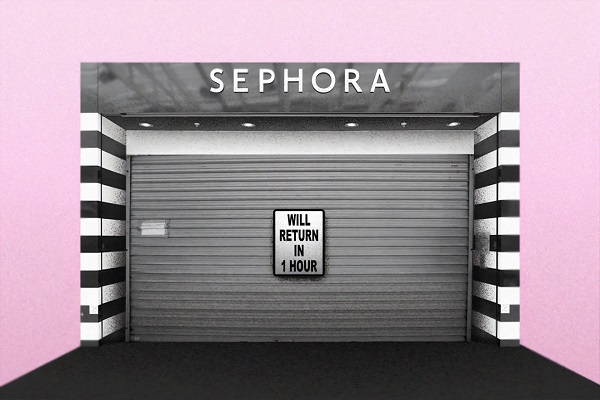
Using a cool black packaging with a twist
Choosing a classy monochrome design will ensure that your packaging will never go out of style.
Many famous personal care brands tend to use black and white packaging. White packaging used to be an overwhelming choice for personal care packaging. Black packaging for personal care products looks very luxurious, making an air of mystery and coolness.
It is going to dominate monochrome packing. So, adding some unique patterns and a little pop of color will be an interesting twist to this kind of black packaging.
Lush florals and warm earthy colors
If your products pursue a sustainable lifestyle, you can use rich, warm flowers and earthy colors in your packaging design.
This style of packaging will make your products look more sustainable and earthy. It can be feminine. Sometimes it can add a sexy vibe to your products. Lush flowers and earthy colors can give customers a feeling of warmness and comfort.
It’s a good idea to combine lush floral illustrations and simple typography. The result must be a classic style–approachable yet luxurious.
Modern and minimalist pastels
The combination of pastel and minimalism is a match made in heaven.
On one hand, pastels can soften or harsh a minimalist personal care packaging design. On the other hand, a clean minimalist design can give the pastel packaging a sense of modernity and maturity. When designing your personal care packaging, you can play with these two concepts. Use pastel and minimalism in your design and find out the best mix for your brand.
And meanwhile, keep the personal care packaging simple and stylish. Another option is picking one color with many pastel colors, to get a playful and dreamy personal care packaging look.
When it comes to personal care packaging, there is no bad choice. You need to encourage yourself to be different. Take advantage of the tips we mentioned just now. What you aim for is a unique personal care packaging design that expresses yourself and your ideas about the products.
It is your ideas that make your products unique and stand out from other brands.
Find more about packaging designs.
Eco-friendly ideas about personal care packaging
Recycle the packaging for personal care products
What kind of materials is recyclable when it comes to personal care packaging?
Shampoo and conditioner bottles
Bottles of shampoo, conditioners, and shower gel might vary depending on the brand.
But usually, these bottles are recyclable.
Before you bring them to a recycling center, make sure that you have washed and dried the bottles.
If you are not sure 100% whether the bottles are recyclable, you can read the label. If the label has a triangle with an arrow symbol, it means the bottle can be recycled.
Deodorant cans and aerosols containers
If deodorant cans, hairspray, or dry shampoo containers are made of steel or aluminum, mostly they can be recycled.
But before you bring these cans to recycling centers, you should make sure that all these cans are empty.
And you should take down all the detachable parts. Also, do not pierce, crush, or try to flatten these cans. It could be very dangerous as these cans contain gas. It is inflammable and may hurt you.
Hairdryers, straighteners, and electrical beauty tools.
Things like hairdryers, curling wands, and straighteners are usually non-recyclable or unsustainable.
But they are widely recycled in many places.
Bigger electronic items such as TVs and washing machines are mostly non-recyclable. It means that you cannot recycle any useful materials from the TV by yourself.
So why not donate them to local recycling centers? Recycling centers will gladly accept these items if they still work. And later they will be sold to people who need them.
Besides, if you want to make some money, you can sell these non-recyclable items online.
DON’T misunderstand, the below items are NOT recyclable
Nail varnish bottles
People have found hazardous toxins in the components of nail varnish. It means that you can’t recycle nail varnish bottles even if you clean them thoroughly.
So, avoid trying to recycle nail varnish bottles, as they will contaminate your other recyclables.
Make-up wipes
Make-up wipes are not a recyclable or eco-friendly option unless they are labelled as biodegradable.
Nivea’s biodegradable cleansing wipes can biodegrade in 28 days.
But most of the make-up wipes are still non-recyclable. Instead of using make-up wipes, you can choose some reusable make-up pads or biodegradable sheets.
For example, things like Jinmee Hydrapuff Skincare Sheets are an eco-friendly and price-friendly choice. Also, remember that items that have a “Biodegradable” tag cannot be thrown to the recycling bin.
Makeup brushes
Makeup brushes are made of superfine non-recyclable nylon, plastic, or animal-derived hairs.
In other words, there are not meant to be recyclable.
If makeup brushes are broken, you could only dispose of them in your normal bin. To avoid resentment, just take care of your make up brushes to prolong their life span.
Or you can find more sustainable brushes. There are some bamboo brushes in the market.
How to recycle the packaging for personal care products properly?
When it comes to getting rid of our unwanted clothes, you can choose to take them to a local clothes bank or charity shop.
Always ensure that the clothes are in good condition for the next person that will use them.
What’s more, don’t wash skincare or makeup products in the sink. It’s because some of the ingredients in these products can cause harm.
Over time, these ingredients can contaminate water supplies and then harm aquatic life.
Also, disposing of these products in a recycling bin is not a good solution if you care about the Earth. It can be as harmful as not recycling products at all.
Even though we try our best to recycle, unfortunately, we still throw our products in the wrong recycling bin. It may cause harm and the products need to be recycled again.
But still, there are some tips for recycling personal care products and packaging properly.
Return it
Some personal care brands like Lush, Origins, and MAC, have recycling programs depending on the region.
The programs encourage customers to return the packaging to the stores. Therefore, the stores can reuse the packaging instead of producing more containers.
Take MAC as an example. MAC has a program named “Back-to-MAC”. It allows customers to return six empty containers in exchange for a free lipstick!
Upcycle
There are many ways to reuse these containers.
You can recycle them or just return them to a store. Also, by cleaning them properly, you can use these containers to store other things.
Or just put them in your house as decorations.
Do not rinse the bottle out
Do not rinse the bottle out as the rinsed products will flow into surface water. And this is going to contaminate the water supplies, or even damage marine life.
Instead, you can wipe the bottle with a paper towel to reuse it.
Besides, make sure the bottles are completely dry before throwing them into the recycling bin.
Beware of hazardous waste
Many products, such as lipsticks and nail varnishes, contain a chemical called acrylate.
The acrylates are harmful. So, never throw them into a normal bin or recycling bin.
Therefore, when dealing with these hazardous wastes, you should go to the nearest hazardous waste center. And dispose of them properly there.
Choose wisely
It’s wise of you to check before buying products easy to recycle. For example, pump-action sprays are better than aerosols, so it’s better to choose the former.
However, some aerosols cans are recyclable if the material is steel or aluminum. To recycle them, take out their caps and make sure they are completely empty.
Besides, most products like makeup pallets have mirrors or magnets.
If you want to recycle these products, make sure you take out those mirrors and magnets. It’s because they are not recyclable.
And mascara tubes remain the same.
Some mascara wands are not recyclable. Thus, just take them off and you can recycle the rest.

Re-use your personal care packaging
Many brands have appealing and useful packaging for their products.
But when you finish using the products, you might always feel that the packaging is no longer adoptable. And then you might dispose of them in the bin.
However, there are many other uses for packaging.
Here we offer some ideas so that you can reuse your products and the packaging.
Tins
Tins that are used to hold lip balm or solid lipstick can be cleaned and used to store small items.
For example, use tins to store ponytails, bobby pins, vitamins, or coins.
Tins function as containers. They can help you organize your home items. It means that you can save money on buying containers.
Another way to reuse tins is to store homemade makeup in tins. Homemade makeup is popular now and there are many easy tutorials on YouTube to make lip balms and tinted lipsticks.
You can use essential oils to enhance the fragrance, which is also good for your health.
Also, you can use rose powder or add some coconut or shea butter to keep your lips moist at all times!
Lotions Jars
These jars can function as storage containers.
And you just need to clean them and clear out all the residue from the product. Make use of the soap and wash them well with water. And then you can try to store things with these jars, like cotton ball makeup brushes and pens.
Also, you can paint the jars or stick some scrapbook so that they can decorate your house.
Additionally, you can use these jars to hold new lotions.
Some brands allow customers to refill lotions again at a lower price. It means you don’t need to buy the same product again and save your money.
Compact Containers
The makeup industry is full of compact containers for many types of products, such as blush, foundation, concealer, and bronzer.
It is easy for you to recycle these compact containers when you run out of the product.
Just simply remove the metal tin by using a flat screwdriver.
Or use a knife if you don’t have the right tools. Anyway, make sure to be careful.
Afterward, clean the container and you can use it to store small items like earrings, coins, and paper clips. The advantage of a compact container is that it is easy to carry. You can put it in your wallet or bag.
Also, you could use this empty container to combine a paler foundation with a compact powder. You will get a shade that fits you right in different seasons.
Lip balm tubes
Old lipstick tubes seem like a small compartment.
You can DIY natural lip balms with the old tubes. Or melt other lip balms, mix them, afterward chill for a few minutes to create a new color.
It’s a fun activity and you will finally get a new lipstick!
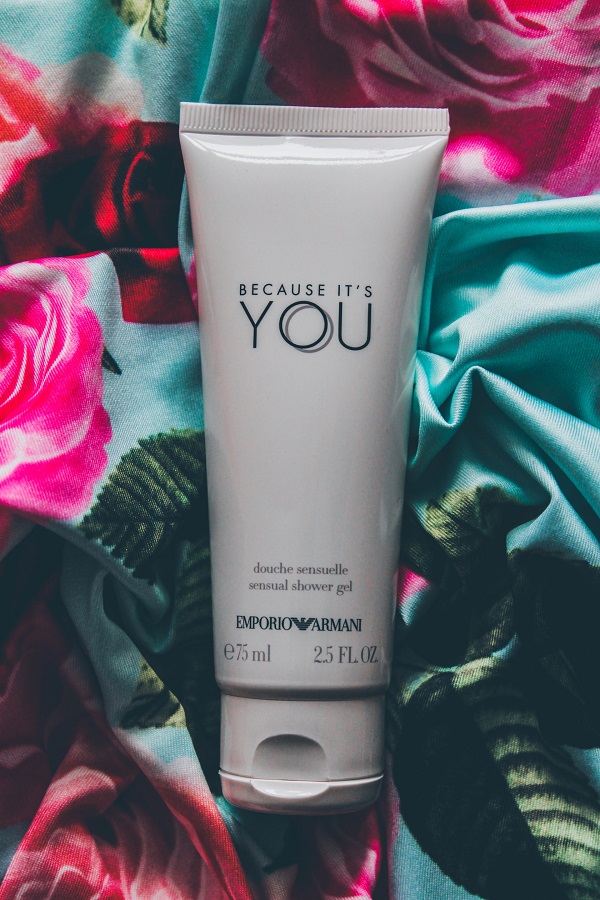
A further step to upcycle
Create your unique charging dock with a lotion bottle
There are many creative and fun DIYs in the media where you can craft your empty bottles into something useful.
A charging dock, for example.
Instead of leaving your phone on the floor, you can have a place to hold your phone while it’s charging. You can make a fun crafting session with your kids or friends.
The good news is, an empty lotion bottle is enough for the raw material. A marker and a cutter can bring your art to the next level if you want your own style!
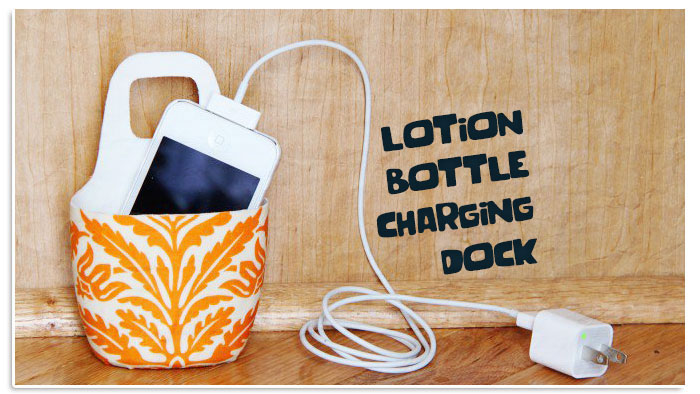
Use the plastic bottle caps to make a lamp
Apart from using bottles to DIY, we can also use plastic bottle caps.
The cute little plastic bottle caps can really craft some amazing items with your wonderful hands, such as a lamp.
Check out the picture below and you can definitely make your innovative bottle cap lamp, too!
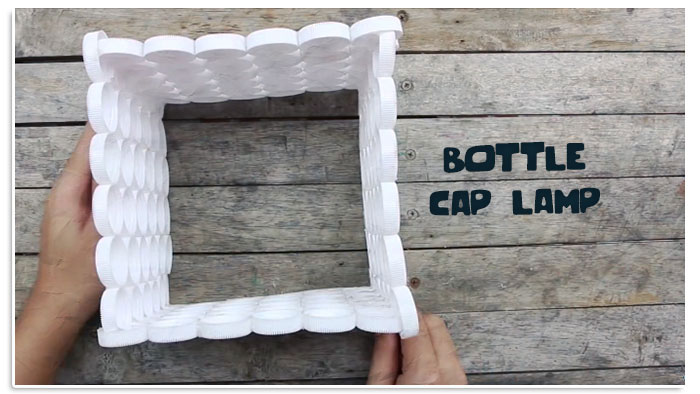
Turn the shampoo bottles into airplane toys
Did you know we can craft many things with shampoo bottles? Your eyes don’t lie! Even airplanes!
And the good thing is that it takes only some easy work with scissors and glue. Then, you will have a toy to keep your children happy during bath times.
Look at the excellent artwork below. Your children are going to love it!
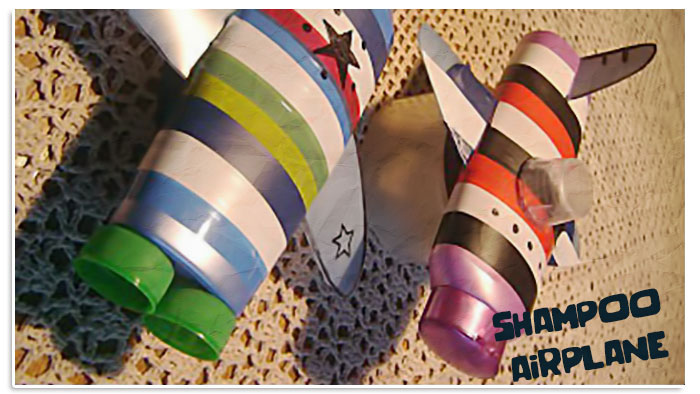
Recycle laundry detergent containers into toy cars
Perhaps every little kid has a dream of their unique car. Building one by himself/herself makes it even greater.
Apart from saving yourself some money in brand new toys, you can reuse your laundry detergent bottles by creating toy cars. A bottle with large size as the car body plus some extra caps for the wheels. And some basic tools to connect them together.
This is not only a fun way to spend time with your kids but also a way to develop their creativity.
Moreover, it is a good start to cultivate their awareness of our lovely environment.
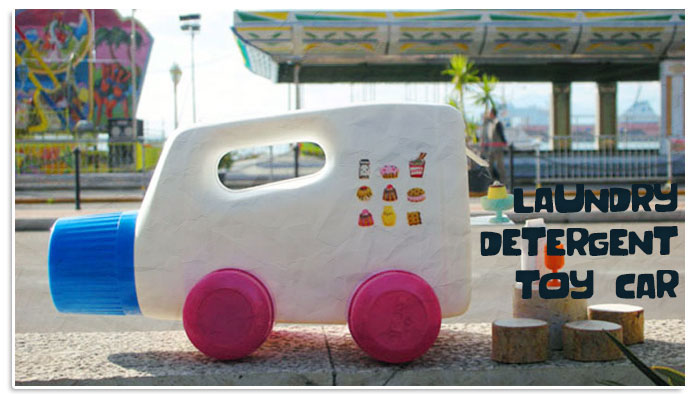
Transform the reused plastic bottles to be piggy banks
Making piggy banks with plastic bottles is another way to reuse them.
And that comes very handy if you’re trying to save some coins but looking for a place. In this case, you can create a piggy bank from your plastic bottle.
An interesting way to teach your kids to do some financial management, isn’t it?
Additionally, you can paint the entire bottle making it a unique style. Imagine the surprising face when your little one opens it after a few months.
Meanwhile, a transparent look can make your saving progress visible.
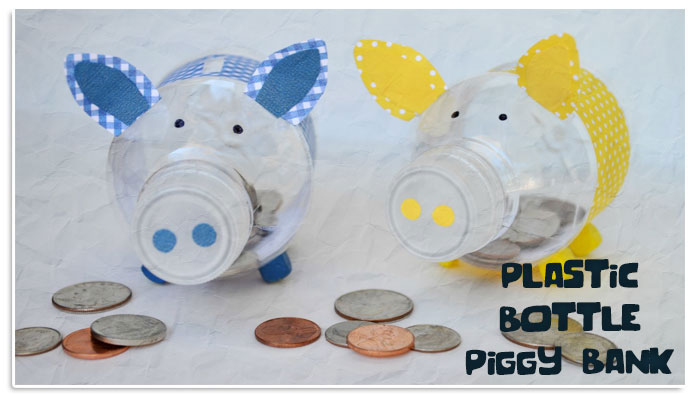
If you’re also interested in cosmetic packaging, also read another article(link).
Why Choose Primepac
At PrimePac, we bring together design experts and brand innovators to create fresh ideas, customized packages, and fully efficient processes.
We design creative packaging solutions that cater to a diverse global audience with the in-house knowledge and network of experienced professionals to meet the demands of every type of client.
From our dedicated sales team and warehouse staff in Australia to the experts at our production facilities in China, all of our employees are guided by four core values at the heart of our business: integrity, innovation, passion, and engagement.
The process of cooperating with Primepac

NETWORK
With our team in China and Australia working as one, we reduce inefficiency so that you deal with one streamlined team from manufacturing right to delivery.
The service support team is located in Guangzhou, the manufacturing hub of China, providing rapid response, and local industry knowledge. Warehouse and 3PL network located in Sydney, to provide rapid distribution, and delivery to your customers.

Conclusion
Today, we’ve talked about pretty much stuff about personal care packaging in this article. Before you get overwhelmed over the bundle, let’s take a quick recap and wrap it up a bit.
- Why personal care packaging is of importance?
- The current market of personal care packaging and forecast, both in the world and in Australia
- Personal care packaging trends
- Things to consider when designing personal care packaging
- Ideas about personal care packaging to make them more eco-friendly
If you like this article, don’t hesitate to share it with your friends and get them inspired as well. You might want to follow our latest post if you want more solid tips about the packaging industry.
Meaningful truth about Food Packaging You Need to Know
Introduction
The food packaging market is thriving today with the growing demand for food products.
Meanwhile, it’s important to find quality packaging solutions, especially for food.
In this article, we’re going to cover the following topics so that you can sort out the reliable packaging from the many.
- the packaging market
- the importance of food packaging
- food packaging requirements in Australia
- food packaging innovations and solutions in the trend
- and more
Take your time and check them all out below.
The food packaging market
As data reveals, every year there are billions of dollars spent on packaging food and other items.
And 60% of all packaging stuff contributes to food products.
Earlier in the 20th century, most foods come without much packaging. People weighed and measured them directly and then placed them in bags. Or collect them with the shoppers’ bag and carry them home.
At that time, packaging was still a strange term for most people.
But today, packaging has become a massive and lucrative industry, given the increasing demand for food packaging products.
And often, it is the look of the packaging that persuades the customers to buy the food inside. Guess you might have a similar experience as well.
As a result, the food packaging industry is thriving currently.
Find more about the packaging market.
Advances in food processing and food packaging have played a major role in keeping the U.S. food supply among the safest in the world. In short, packaging preserves the advantages of processed food, allowing food to safely travel long distances from its origin and still remain healthy at the time of consumption. However, packaging technology must strike a balance between food protection and other concerns, including energy and material costs, increased social and environmental awareness, and strict regulations on the disposal of pollutants and municipal solid waste.
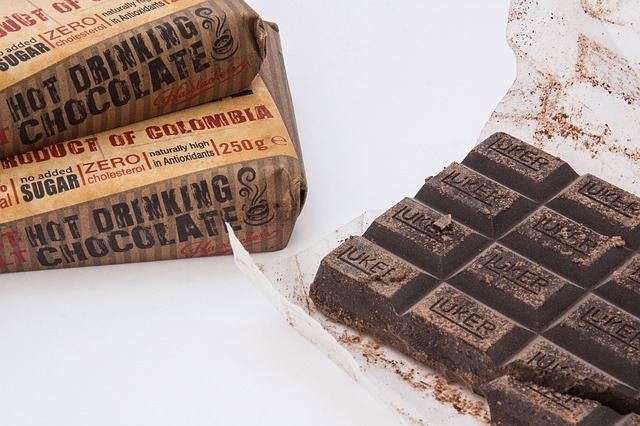
Why food packaging is important?
Because food packaging can help you with so many things you might not even realize before. A nice food packaging solution can:
Protect your food
Quality food packaging can protect your food from damage or contamination. On the other hand, food without proper packaging can bad for many factors, typically micro-organisms, air, moisture, and toxins. Food packaging can delay product spoilage, retain the beneficial effects of processing, extend shelf life, and maintain or improve food quality and safety. In this case, packaging protects against three main external influences: chemical, biological, and physical.
Many products, especially food require more extra care than the other goods in many cases. They need protection against falling, crushing, and pushing during transport, the fruits for example.
In this case, a rigid package like a laminated container would definitely be a great helper. The container will make your fruits stay close together and protect them. As the saying goes, unity makes strength, this gives them enhanced strength against the force.
In the meantime, you need good food packaging solutions with nice performance against the climate. Factors like temperatures, light, and humidity can all affect the shelf life of the food.
Make your food stand out
As we discussed above, there are times you buy the food because of its beautiful looking.
So, excellent packaging with creative designs can really make your food products stand out and boost your sales.
At the same time, food packaging as a media itself can contain lots of information. That is to say, advertising on the packaging is another way to have customers identify your products among the many.
We believe you can recognize to forget the famous coke brands on the shelf. And the way their companies do the packaging just contributes a big part to that. The shapes, the logo, the color, and all other elements comprising the whole thing. The food packaging serves as part of the quality of your products today.
Ease the transport
When it comes to transport, the convenience to move is also important besides protection during the process.
Thus, a good solution for food packaging is easy to handle, such as moving and lifting.
At the same time, space also matters for transport. Sometimes, you just hope that box can fit into space and complete a full lorry load at a time.
For cases like that, you’ll need packaging solutions that could tailor to your need. A well-designed food packaging can contain more products with the same materials and cost.
Convenient features such as ease of access, handling, and disposal; Product visibility; Resealable; Microwave microwave ability greatly affect packaging innovation.
As a result, packaging plays a crucial role in minimizing the effort required to prepare and serve food. Oven-safe trays, boiling bags, and microwavable packaging allow consumers to cook an entire meal with little preparation.
The new cap design allows easy opening, resealing, and special distribution features. For example, cookie makers recently introduced soft bags with a notched section that provides access to cookies. A sealing film with a peelable seal covers the opening prior to sale and allows resealing after opening.
Advances in food packaging have contributed to the development of the modern retail format, providing consumers with the convenience of one-stop shopping and the availability of food around the world.
These convenience features add value and a competitive advantage to a product, but can also affect the amount and type of packaging waste that needs to be disposed of.
A packaging that saves space brings you money, given the increasing price for space today. In other words, you will save the cost of transport with suitable food packaging solutions.
Offer useful information
As you know, you can find plenty of useful information on food packaging.
The ingredients, use-by dates, manufacturing information and etc.
And the barcode as well, which is very important for shops and supermarkets. Today, we’re all used to the check-out process at the cashier. Remember the barcode scanner?
But think of the scenario, if there’s no barcode on it, how much more time are we going to spend? Too hard to imagine right? And the food packaging is the thing to display the barcode. We guess you rarely see a barcode on the food itself, don’t you?
All these factors lead to the growth of the food packaging demand. Along with the increasing needs, there are requirements for food packaging.
The packaging is the appearance of the product and is often the only product exposure consumers experience before purchase.
Therefore, unique or innovative packaging can promote sales in a highly competitive environment. Packaging may be designed to enhance the image of the product and/or distinguish the product from the competition. For example, larger labels can be used to hold recipes.
Packaging also provides information to consumers. For example, package labels meet legal requirements regarding product identification, nutritional value, ingredient claims, net weight, and manufacturer information.
In addition, the package conveys important information about the product, such as cooking instructions, brand logo, and price. All these enhancements may affect waste disposal.
Now let’s check the case in Australia.
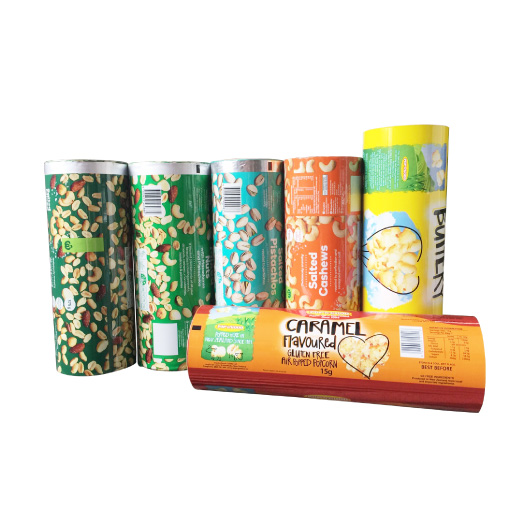
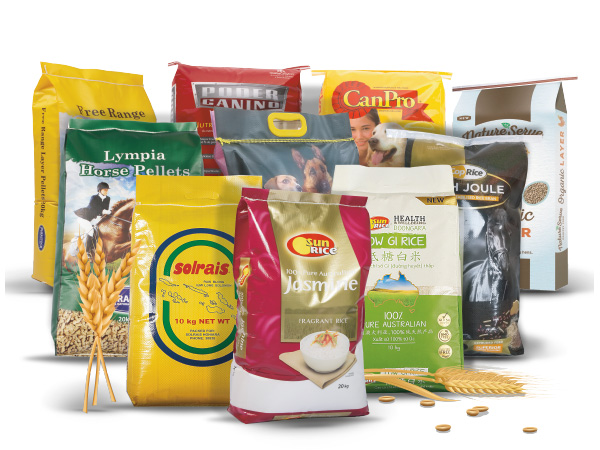
Safety and packaging standards in Australia
Who develops the standards for Australian food and food packaging?
FSANZ does. The independent agency was founded by the Food Standards Australia New Zealand Act 1991, aka the FSANZ Act.
As part of the Australian Government’s Health portfolio, FSANZ develops food standards for the Australian and New Zealand food industries.
What are the food packaging requirements?
Food safety is always an issue worth our undivided attention.
It is important to make sure the packaging is safe for food products. If you’re doing a food business, the case matters more for you.
Find more details in the following content.
According to Standard 3.2.2 – Food Safety Practices and General Requirements, a food business must:
- Use packaging materials that fit its intended purpose
- Use material unlikely to cause food contamination
- Make sure food safety during the packaging process and guarantee no contamination during the process
The risks during the packaging process
There are chances the food becomes unsafe due to food packaging mistakes. For instance, the following cases can damage food quality.
- some pollutants get into the food during the packaging process
- hazardous bacteria infected the food from damaged packaging
- the packaging debris or fragments break off and then enter into the food, typically plastic or glass pieces
- poisonous substance from the unsafe packaging dissolves and stains the food.
So, risks of food safety are common to see with food packaging of low quality. And food safety involves life safety, never save the several bucks on food packaging and trip your food business over.
When it comes to chemical leaching, it can happen in specific conditions. For example, some of the packagings is safe in normal conditions, but it will become harmful when the situation changes.
Reduce the risks by choosing the right packaging solutions
Here are a few tips and principles for your choice:
- always use food-grade and clean packaging
- make sure the food packaging is complete and not damaged
- buy from reliable suppliers like PrimePaclearn the ingredients of your food and double-check the packaging, make sure it is suitable
- ask your packaging suppliers for certifications of their packaging products as proof of food-safe quality
- pay attention to the instruction and symbols on the packaging, and make sure the food packaging fits your needs
Use packaging in correct ways:
- think further in advance about where to store the packaged food. And make sure the packaging solution is safe enough for the food
- handle the packaging with care and clean hands
- store the packaging in a clean place and double-check the environment to avoid damage
- always use proper ways to clean and sanitise the packaging. And ensure the methods have no impact on food safety
- always avoid re-using single-use packaging and reuse packaging only if safe for the food
- use enhanced packaging solutions to avoid chemical leaching in the case of any risks
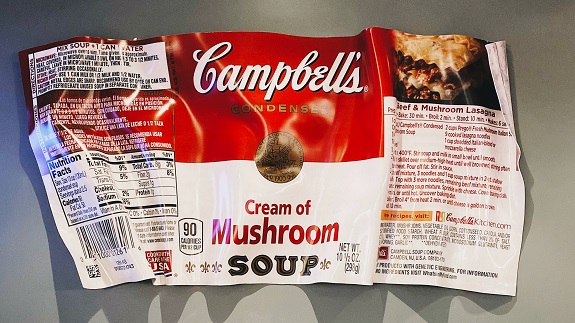
Food packaging labels
Since its establishment, FSANZ has set a bunch of food labeling standards for food safety in Australia. And the specific standards take their form in the Food Standards Code.
Besides Australia, these standards by FSANZ also apply to New Zealand.
The Food Standards Code covers the requirements for general labeling and information to display. And the requirements involve all food and tell specific applications in various situations.
For instance, requirements on food for retail sale, catering purposes, or intra-company transfer.
In the meantime, the Code also includes requirements for labeling and information applying to some specific food products only.
On the other hand, the requirements for food are also subject to fair trading laws and food laws. The 2 laws prohibit false, misleading, or deceptive information in both Australia and New Zealand.
Why we need food labels?
Food labels provide us with information so that we have a better reference for buying the food, typically the following items:
- the food description
- ingredients of the food in detail
- information for nutrition
- use-by date or best before date
- instruction like ways to store and prepare
- warnings if the ingredients are likely to cause allergy
Requirements for food labeling
When it comes to the requirements for food labeling, the following information is necessary to display according to the Code by FSANZ. And that applies to food packages for retail sale and catering purposes.
Name or description of the food product
The name or description of the food must display on the food package labels. And the information should be clear enough so that you can identify it apart from the others.
And the prescribed name for the food must display on the packaging label of the food if applicable. In the cases of no prescribed name, the packaging label should contain information about the food name or description. It’s for the purpose to show the true nature of the food.
Besides, the packaging labels must tell the truth about the food. And manufacturers are responsible for the correctness of the information. They should not display fake information or have it displayed misleadingly or deceptively.
Name and business address for suppliers of Australia or New Zealand
The food package labels should show the name and the Australian or New Zealand business address of the suppliers.
And the term “supplier” refers to the following roles:
- packer
- manufacturer
- vendor (the business that sells the food)
- the importer (the business that brings the food into Australia)
And the requirement of the business address is worth our attention. The address MUST BE a PHYSICAL ADDRESS and NOT a POST OFFICE BOX.
Ingredient listing
The food packaging labels should list all of the following items unless with exemption:
- ingredients (any substance, including all additives added to the food during the whole process from preparation, manufacture to handling the food)
- compound ingredients (any ingredient comprising more than 1 ingredient, like egg noodles. Typically, egg noodles are made of flour, water, and egg.)
And there are requirements for the displaying order of the ingredients and compound ingredients. Manufacturers must display them in descending order.
At the same time, the names of the ingredients should be detailed enough to describe them. And make sure they are correct as no misleading or deceptive information is acceptable.
The date marks
Pretty easy to understand, the food package should have a dark mark of either item below:
- best before date. The date is a reminder of the best quality deadline. In other words, the food might remain safe to eat after that date. But the cost could be the loss of some quality.
- use-by date. This date refers to the safety deadline for the food. That’s to say, if you eat the food after that date, it is risky for your health. And any food is not allowed to sell after the use-by date.
The date marks rules apply to all packaged foods with a shelf life of 2 years or less.
Lot identification
Lot identification can identify:
- the production batch of this food
- the place of packaging or production of food.
If there is a food safety problem, then this information will play an important role in the recall of products.
However, marking the date and supplier’s detailed address information usually meets this requirement.
Besides, some foods do not need to be labeled with batches, including:
- ice cream/rock candy separate section
- small package food. Batch identification is included when bulk packages or containers for sale are stored or displayed.
Directions for use or storage
If you don’t know the potential threat of certain foods to your health and safety. Then the food label of these products must include instructions for use and storage.
Follow these instructions to ensure food safety before use within the shelf life. For example, “refrigerate after opening” or “store away from sunlight.”
Nutrition information panel
The nutrition information sheet will give you a detailed introduction to the nutrient content of the food. It includes:
- protein
- energy (kilojoules or calories)
- saturated fat
- carbohydrate
- sodium (salt)
- sugars
- fat
There is a standard format for this nutritional information, which shows the average nutrient content per serving and per 100 g (or 100 ml, if liquid) food. If you want to know more about standard 1.2.8 and nutritional information requirements, you can refer to FSANZ.
Percentage labeling
If the key ingredients are already mentioned in the food description. Then, the label of some packaged food must show the percentage of “characteristic” ingredients in the food.
For example, if there is a yogurt called strawberry yogurt, the producer must list the percentage of strawberries in the yogurt ingredient list.
If you want to know more about standard 1.2.10 – food ingredients and characteristics, you can refer to FSA Australia and New Zealand.
Country of origin
Food packaging labels must indicate the country in which the food is manufactured or produced, or specify that the product is made from local or imported raw materials.
Please note that this regulation does not apply to food produced or imported in New Zealand.
On July 1, 2016, the Australian government officially implemented the new country of origin food labeling system. Under the new system, the requirement of origin label belongs to Australian Consumer Law.
However, before the government enforces the new law on July 1, 2018, companies have two years to change food labels that meet the requirements of the new law.
On July 1, 2018, the government adopted proposal No. p1041 to amend Codex Alimentarius and canceled the original country of origin labeling requirements
Is the country of origin label applicable to New Zealand?
In fact, in New Zealand, the government does not force producers to use country of origin labels. It is entirely up to the suppliers themselves whether to label them. Therefore, the supplier can choose not to display this information.
There is an exception, however, for the country of origin of the wine supplier. At the same time, when the supplier provides the country of origin information, it must be accurate. There should be no mistakes in this step, otherwise, the government will punish the suppliers.
However, all foods must be labeled with the contact information of a New Zealand or Australian food supplier. So you can contact the supplier and ask for more information about the food.
Legibility requirements
To facilitate consumers to easily understand the label information on food packaging. The label must be simple, clear, comprehensive, and it must be in English. It is also important that the font size of the food warning statement must be greater than 3 mm high, and for small packages, it must not be less than 1.5 mm.
If you want to know more, the FSANZ user’s Guide on legibility requirements for food labels contains more letters that you can check out.
Other labeling requirements
In addition to the above several tags, the following will give you some additional tags. However, information on the following additional labeling requirements requires you to visit the FSANZ website (external website):
nutrition claims (Standard 1.2.8)
- health claims (Standard 1.1.3, clause 1)
- irradiated food (exposed to radiation) or food containing ingredients that have been irradiated (Standard 1.5.3)
- vitamin and mineral content (Standard 1.3.2)
- certain milk products and royal jelly (Standard 1.2.3, clauses 3)
- genetically modified food (Standard 1.5.2)
- infant formula labeling (Standard 2.9.1)
- novel foods (Standard 1.5.1).
Exemptions from labeling requirements
Here are some of the less commonly used food labels:
- Food without packaging
- Inner packaging food. They are designed for sale only and generally have no outer packaging. But if there are separate parts of certain substances, people have to make oral or written statements
- Food is produced, packaged, and sold on-site at a sales location.
- Food packaged in the presence of customers
- For whole or chopped fresh fruits and vegetables (except germinated seeds or similar products), customers can see the status and quality of fruits or vegetables through packaging.
- According to the requirements of customers, provide packaged ready to eat food.
- Food sold in fundraising.
Even if you produce food that doesn’t need to be labeled. The code also requires you to tell customers some information about food, either orally or in writing, at the time of sale.
Warning and advisory statements
Advisory statements
For certain foods or ingredients that may pose health risks to certain consumers, suppliers must provide advisory statements.
This kind of food or ingredients are:
- If the food contains strong sweeteners, the supplier must indicate that the food contains phenylalanine. Because phenylalanine may affect the health of patients with phenylketonuria who have a rare genetic disease.
- Guarana or guarana extract. For foods containing guarana or guarana extract (a natural source of caffeine), the supplier must indicate that the food contains caffeine.
- As long as the food contains added phytosterols (which may reduce cholesterol absorption), the supplier must state the following on the label:
– when eating this product, people should match it with healthy eating habits,
– this product may not be suitable for children under five years of age and pregnant or lactating women, and
– Phytosterols do not provide additional benefits when ingested more than 3 grams per day.
- For cola drinks containing caffeine, the supplier must indicate on the label that the product contains caffeine.
Warning statements
When people may not know that the food or ingredients pose a serious health hazard, the supplier must attach a warning statement to the food. For example, foods containing bee product royal jelly must have a warning statement.
For example, a statement as easy as “this food contains royal jelly.” but clear enough to understand with no misleading or false information. According to reports, royal jelly may cause severe allergic reactions. In rare cases, it can lead to death, especially in patients with asthma and allergies. Therefore, this step is very important.
Full list of advisory statements
In addition, the code of food standards requires Advisory statements for certain products. Find the full list on https://www.foodstandards.gov.au
More about the labels
The names for the fish
Although the Food Standards Code has made detailed requirements for most of the food. But the Code has not defined the names for fish yet.
On the other hand, Standards Australia and the seafood industry have been working together to develop an Australian Fish Names, Standard. This is going to provide guidance on standard fish names in Australia.
Find more details on http://www.fishnames.com.au/. You can search the fish names from their Fish Names Database.
When it comes to the fish names in New Zealand, visit the website of Ministry for Primary Industries.
So what can you do to make sure that you receive what you give?
Sometimes, when fishing or wholesale, you may choose the wrong fish.
However, this error is passed on to consumers through the supply chain. Therefore, to make sure you get the money you pay, you can choose a reputable fishmonger/restaurant.
If you’re worried that businesses may label fish the wrong way, you need to contact the supplier first. Besides, if you are not satisfied with the explanation or response of the merchant, you can contact the relevant law enforcement agencies below for further action:
- If you are in Australia, please contact the Australian Competition and Consumer Council: www.accc.gov.au or call 1300 302 502 (free for Australia callers).
- If you are in New Zealand, please contact the Ministry of primary industry www.mpi.govt.NZ, or 0800 00 83 33 (free for New Zealand callers).
Allergic issues caused by the food
Food allergies are common to see in our daily life. If you’re allergic to some food, you might understand the feeling more than anyone else.
And the typical food allergens include wheat, soy, sesame seeds, nuts, eggs, milk, fish, and etc.
It might be easier to avoid them if you know them in advance. But there are times allergies occur to you even before you realize it. The reason can be getting the wrong food into the stomach.
So, it’s of importance to display the potential allergens on the food package label.
Don’t forget that especially when you are running a food business. Some allergies can even kill.
So, always be careful when listing the ingredient information on the food package.
Ingredient lists and percentage labeling
Ingredient lists
The supplier must list the ingredients in descending order of weight.
This means that when suppliers produce products, the first component contributes the most and the last one contributes the least. For example, if sugar is at the top of the list, sugar accounts for the largest proportion of the product.
If the product contains added water, the supplier must list it in the batching table according to its feed weight. Also, any water lost during processing (e.g. water lost in the form of steam) should be noted by the supplier. The only exception is added water:
- less than 5% of the finished product,
- being part of the broth, brine, or syrup in the ingredient list, or
- for the reconstruction of dehydrated components.
Sometimes, foods contain compound ingredients. The producer mixes two or more ingredients. This is the compound ingredient. For example, ketchup can spaghetti, which is made of flour, eggs, and water.
And the supplier must state all the ingredients that make up the composite components in the table.
Unless the amount of this compound is less than 5% of the final food. For example, one compound that may be less than 5% of the final meal is tomato sauce (made of tomatoes, peppers, onions, water, and herbs) on a frozen pizza.
However, if the composition of the compound is a known allergen. No matter how much of this ingredient you use, you have to label the food package.
Percentage labeling
The supplier must label most packaged foods with the main ingredients or percentage of ingredients in the food. Then consumers can compare similar products.
The main ingredient of strawberry yogurt is strawberry. The label says, for example, 9% strawberries.
Another example of a typical ingredient is the cocoa solids in the chocolate.
There are also foods, such as white bread or cheese, which may not have characteristic ingredients or characteristic ingredients. It’s all possible.
Truth in labeling: measures, weights, and legibility
Truth in labeling
Fairtrade laws and food laws in Australia and New Zealand require food companies to label their packaging. The labels placed on the package by food enterprises shall not mislead consumers through false, misleading, or deceptive statements.
Besides, in Australia, this legislation includes the Australian Consumer Act (ACL) contained in the competition and consumer act 2010, as well as the state and territory fair trade act and the food act.
In New Zealand, however, this legislation includes the food act 2014 and the Fair Trade Act 1986.
Then, the Australian Competition and Consumer Council (ACCC) implements the law of the competition and consumer act 2010. However, in New Zealand, the Commerce Commission is responsible for implementing the fair trade act of 1986.
Name or description of the food
The supplier must label its exact name or description on the package of the food. This can indicate the true nature of the food.
For example, “strawberry yogurt” should contain strawberries. If it’s strawberry yogurt, not real strawberry. Then the supplier should indicate on the label is strawberry yogurt.
Weights and measures
Weighing and measuring are some of the most important pieces of information about food. Therefore, the supplier must attach accurate weight and size information (quantity of food in the package) to the food.
Also, both the Australian National Institute of Metrology and the Department of consumer affairs of New Zealand regulate the declaration of weight and measurement.
Legibility requirements
Food standard specification requires that the label must be clear and eye-catching. And it is different from the background and uses English.
Next, the size of the text in the food warning statement must be no less than 3 mm high.
Also, unless on small packages, the type size must be at least 1.5 mm.
Food packaging innovations
With the growing global environmental pollution, we need to rethink the way that most of the food is packed.
Food packaging has become a major component of most household waste.
According to the EPA, the United States Environmental Protection Agency, nearly 45% of the waste in US landfills is wasted food and discarded packages. And many of those packages are food-related.
We should be aware that using sustainable food packaging is no longer just an option for individuals. Instead, it has become an urgent need to protect the global environment.
Many people are trying to reduce the amount of food packaging they bring into their houses.
But soon they will find that it’s not an easy task.
Food packaging is closely related to people’s life. If we want to reduce the amount of food packaging waste more effectively, joint efforts of all sectors are needed. Individuals should use less food packaging.
And also, other sectors of society, such as businesses, manufacturers, and political entities, have to play their roles. Only by joint efforts can society realize zero waste as soon as possible.
Innovations in sustainable food packaging are leading us to a further step to a sustainable life.
Meanwhile, we still have a long way to go for a fully sustainable goal.
And the good news is, more and more businesses are adopting new materials. At the same time, government policies also help to accelerate progress.
And PrimePac is one of these businesses with the honor to pay our effort to a society with less waste.
Why do we need innovations in food packaging?
Most of the food we buy now needs plastic wrapping and packaging. Plastic food packaging is very useful and convenient, right?
But its harm is also obvious. Plastic will bring a heavy cost to human beings and the Earth.
Making plastic requires a large amount of limited and heavily polluting fossil fuels. Research by the Pacific Institute, a global water organization, provides some background.
In one year, the production of plastic for bottled water that Americans bought, consumed a lot of fossil fuels. These fossil fuels are equivalent to about 17 million barrels of oil. As we all know, the heavy use of fossil fuels will make global warming more serious.
So, to deal with the climate crisis, it is important to reduce plastic use, especially the use of single-use plastics.
Moreover, the plastic issue has created some other issues. One of the famous is the pollution of water.
So, environmental organizations believe that recycling plastics is a way to deal with plastic waste. They encourage people to recycle plastics.
By recycling plastics, we can reduce the number of new plastics that will be made.
What’s more, we can move away from a throw-away society towards a circular society, balancing environmental and economic development.
But the fact is that recycling alone is not enough. It can only be a partial and incomplete solution.
Not enough just to recycle plastic food packaging
- One of the reasons is that most plastics of food waste in our homes are not recyclable, such as some black plastic items. These plastics cannot be recognized by grading machines at recycling centers. So, it’s necessary to think of other ways to deal with these non-recyclable plastics.
- The third reason is that recycling plastic costs much. It uses nearly double the energy, labor, and machinery than simply to put the plastics in a landfill. Besides, all recycling has extra environmental costs. For example, trucks transporting plastics produce carbon emissions on the road.
- One more reason, we can only recycle most plastics once or twice before they are down-cycled. Down-cycled means to be recreated into some lower-value items. Recycling companies turn plastic into fabrics because plastics will not be recyclable after several uses. Obviously, fabrics have a higher value. It is more profitable to turn plastic into fabrics. But it worth our notice that some clothes made from plastic bottles can no longer be recyclable.
And when plastics enter into landfills, they will break apart over time. But the process will usually continue for centuries.
So, next time when you think that buying recyclable plastic items is environmental-friendly, please remember the recycling plastics is usually a one-or-two-time process.
The bio-plastics thing
Many innovations in sustainable food packaging use the idea of bioplastics.
Bio-plastic, also called biodegradable plastic, is a kind of plastic that will break down over time. It is unlike traditional plastic polymers.
Such plastics can be broken down by some living organisms, such as bacteria. And researchers believe that bioplastics can be an effective solution to most of the problems of plastic waste.
As we mentioned just now, most plastics will not break down naturally in the environment or will take several centuries to break down.
So, the existence of traditional plastics will create a waste crisis that will last for generations. Compared with traditional plastics, bio-plastics take a very short time to break down.
Renewable Natural Bio-plastics or Synthetic Bio-plastics?
There are two types of biodegradable plastic.
One type is bio-plastics and the other type is biodegradable synthetic polymers.
Bio-plastics are made from renewable raw materials. On the other hand, biodegradable synthetic polymers are made from petrochemicals. They contain biodegradable additives to make the break-down process faster.
You might feel confused about the terms “biodegradable” and “compostable”.
Biodegradable material can break down into some fragments, while compostable material can break down into useful compost. So, biodegradable plastic may remain inorganic compounds during the break-down process.
But a fully compostable plastics, on the other hand, will break down without leaving any inorganic compounds in the environment.
We have talked about the features of different types of bio-plastic. And the features determine whether the type of bio-plastic is the most eco-friendly and sustainable choice.
The Best Bio-Plastics:
Are fully compostable
Under the right conditions, bio-plastics can be entirely broken down by micro-organisms. Bio-plastics will be converted into carbon dioxide and water, which means that bio-plastics are biodegradable and even compostable. Starch-based bioplastic is an example.
Such plastics will not harm the natural environment as traditional non-biodegradable plastics do.
Unfortunately, the synthetic polymers are imperfect yet. They will leave inorganic compounds in the environment. Our goal is to improve them, so that they will not leave inorganic compounds, just like true bio-plastics. We can fully combine compostable plastics with organic materials in a large amount of waste. It helps reduce the quantity of non-recoverable solid waste.
Usefully sustainable, eco-friendly, natural raw materials
A true, green bio-plastic must be a kind of entirely renewable agricultural resource.
Ideally, its raw materials should be farming by-products. It uses land that is not nutritious enough for sustainable food production. Energy and water use of agriculture should also be considered.
Compostable bio-plastic must be carbon neutral if it is produced by truly sustainable organic farming methods.
Manufacturers would like to use non-renewable fossil fuels to produce synthetic plastics. It harms the natural environment a lot and also contributes to global warming.
We think that the best bio-plastics can be carbon neutral and will degrade completely. But the fact is that some biodegradable plastics will still release damaging compounds into the environment.
What’s more, the process of producing a kind of plastics, the energy, land, and water involved, are all important. So, before you decide which is the best bio-plastics, pay attention to these factors.
Although bio-plastics have many advantages, we should keep in mind that even the best bio-plastics have a downside. For example, the best bio-plastics will release methane, a potent greenhouse gas, in landfills.
Therefore, the best choice is not to use plastics or process natural bio-plastics by a small household composting system.
Compostable series are available on PrimePac now. Contact us and get a quote.
Food packaging solutions in the trend
To protect the environment, a good way to reduce the carbon footprint is to choose environmentally friendly packaged takeout food and drinks.
Let’s take a look at the following raw materials that can be used to make fully compostable polymers, which will help to better understand the innovation of bioplastics:
Food packaging with eco-friendly plastic
Potato starch, corn starch, and other first-generation bioplastics feedstocks
Several plant materials can provide cellulosic materials for bioplastics used in the packaging of the global food system.
Also, a series of potato starch, corn starch, and other plants have been used to replace synthetic plastics in food packaging.
However, the materials face criticism because packaging food with food-grade products means taking food from people and animals. With increasing competition for land, it has been criticized that the use of this material may be immoral in the face of global food shortages.
So, the long-term use of land to produce packaging rather than food might remain unsustainable.
Bamboo bioplastics for food packaging
According to the research conducted by INBAR, if people produce well, we can carry out a 100% bio base and complete biodegradation of bamboo plastic substitutes.
What’s more, bamboo-based materials can play an important role in the global bioplastics industry. People can produce about 2 million tons of bamboo-based materials every year.
One example of the second generation of bioplastics is bamboo bioplastics. Growers produce second-generation materials from non-food crops (cellulosic materials).
There are other examples, such as wood, awn, switchgrass, etc. The second generation of raw materials also includes wastes from the first generation of raw materials, such as waste vegetable oil.
Land use is the key to the sustainability of second-generation raw materials. We can’t use land suitable for food production to grow these bioplastic materials, which will affect food production.
So, we have to choose a land that is suitable for food production. And they should be materials that we can grow sustainably, with as little land, water, and other resources as possible.
Algae/seaweed feedstocks for bioplastic food packaging
Another innovation in bioplastic food packaging is the use of algae/seaweed. We call algae the third-generation raw material of bioplastics.
They have a higher yield and higher efficiency than the above materials. And they don’t need fertilizers, pesticides, herbicides, or land. Besides, like the materials mentioned above, they are naturally biodegradable.
However, it is difficult to use algae as raw materials for bioplastic food packaging on a large scale.
First of all, using seaweed or unicellular algae to make bioplastics is more expensive than other bioplastics.
Second, they are not widely used, and researchers need more information to study their applications.
However, in the future, algae-based bioplastics may revolutionize the bioplastics industry. They may play an important role in the development of food packaging.
Mushroom feedstock for bioplastic food packaging
The potential bioplastics base material we can use is not just plant materials.
Interestingly, we can use mushrooms and fungi to make bioplastics. At present, mushrooms and fungi have become another way to study biopolymers.
Besides, people have now replaced polystyrene with mushroom-based materials. Fungi may also have some other applications in the future.
Of course, bioplastics are not the only alternative to food packaging.
Now more and more people are doing research on food packaging with sustainable materials. Businesses and manufacturers are becoming more and more creative when packaging food with other sustainable materials.
For example, leaves, such as banana leaves, can be simply used to wrap vegetables, etc. Our innovation in food packaging materials may also revolve around reducing the total amount of packaging required.
Other eco-friendly food packaging options
Kraft paper
People can recycle 100% of the natural brown kraft paper containers. Because they are compostable and biodegradable.
Also, people use kraft paper to make food packaging has two flip and tray styles. They are simple and fashionable.
Therefore, when the store is using kraft paper food packaging box. Customers and passers-by will immediately know that you are an environmentally friendly organization.
Palm leaf plates and bowls
Palm leaf packaging is very suitable for mobile food trucks or mobile food stalls. There, customers are most likely to consume food or drinks near the food supply area.
Palm leaf plates and bowls are fashionable to take out packaging options. It’s suitable for festivals, fairs, markets and any kind of activity because the food there is on-site. Palm leaf packaging is made from 100% renewable and compostable leaves and water.
Thus, the palm leaf package does not contain any harmful toxins and will degrade naturally within two months after use.
Eco-sugarcane
Ecological bagasse sugarcane containers are 100% biodegradable and compostable. Most importantly, it’s affordable, not as expensive as bioplastics made from seaweed.
What’s more, it has a variety of styles. This includes a clamshell, a tray with a pot cover, and a soup bowl. Sugarcane packaging is made of bagasse, which is the pulp of sugarcane after juice extraction.
They are non-toxic and durable. They are very environmentally friendly materials.
You can evaluate each green takeaway packaging option to determine which style is best for your business. Just to remind you, you don’t have to choose only one style of packaging. In other words, you can mix and match different styles of packaging according to your needs.
There is no doubt that your customers will support you in reducing waste and protecting the environment.
More about eco-friendly packaging on Why Use Eco-friendly Packaging for Your Online Business.
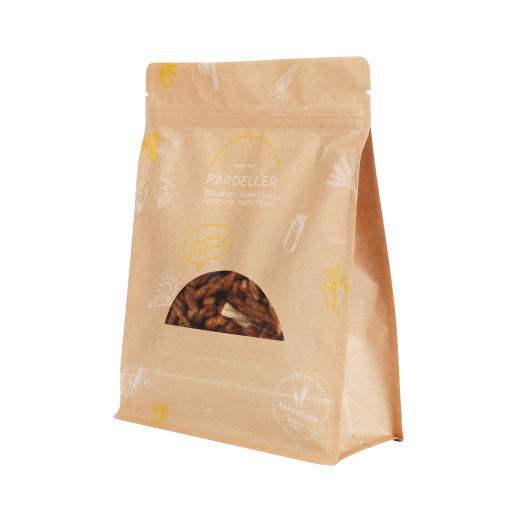
Sustainable packaging
Besides eco-friendly packaging solutions, sustainable packaging is another talking point in the packaging industry in Australia.
Sustainable packaging is the development and use of packaging which results in improved sustainability.
(source: https://en.wikipedia.org/wiki/Sustainable_packaging)
In other words, it means packaging with zero/less impact on the environment. Typically, recyclable, compostable, and reusable packaging. And it is a further step of eco-friendly packaging.
Find more about sustainable packaging in the Sustainable packaging industry in 2020.
The latest trends in food packaging
As the industry is highly competitive and dynamic, it is important to understand the trends in food packaging. By incorporating these trends into your packaging, you can give your products more advantages:
Minimalist design: This trend is everywhere, from book covers to road signs. Take a break from your big fonts and messy design.
Bold colors: Bold colors are very popular in food packaging. In addition to attracting the customer’s attention, they also complement the design layout. Protein bars are the best example of this trend.
The font gets bigger: why not list your ingredients in a big font? It looks good and shows your credibility to customers.
Following food packaging trends can help manufacturers ensure that their food has the correct brand and design.
Shape creativity: imagine a watermelon juice packed in melon slices. If you sell herbal products like aloe, why not sell them in aloe leaf-shaped containers? Understand the point? Many food companies are becoming more and more creative in packaging.
Functional packaging: Dunkin Donuts has introduced a coffee cup lid designed to carry sugar and cream and some extra coffee. More and more organizations are merging into this trend, making it easy for their customers to carry food.
Most importantly, every kind of food needs packaging to enter the market. However, choosing the right food packaging is equally important. After all, packaging not only contains and protects your product, it also builds brand recognition.
How to choose the right food packaging
Which packaging is suitable for your food? Well, there are many types to choose from, from glass, paper, corrugated paper to plastic. However, not all food packaging is the same. All people have their own advantages, but also some disadvantages.
When determining the correct food packaging, you need to consider two key points:
Packaging should ensure the safety of your specific food
It should attract the attention of customers.
As a savvy company, you want your food packaging to be suitable for environmental and waste management practices, but the harsh truth is that packaging materials cannot meet all these requirements.
After all, they differ for certain attributes, which are determined by the following factors:
-Material
-Design
-Types of food to be packaged
-Shelf life
-Environmental conditions
-Easy to use
-Deal with
-Costs related to production and distribution.
What can we do as citizens around the globe?
To reduce the amount of food packaging we take home, we can make some changes. For example, we can:
- Grow at least some of our food to prevent food shortages due to the use of food packaging.
- Buy local, fresh, organic produce whenever possible. Instead of buying processed, pre-packaged foods, cook your own fresh ingredients.
- When shopping, we bring our own shopping bags instead of using plastic bags in the store. Similarly, when we buy takeout food, we also bring our own containers to hold the food.
- Before you go shopping, make a list of what you want to buy; when you go shopping, but according to the list. After purchasing the items on the list, check out to avoid impulse shopping and shopping.
- Replace retail purchases with wholesale goods, or shop in zero-waste stores as much as possible.
Conclusion
A quick review of the contents above. We’ve discussed the following things in this article:
The packaging is important because nice packaging solutions can protect your food, make your food stand out, ease transport, and offer useful information.
The requirements for food packaging in Australia, including safety and packaging standards, and the detailed requirements for food packaging labels.
Food packaging innovations are greatly in need. And recycling is not enough to solve the problem while bio-plastic is more friendly to the environment.
We also talked about trendy food packaging solutions today. That includes the eco-friendly plastic family members: plant starches, bamboo bioplastics, algae/seaweed feedstocks, and mushroom feedstock. And other eco-friendly food packaging options such as kraft paper, palm leaf plates, and bowls, and eco-sugarcane.
Besides, we also talked about one of the major talking points in the industry: sustainable packaging.
And what we can do as citizens in the globe.
Like this article? Share to as many as your friends and enjoy it together. We appreciate it if you could bring them to our website and follow our blogs.
The Helpful Guide to Choosing Your Beverage Packaging
Introduction
Quality beverage packaging solutions are in great demand nowadays, given the growing need for beverages.
This ultimate guide is going to help you if you are:
- a packaged beverage supplier
- involved with the beverage supply chain
- a supplier of the beverage packaging industry
- any other needs for beverage packaging solutions
The beverage packaging market
Studies revealed that the global beverage packaging market size expects to reach $133.3 billion in 2026.
A lucrative number, given the growing demand for a variety of beverages.
And as the final part of the beverage supply chain, the beverage packaging industry benefits from the ever-growing beverage industry.
When it comes to beverage packaging, it is a complex process due to the various beverage types and requirements. The reason is, different types of beverages require different materials and containers, for convenience or need to keep fresh. And beautiful designs to catch consumers’ eyes as well.
Factors boosting the beverage packaging market growth
Improved lifestyles and increased per capita income (mainly in developing economies) have promoted the consumption of packaged beverages. Thus, the demand for better and convenient packaging technology is promoted.
Convenience factors in the beverage packaging industry allow for reduced waste and increased packaging resealing capabilities in the distribution process. It also allows for increased portability and reduced weight. So, it helps to save costs and thus boost the beverage packaging market.
Moreover, in urban areas, the increase in per capita income and the decline in water quality have led to an increase in the global consumption of bottled or packaged water. At present, the bottled water market is one of the fastest-growing markets.
Therefore, the rapid growth of the bottled water market has also promoted the growth of packaging required for bottled water production.
Also, many manufacturers have updated their production technology and applied automation technology in the production process. Therefore, production efficiency has greatly improved.
At the same time, the quality of products has also improved. These factors together lead to the overall growth of the beverage packaging market.
On the other hand, growing concerns about obesity and high sugar intake are leading to packaging strategies.
For example, sodas, alcohol, and sugary drinks. In the future, ordinary packaging may hinder the market.
However, the application of bioplastics in beverage packaging will create favorable opportunities for the growth of the beverage packaging market.
Also, there are alternatives to bioplastics known as biopolymers. It is a polymer made from plant-based materials rather than petroleum-based materials. So, this enables bio-PET containers to degrade and reduce plastic contamination.
The non-alcoholic beverage market accounts for more than half of the global market share.
However, the demand for packaging solutions will also grow rapidly by 2026.
Competition Analysis
The main market participants described in the report include Amcor plc, Ball Corporation, Orora Limited, Reynolds Group Holdings Limited, Smurfit Kappa Group plc, SIG Combibloc Group AG, Crown Holdings, Inc., Mondi plc, Stora Enso Oyj, and Tetra Laval International S.A.
Many competitors in the beverage packaging market have taken product release as their main development strategy. They hope to expand their product portfolio of recyclable beverage packaging. For example, in July 2019, SIG launched the signature pack 100 in France. This signature pack 100 is a sterile carton. And it’s aluminum-free, made from plant-based and 100% biodegradable polymers.
Similarly, in August 2019, Amcor developed a new line of polyethylene terephthalate (PET) bottles for the Salzburg beer brand in Brazil. The new bottles can last for four months, and people can recycle 100% of them using existing recycling technologies. Besides, the bottle has a glass-like appearance and has a metal crown, which is very beautiful. This makes it more attractive to customers.
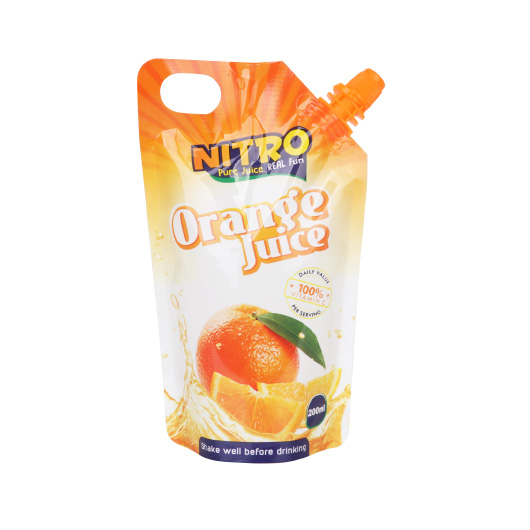
Why beverage packaging solutions worth our attention?
Beverage packages with proper designs can extend the shelf life of the beverage. That is to say, if you have the right options for your beverage packages, your beverages will live longer!
At the same time, a proper package solution can also save your material cost. And generate less waste to the mother earth.
Also, the packaging materials used for drinks include glass, polymer, metal, cardboard, and their combinations. The shelf life, chemical composition, and value of beverage determine what material the producer uses for packaging.
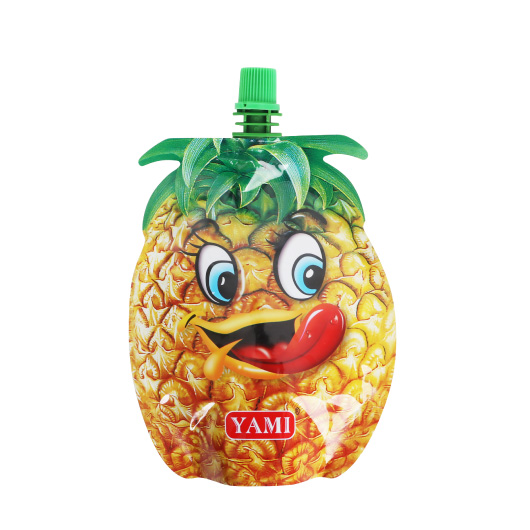
Types of beverage packaging
By beverage packaging materials
Glass beverage packaging
Glass beverage packaging has many advantages. First of all, it is non-toxic and tasteless. You don’t have to worry that drinking a glass drink will affect your health. They are very safe indeed.
Second, it is transparent. Then the glass beverage packaging will be very beautiful so that customers can see the appearance of the beverage. You know, it can stimulate their desire to buy.
Besides, the sealing of glass beverage packaging is very good. In this way, the air can be effectively isolated, to avoid the microorganism in the air and the beverage from the chemical reaction, resulting in the deterioration of the beverage.
Then, the raw material of glass beverage packaging is glass. Glass is very common, and the price is very low. Well, most drinks packed with glass materials are affordable.
Also, glass material has the characteristics of heat resistance, pressure resistance, and cleaning resistance. It can be sterilized at high temperatures and stored at low temperatures. In this way, you can store drinks well.
Finally, glass beverage packaging is reusable and recyclable. Glass bottle recycling can save energy and reduce the waste capacity of landfills. At the same time, it can provide more raw materials for other products, including glass bottles. It’s very good for protecting the environment.
Thus, glass beverage packaging is the preferred packaging material for beer, fruit tea, jujube juice, and many other beverages.
However, glass beverage packaging also has some disadvantages. For example, packing drinks with glass can make them heavy. Besides, due to the particularity of glass material, the packaging of glass material is easy to be broken and damaged during transportation. So that means it’s more expensive to transport.
Metal beverage packaging
The beverage packaging solution is happy to have metal as an option. It has good barrier property as glass beverage packaging. Metal beverage packaging can not only block air, oxygen, steam, carbon dioxide, and other gases.
At the same time, it can also block light, especially ultraviolet light. Therefore, it will not cause the deterioration or change of flavor.
Also, it’s easy to transport and store. This is because the metal packaging is rigid, easy to operate. As a result, this has greatly increased the sales radius of commodities.
Then, the metal beverage container is not easy to get damaged and easy to carry.
Nowadays, many young people like metal beverage packaging, cans for food & beverage packaging with easy-open lids. However, it adapts to the fast-paced life of modern equipment and is widely used in tourism life.
One of the reasons why metal beverage packaging is so popular is that it is friendly to the environment.
These packages are recyclable after use. Therefore, it can not only recover resources, save energy, but also eliminate environmental pollution. Even if the metal is scattered in the soil after corrosion, it will not hurt the environment.
Compared with glass beverage packaging, metal beverage packaging has more styles and a more beautiful appearance.
Metal containers generally have a beautiful metal luster, coupled with colorful graphic printing, but also increase the beauty of the goods. Therefore, when people give gifts, they often choose the goods packed in metal containers.
But its disadvantages are also obvious. First of all, its chemical stability is very poor.
Under the condition of acid, alkali, salt, and humid air, it is easy to rust. So, to a certain extent, it limits the scope of its use. Secondly, its price is relatively expensive and its economy is poor. However, this shortcoming is also gradually improved through technological progress.
Plastic beverage packaging
Plastic is a synthetic or natural polymer resin as the main material. After a special process, it can be used to package food and drinks.
The original container for beverage packaging was glass bottles, followed by paper composite cans. Later it became a PET bottle. Now rigid PET bottles are the biggest packaging materials for carbonated drinks and non-carbonated beverages.
Plastic beverage packaging is very light, convenient for people to carry. And it’s not afraid to break, not as easy to damage as glass beverage packaging. Therefore, it is very convenient to use it for long-distance transportation of drinks.
Also, it has strong acid and alkali resistance characteristics. Moreover, the production of plastic beverage packaging is very convenient, and manufacturers can standardize the production in batch.
However, when using plastic beverage packaging, you should pay special attention not to let it come into contact with vinegar or detergent.
At the same time to avoid direct sunlight, high temperature, etc. To avoid chemical reactions between plastic beverage packaging and these things.
Besides, when you buy plastic tableware, you should choose the product with PE (polyethylene) or PP (polypropylene) label. And choose less decorative patterns, colorless, tasteless, smooth surface of plastic products.
Even though plastic beverage packaging is recyclable, it is disposable. Compared with glass beverage packaging which can be reused, plastic beverage packaging is a less environmentally friendly packaging option.
Paper beverage packaging
Paper beverage packaging is of low cost and lightweight. This makes it easy to carry, which is conducive to the transportation of logistics. In addition, the beverage packed with paper materials does not need to worry about metal dissolution and odor.
However, paper beverage packaging generally uses high-strength raw cardboard materials. This is because pure paper packaging materials are difficult to package drinks. Commonly referred to as paper beverage packaging. Almost all of them are paper-compatible materials.
Also, composite paper packaging is widely used in beverages, especially non-carbonated beverages. Among them, dairy products are the largest application field. Fruit juice, tea, and coffee are the most commonly used compound paper packaging in beverages.
The biggest advantage of paper beverage packaging is that it can be recycled and reused. This is very good for environmental protection.
However, the pressure resistance and sealing barrier of paper-plastic composite beverage packaging are not as good as glass beverage packaging, metal beverage packaging, and plastic beverage packaging. And it can’t be heated at high temperatures.
Therefore, paper beverage packaging in the preservation process will encounter many problems. For example, it will reduce the heat-sealing performance of PE film due to oxidation.
Or it will be because of creases, under the fiber hardening and other reasons become uneven, resulting in the appearance is not beautiful. It will even cause the filling molding machine difficult to feed the problem.
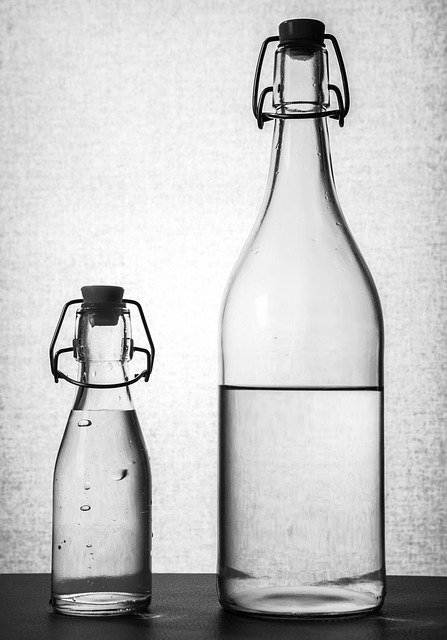
By packaging types
Beverage bottle packaging
The beverage bottle packaging is generally divided into glass bottles, plastic bottles, metal cans, and other types. Here we will introduce you to glass bottles, plastic bottles, and metal cans.
The glass bottle has obvious advantages, it is not disposable packaging, can be reused. And the transparent shape is very beautiful. But its disadvantages are also obvious. The glass bottle is not convenient to carry because it is heavy and easy to break. If you break it accidentally, the glass will scratch you.
Moreover, it is not convenient to clean if it is reused. If it is not cleaned, it is easy to cause cross-infection of bacteria and viruses. The material of a glass bottle is very special, and its price is high.
Now there are a lot of bad businesses, to reduce costs, will make fake glass bottles to replace the real glass bottles. And fake glass bottles are likely to have adverse effects on people’s health.
Compared with glass bottles, the cost of plastic bottles is very low. And it’s light and easy to carry. But the barrier of a plastic bottle is so-so, and it is easy to react with other chemicals from the packaged beverage. That can cause the beverage to deteriorate.
However, with the continuous update of new materials and technologies, plastic bottles with new materials have emerged. This can overcome the shortcomings of plastic bottles to a certain extent.
Beverage packaging boxes
The biggest advantage of beverage box packaging is that it is hygienic and convenient to drink. It generally adopts an aseptic and healthy packing box.
People use straws when drinking. This is to prevent consumers from bringing dust and bacteria into the beverage box when using the straws. Therefore, people can safely drink.
Besides, the beverage box packaging is very beautiful, its shape is regular, with a strong sense of design.
Moreover, it can avoid light and is convenient for the long-term storage of drinks. At the same time, it can be well isolated from the air and prolong the shelf life of the beverage.
The most reputational type of carton packaging is Tetra Pak. Tetra Pak is a liquid packaging product developed by Tetra Pak company in Sweden. The company is one of the world’s largest suppliers of packaging systems for milk, juice, beverages, and many other products.
Beverage pouch packaging
Beverage pouch packaging refers to the packaging pouches for beverages using processed phenylene materials.
Typically, beverage pouch packaging is common to see in packages for milk, juice, and other drinks.
Beverage pouch packaging has the characteristics of acid resistance, corrosion resistance, and aging resistance. This means that the beverage pouch packaging can play the role of isolation and protection. And the cost of beverage pouch packaging is very low, low price is a good choice for manufacturers to save production costs.
Also, the production of beverage pouch packaging is simple and easy to use.
You just need to put the beverage in the beverage pouch package and then seal the beverage pouch to complete the packaging. It can save waste resources in metal beverage packaging to a certain extent.
How to choose the right beverage packaging?
You created a magical beverage. Everyone will love it, and it will change the way people think about liquid consumption. But unless you plan to sell it by the glass only in your bar and/or soda fountain. Otherwise, you need some beverage packaging as beverage packaging will affect people’s consumption of liquid drinks.
Now your mind may just jump into a bottle or a bag, right? It’s a good start, but you have a lot to think about.
To decide your beverage packaging solutions: the question to ask
What is your beverage?
I reminded you that these are basic issues. The packaging is more than just a display of your drink. At the same time, it is also a physical container. Well, that means real-world attributes limit your choice of packaging. Is your drink carbonated? Or does it need to continue to be under pressure? Does it need temperature control? Is it going to mix with other liquids?
All these problems will affect the logistics demand for packaging.
Who is your customer?
Of course, everyone wants to have the largest possible customer base. But it’s not the way marketing works. You need to figure out who you are and the target drinker. Man or woman? Young or old? Connoisseur or amateur?
Also, don’t forget that there are legal restrictions on who you can sell certain types of drinks too.
How are your customers going to buy your products?
The question is as important as who will buy it. Well, you need to figure out your sales channels and where customers can buy your products. Will they find your drink at the retail store? Or in the bar? cinema? Bottle or box?
Once you dig into these questions (don’t worry, you may have multiple answers to the same question). Now, you can start designing your beverage packaging.
Need to Know
First of all, if this is your first drink, then you might design the packaging from scratch. But if it’s part of an established brand or collection. You have to make sure it matches your brand aesthetic. You must find your color value (CMYK or Pantone match) because this is what you need when printing. Again, you must use the font you have created. Of course, if possible, you must have the original file of your logo.
Next, you start creating everything specific to each wrapper layer. This will likely include written copies, as well as logos or brand logos. If there are photos that match your taste, you may want to print them on the outer packaging.
Also, don’t forget that you need to make space for the legal signs. Such as bar codes, nutritional information, and alcohol content.
In addition, many things like batch numbers and expiration dates change periodically. You set aside space to label or stamp every batch of drinks you produce.
Although your enthusiasm for drinks is free, the packaging is not. So, you need to consider the cost of printing and manufacturing.
As mentioned above, not every package of your drink is unique. Your product packaging design will have fixed costs (e.g. hiring designers), as well as project costs (labor, materials, such as stamps, and stickers mentioned earlier). It’s like any good drinker, and you certainly want to cut costs.
But sometimes your frugality is not worth it. Better materials contribute to a better presentation. For example, luxury drinks can stand out on shelves with some luxury packaging.
Make your own beverage packaging designs
The first step
The first is to determine what kind of packaging you want: pop cans? Bottle? Or some kind of space-age pouch? Also, are the bottles in boxes or sold separately?
The unique shape of the bottle will brighten your eyes. But with this kind of packaging, how to stick the label is a headache. Because you need to make sure you have a flat, or at least regular, surface for printing or pasting labels.
Next, another thing to consider is the cost of unique packaging elements. This cost is not only one-off, but it also includes the cost of each unique container. A two-liter soda may not be its standard capacity, but its standard shape and size keep costs low.
Also, remember that your special types of drinks need special lids to keep them. These may depend on your capacity. The price of each item will also vary, but they are also an opportunity for your drink to stand out from the crowd.
Even if your drink is a regular shape, a beer can, for example. But it still affects your label. Some images look good when they are flat on a computer screen, but when printed on a convex surface, they deform and become ugly.
It’s Dangerous to Go Alone!
When you’re busy making your magic drink, you probably can’t make much time for graphic design at the same time. don’t worry!
Many amazing beverage packaging designers are working with PrimePac, ready to work with entrepreneurs like you.
But please don’t just focus on your designers. You should also contact a professional printer at the same time. Try to get your printer involved in the process as early as possible. Because they will have a lot of demands on your designers. For example, the type of file format, color options, and coloring lines. But some of them are technical specifications and you don’t need to worry too much. However, you should pay attention to the mold line, which is the plane representation of 3D packaging. This will help you understand the standard options for you.
What’s Most Important to You?
You may have a lot of new ideas about your drink. It’s delicious, it’s healthy (maybe), it’s smooth, it’s delicate. But your customers are less likely to notice these points when they’re browsing the wine shelves in the supermarket. So, what do you want them to see most?
At this point, you need to work with your designers on the so-called “information architecture.”. Arrange your main gains in terms of importance. So this is how to guide your packaging design. Therefore, your design center is the most important, whether it is a brand name, or logo, or other complete.
A Second Opinion
After you and your designers have been working on your packaging for some time, you may start to lose some inspiration or ideas. At this point, it may be difficult for you to objectively judge whether the design you propose has achieved your goal. Don’t worry, it’s normal, it’s part of the process.
The next step is to get feedback. You need to do as little publicity and set up as possible to show your drinks to different groups of people. They should be potential buyers of your drink. As a result, this may include employees, loved ones, neighbors, and even strangers on the Internet. Most importantly, they are anyone who can give you an honest and relevant opinion.
There are no problems that don’t need to be understood. You can ask them: what kind of drink is this? Who would like to drink it? Does the packaging reflect the beverage itself? Does it stand out from the competition?
If their answers match your own, Congratulations! It’s time for you to print (follow the delivery instructions discussed earlier).
If there are differences, you need to ask follow-up questions. Then find out how your statement differs from their acceptance. Remember to take these notes seriously and discuss them with your designers. Because it will affect the sale of your drink. And it’s not a terrible thing to go back to the drawing board, it’s just another step in the process. It’s even worse if you use a useless package and you don’t find the problem until it’s on the market.
The criteria for your beverage packaging choice
The right packaging – Criterion 1: Type of drink
Which kind of packaging is the best? It depends on the type of product in the first place.
People often forget that packaging has an important function. For example, protection functions, storage, and transportation functions. And information functions such as ingredients, sugar content, best date, barcode, or processing notification as well.
Whether it is milk, mineral water, lemonade, or juice, each beverage has its own packaging requirements. Milk beverage and beer suppliers can use dark packaging away from light since sunlight affects their quality.
Although suppliers often use them for milk packaging, glass bottles might not be the best choice. There are emotional reasons for the fact that milk is often in glass bottles. As milk is a natural product, glass bottles often come with an impression of special cleanliness. That’s why suppliers often choose it for packaging.
And the following topic also worth our attention. You have to distinguish between fresh milk and packaged milk. Fresh milk often comes with beverage cartons without aluminum layers. But packaged milk, on the other hand, requires an aluminum layer in the beverage carton.
As for drinks like beer, have special packaging requirements in most cases. As they contain carbon dioxide, none of these drinks can retain fresh in a composite carton. Lemonade, as another example, needs a stable size package to keep it carbonated.
The right packaging – Criterion 2: Transport route from bottler to consumer
For PET bottles, there are disposable and recyclable products. Among them, the wall of PET recyclable bottles is thicker than that of pet disposable bottles.
Environmentalists often vilify all forms of plastic.
But in fact, PET bottles have a better reputation for ecological balance. They’re lighter, so they save resources in production. And they save energy in transportation.
Therefore, the length of the transport route is a key factor in determining the sustainability of packaging.
If the transportation distance from the filling point to the supermarket is not too long, reusable bottles are appropriate. For long-distance transportation over 200 km, on the other hand, pet disposable bottles are more friendly to the environment. The reason is the carbon footprint in the exhaust gas is very long.
Finally, the recyclable bottles must be returned to the bottling plant, which means twice the distance. For a reusable bottle, the key factor of ecological balance is not only the transport route. The number of cycles it takes also matters. For instance, a glass recyclable bottle can serve 15 to 20 times for a good life cycle assessment.
However, PET recyclable bottles should be cycled at least 8 to 10 times. The life cycle assessment of bottles with low cycle times is poor even if they are reusable.
The right packaging – Criterion 3: weight and shape
In fact, in Austria, the maximum weight of each truck loaded can reach 38 tons. The rule is that the lighter the package, the more liters the truck will carry. For example, a glass bottle weighs 500 grams, while a one-way PET bottle weighs only 25 grams!
If it’s a glass bottle, especially if the bottle is transported. For boxes, cans, and PET bottles, the most important thing is to bring the drink to the desired location. In this way, transportation efficiency is high.
Besides, the shape of the package also plays a role: conical glass bottles require more space than cans or beverage boxes.
In summary: The most important rules at a glance
The key factors determining whether one beverage package is more environmentally friendly than another are summarized as follows:
- Content: what properties must the packaging meet in terms of barrier performance and light protection?
- Compared with other packaging solutions, disposable glass bottles have obvious disadvantages because of their higher weight
- Recyclable pet disposable bottles often have advantages over reusable glass bottles
- The higher the recycled content in the packaging, the greater the impact on the environment
- Reusable bottles are appropriate if the transport distance between the filling plant and the consumer is low, e.g. for regional products
- The quality of disposable containers, especially the quality of bottle caps
- The high recycling rate of reusable containers
- Number of containers per truck
- Separate collection of disposable packaging.
What is the best choice for beverage packaging?
Honestly, the “best” packaging doesn’t exist.
And the sustainability of a packaging solution depends on many factors. The type of the drink, the distance of transport, and the weight of the packaging all matter.
So, the best choice for beverage packaging depends on what you want them to do.
Send us a message and tell us your needs, we will get you a suitable solution.
The trendy beverage packaging solutions
How to stand out in the saturated packaging industry?
These can be the common question of every beverage manufacturer.
At the same time, keeping up with fast-changing consumer demand makes the circumstance even harder.
Now, many large manufacturers launch new products regularly. But new product categories and products from small companies are breaking the status quo. Many companies make efforts to innovate packaging. By doing so, consumers will change their views of beverage categories, such as soda and beer. As a result, they may buy more beverages.
Smaller packaging sizes, many packaging, and situational packaging types are more and more popular.
Packaging innovation has become a way for beverage companies to meet the changing needs of consumers and attract them to buy. And it will continue to be a big trend in the industry.
Targeting millennials
Millennials are people that were born at any time during the early 1980s to the early 2000s. They have unique personalities and always have their ideas. Targeting millennials seems like a broad and amorphous goal. But don’t worry about it. According to a lot of studies, millennials have something in common. For example, millennials prefer fresh and less processed food. From this, we can know that they like to buy fresh and prepared food in leisure fast-food restaurants. Also, they like to buy non packaged food at a grocery store.
Packaging for convenience
The convenience of packaging is one of the selling points of food and beverage products. Consumers are more likely to buy portable, light products. Products that can be resealed or easy to open are popular, too. In conclusion, the convenience of packaging has a positive impact on consumer buying decisions.
Smaller sizes
Mini cans and bottles are one of the most important driving forces for packaging innovation. Coca-Cola and PepsiCo have reported a drop in sales of large packaged sodas.
By contrast, sales of smaller packages, such as 7.5-ounce mini cans and 8-ounce Mini bottles, have risen. At an earlier meeting, Sandy Douglas, President of Coca-Cola’s North America Division, said the packaging of smaller sizes would be a way for the company to reinvent its soda business in the next few years.
Why do soda companies need to reduce the scale of packaging? There are two main reasons.
The first one is to increase profits. It is inevitable to increase profits in exchange for convenience.
The other reason is that soda companies have to consider national soda tax proposals. The proposals from the World Health Organization, the Food and Drug Administration, and the 2015 dietary guidelines.
These proposals and guidelines require consumers to reduce sugar intake. But as we all know; soda water is characterized by its high sugar content. So, soda companies had better reduce the scale of packaging so that consumers reduce sugar intake.
So, an 8-ounce can of coke is the perfect way to keep people’s coke at the ideal level. But “8-ounce” is not suitable for other drinks. It is only the perfect capacity for coke.
Reed also said that smaller packages are more common among large manufacturers than small soda ash producers. After all, large companies have abundant capital capacity and strong production capacity. It is easier for large companies to change packaging flexibly.
At last, Reed said that large manufacturers are very good at understanding the needs of customers. They can always improve their packaging to meet the needs of customers.
Getting the right count
Major beer producers are experimenting with the number of individual products in multiple packages of different sizes.
They want to figure out the right number that can make the best use of the shelf space. They want to find out the right number of products for different retailers, such as grocery stores, drugstores, and convenience stores.
In fact, despite the number of products in multiple packages, manufacturers also change the price of multiple packages in different stores.
Reed said he could sell 15 bags at Walgreen and 12 bags at the grocery store. And the prices are different. There are many sales channels like these two.
Manufacturers are trying to learn the needs of different kinds of customers. They also try their best to find out the ideal price and the most popular packaging for different types of customers. They learn these for the sake of profit.
But actually, much of the packaging that the design is especially for retailers, like grocery stores. Different retailers need different packages and sizes.
The sampler packs
Sampler packages have appeared on the market, especially in the beer industry. According to Reed, the trend of sampler packages is more common among craft brewers than among major brewers. In fact, handmade wineries tend to produce several varieties.
Through sampler packages, they can pack several varieties of products in multiple packages.
Reed says there are many flavors in handmade wineries and they always want customers to try a new fresh one. So, they’ll give customers a package of 12 bottles. But among the 12 bottles, there are three different flavors, 4 bottles for each flavor.
A package for every situation
At present, the major beer manufacturers do not provide many flavors.
Instead, they prefer to introduce a variety of packaging types. Bottles and cans can come in different sizes, and the bottle itself can have long or short necks.
Beverage packaging can be glass or aluminum when it comes to materials. It all depends on what consumers want to drink. For example, cans and bottles can be very different from each other in terms of context. Think about the lines on the Coca-Cola bottles.
Studies show that people tend to use bottles at home or in their daily life. As for travels, camp or going to other places, they are more likely to use cans because they are easier to carry.
Manufacturers recognize that when consumers use a product, the configuration needs to vary according to these conditions.
See them through
According to the 2015 packaging fact report, see-through packaging is going to make the products more transparent.
As a result, more drinks are appearing in transparent plastic, glass, and other see-through packagings. More than the information on the label, a transparent package allows consumers to see the product before buying it.
Manufacturers of visually attractive beverages benefit from see-through packaging in particular. And the drinks featuring another fast-growing consumer trend, plus those famous for natural ingredients as well.
According to the Wall Street Journal, the bottle gives consumers the feeling of drinking something fresh.
However, a disadvantage comes along with the benefits of this packaging.
Some products degrade and change when exposed to sunlight. So, that’s what manufacturers need to remember when testing this packaging innovation.
More and more marketing personnel package their products in transparent or windowed packaging.
This is because transparent packaging can stimulate consumers’ desire for transparency in food and beverage production.
As a result, companies transparent in their raw materials, and business practices are benefiting from the trust of consumers.
Biodegradable beverage packaging
Eco-friendly beverage packaging is nothing new, but a growing trend.
More and more companies and consumers are aware of innovative recycling methods and the benefits of them.
And the big brands are just leading their way to it. For example, Carlsberg and other large wine brands are actively supporting the research on the innovation of biodegradable beverage bottles.
To achieve the eco-friendly packaging goal, a partnership with a reliable packaging company will definitely be a wise idea.
At the same time, the prospect of advanced recovery methods is also very good.
In the soft drink industry, Coca-Cola and other beverage giants are leading the trend with eco-friendly packaging. This encourages many other beverage brands to follow.
Beverage manufacturers have been choosing recyclable PET bottles and aluminum cans for decades.
Research shows that this kind of packaging affects consumers’ buying decisions.
However, with environmentally friendly packaging innovation, manufacturers will begin to adopt new forms of beverage packaging.
In particular, packaging solutions with plant-based, recyclable and renewable materials.
About a decade ago, Coca-Cola launched the world’s first 100% plant-based PET bottle as part of its 2009 plant bottle program.
Another example of Nestle Water North America. The company has launched a new bottled natural mineral water brand for the first time earlier. And the packaging of this natural mineral water is 100% recyclable, except for labels and caps.
Moreover, DuPont and ADM introduced biodegradable packaging materials made from fructose polymers. One of the materials is particularly suitable for beverage manufacturers to package beverages for its gas barrier properties.
Beverage manufacturers have been innovating packaging to satisfy the needs of consumers. However, with the rapid change of consumer demand, those packaging designs must keep pace with the changing demand.
Stand-up beverage pouch packaging
Stand-up beverage pouch packaging is getting more and more popular. And this trend is likely to continue.
Brands like them because they provide the ability to print vivid, clear designs. At the same time, stand-up beverage pouch packaging can also provide free creative space for packaging designers.
What’s more, independent stand-up pouches offer more possibilities for brands. It identifies the brand itself from competitors and stands out on the shelf.
Stand-up beverage pouches are lighter than metal cans or plastic bottles. In the meantime, empty bags can be transported and stored flat and that’s why they only take up a small part of the truck space.
As a result, they have the smallest environmental footprint.
Leading beverage packaging companies: the big players
Amcor PLC
The Amcor Group is a leading company with operations in many countries to improve and make high-quality packaging products.
The company deals with a series of flexible and rigid packaging products. It is also good at making cartons and closures. You can see their products in many fields like food & drinks, pharmaceutical, medical device, and home.
Also, you can find their footprints in the personal care industry.
Today, Amcor focus on packaging innovation. Their products come with a bunch of new features such as reusable, recyclable, and lightweight packaging solutions. In January 2018, Amcor promised to make their packaging products recyclable or reusable by 2025.
Headquartered in Australia, the company has about 48,000 staff. Its businesses have covered more than 40 countries. And has created a sales amount of $13 billion.
Ball Corporation
Ball Corporation is in the U.S. It is a global leading company offering metal packaging.
The company has packages for drinks, food & household products, and solutions for customers from various industries.
Recently, Ball Corporation introduced ReAl. It’s a very important and game-changing technology using recycled aluminum to make the metal alloy. With the use of it, metal alloys can be stronger and help to reduce the overall weight of the container. And remain no harm to the whole package.
In 2015, Ball Corporation introduced aluminum aerosol by working together with Henkel Beauty Care. It is a lighter version of ReAl.
Orora Limited
As one of the leading packaging companies in Australia, Orora’s branches span 7 countries.
Currently, Orora has more than 6,800 team members.
The company provides an extensive range of packaging products including bottles and cans, boxes, and cartons.
In addition to general packaging products, Orora also works with packaging solutions and displays.
The company acquired IntegraColour in March 2016, a known provider of display solutions and services. To speak of it, IntegraColour has been the partner of Lowe’s for 15 years.
Besides packaging, the company shows its leadership in renewable energy. Accordingly, Orora has invested over $10 million in energy efficiency projects across Australia and New Zealand.
Reynolds Group Holdings
Reynolds Group Holding is a leading global packaging company.
Based in Auckland, it produces and supplies food service and consumer drink packaging products. The group is also a manufacturer of germ-free packaging solutions like filling machines, paper boxes, and spouts.
The product lines of the Group have covered various applications. It has consumer products like wraps, aluminum foils, trays, and pads. And packaging materials for household and car industries as well.
Also, the packaging solutions of the company have helped industries like retailers, big purchasers, grocery stores, and more.
The group has an association with the former Reynolds Metal Company, the second-largest aluminum company in the USA.
Smurfit Kappa Group
Smurfit Kappa is one of the leading providers of paper-based packaging solutions in the world.
As one part of the Financial Times Stock Exchange 100 Index (also known as FTSE 100 Index), Smurfit Kappa have its headquarters in Dublin. And it has connected with 23 countries in Europe and 12 in the Americas.
This company has created a revenue of over $10 billion. With an employee base of 46,000, it supports about 350 production sites in 35 countries.
The Group shows its care about the earth by making environmentally friendly products. Its products have helped many countries.
Reports told that the investment by Smurfit Kappa in Mexico is one of the largest investments in the country.
Recently, the Group is one of the talking points of sustainable packaging technology.
Stora Enso OYJ
Stora Enso is a famous company good at solutions based on wood and biomass.
If you’re not familiar with biomass, it’s the name for natural materials used as fuels and industrial production.
Based in Finland, the packaging company is a key provider of renewable eco-friendly products in packaging markets in the world.
The eco-friendly packaging products by Stora Enso enable a low-carbon option to products with non-renewable materials.
The success of the great packaging company is seen by various awards, the Golden Egg Award in Sweden, for example.
Currently, you can find their packaging solutions in many places. Like personal care, food, drinks, and other industries.
Crown Holdings, Inc
Crown holdings are one of the largest packaging industries in the world.
Based in the U.S., it is the best producer of food cans and metal vacuum closure in the world.
This company has helped the packaging industry with many applications, including drinks, food, health & beauty, etc.
Recently, Coca-Cola worked together with Crown Bevcan and Chromatic Technologies Inc. They are going to make cans with inks that can change with temperature.
Mondi PLC
Mondi is a leader in packaging and paper while it deals with every vertical field of packaging.
On Feb 21, 2018, Mondi introduced a plastic laminate for pre-made pouches, which is entirely recyclable.
This sustainable material helps us with a positive environmental effect and value creation.
At the same time, the performance and properties of the new material are as strong as the conventional ones.
In other words, no sacrifice of performance while being friendly to the environment.
Graphic Packaging International PLC
Graphic Packaging is one of the leading producers of paper-based packaging solutions for many products.
You might find the company’s packages for some world-famous brands.
You can find applications of the company’s product in the following applications. That includes food, beverage, personal care, pet care products, household, and more.
According to the company, they have over 70 facilities in the world. And they emphasize renewable, recycled, and recyclable materials in their product portfolio.
The impact of COVID-19 on the global beverage packaging market
COVID-19 has had a huge impact on the food supply chain in all regions, including North America, Europe, Asia Pacific, South America, and other parts of the world. Due to the spread of COVID-19, deaths and long-term health effects are increasing.
This led the government to implement strict blockade regulations, which affected all aspects of the economy.
Governments around the world have formulated policies to deal with the various impacts of COVID-19 in order to avoid supply chain disruption, rising raw material prices, and severe economic impact on employees.
Europe and the Asia-Pacific region are some of the major regions severely affected by the COVID-19 scenario.
This is because of the large number of recorded cases in these regions, especially in countries such as Spain, Italy, France, Germany, and Japan, China, and South Korea in the Asia-Pacific region.
Companies in different countries are developing innovative technologies that are environmentally friendly and protect beverages from any type of bacterial contamination.
Market dynamics
Driver: Growing beverage consumption in emerging economies
The growing global population and the disposable income of growing developing economies are creating new avenues for packaged beverages.
According to data from the Brewers Association, the total value of the beer market in 2020 is 94.1 billion U.S. dollars, while the total value of the craft beer market is estimated to be 22.2 billion U.S. dollars.
According to data from the World Health Organization, per capita, alcohol consumption (liters) per capita (over 15 years of age) was recorded at 8.6 liters in 2010 and increased to 8.8 liters in 2016.
The increase in urban population, coupled with changes in lifestyle, has led to an increase in the total consumption of packaged beverages in emerging economies such as India.
According to data provided by the World Bank, in 2009, approximately 30.58% of India’s population lived in urban areas, and this proportion rose to 34.47% in 2019. According to a study published in the journal The Lancet, alcohol consumption in India increased by 38.
Between 2010 and 2017, the per capita consumption percentage rose from 4.3 to 5.9 liters. The large populations of emerging economies such as India and China are expected to drive the development of the beverage packaging market.
The increase in health awareness among young people has increased the demand for packaged fruit juices, energy drinks, and health drinks, providing huge opportunities for manufacturers to increase sales.
In addition, the increase in tourism, the easy availability of bottled water, and the preference for healthy lifestyles have also increased the demand for bottled water and flavored water added with vitamins, natural flavors, or the same flavor substances as natural, such as basil, lemon, Mint, orange, hibiscus, and fruit.
Restriction: strict environmental legislation
Packaging waste can harm the ecosystem because it takes decades to decompose.
Governments around the world are solving this problem by implementing strict laws that the beverage packaging industry must comply with.
For example, European governments have adopted various measures to deal with packaging waste and recycling issues.
One such piece of legislation of the European Commission is “Directive 94/62/EC of the European Parliament and of the Council of December 20, 1994, on packaging and packaging waste”.
The directive provides measures aimed at limiting the generation of packaging waste and promoting recycling, reuse, and other forms of waste recycling.
Opportunity:
Increasing use of biodegradable and renewable raw materials
The increasing consumer awareness of environmental safety and the increasing popularity of environmentally-friendly products provide huge opportunities for beverage packaging product manufacturers.
According to a study by the American Retail Federation, 69% of participants in North America are willing to pay high prices for recycled products, while 80% of participants want to know the source of the products they buy.
Bioplastics are polymers obtained from renewable resources, such as corn starch, wood chips, vegetables, and fatty oils.
Bacardi Limited announced in 2020 that by 2023, all its brands will use biodegradable plastic packaging made of 100% vegetable oil.
Therefore, beverage brands have switched from traditional materials to bioplastic bottles to package their beverages, providing new opportunities for players in the market.
Challenge: The high cost of sustainable packaging
Consumers need sustainable beverage packaging solutions while taking into account the health and environmental issues associated with the use of synthetic polymers.
Beverage packaging companies try to use their available resources to ensure product quality and safety, but sustainability factors will increase overall production costs, thereby affecting overall profitability.
The increase in final packaging costs may affect sales.
Therefore, this two-way challenge forces the company to find an intermediate path to balance VA.
Conclusion
A glance at the things we just talked about today.
- The current beverage packaging market is growing and expect to reach a size of $133.3 billion in 2026.
- Beverage packaging solutions worth our attention, as proper beverage packaging solutions bring us lots of benefits.
- We introduced the types of beverage packaging: by beverage packaging materials, and by packaging types.
- Ways to choosing the perfect beverage packaging and the criteria
- The beverage packaging solutions in the trend
- Big players in the beverage packaging industry today
ECO-friendly packaging for cosmetics - packaging in our life
ECO friendly packaging for cosmetics
Packaging in our life are more sustainable right now!
In the packaging era, consumer demand for product packaging changes with social hot spots. In recent years, the hottest topic has been environmental protection. Environmental problems caused by rising global warming are reminding people of the importance of the protection of bad environment all the time. Therefore, more and more packaging suppliers also begun to seek sustainable and environmentally friendly packaging to minimize environmental pollution and increase the availability of packaging. Thus, ECO-friendly packaging for cosmetics was being hot discussion right now

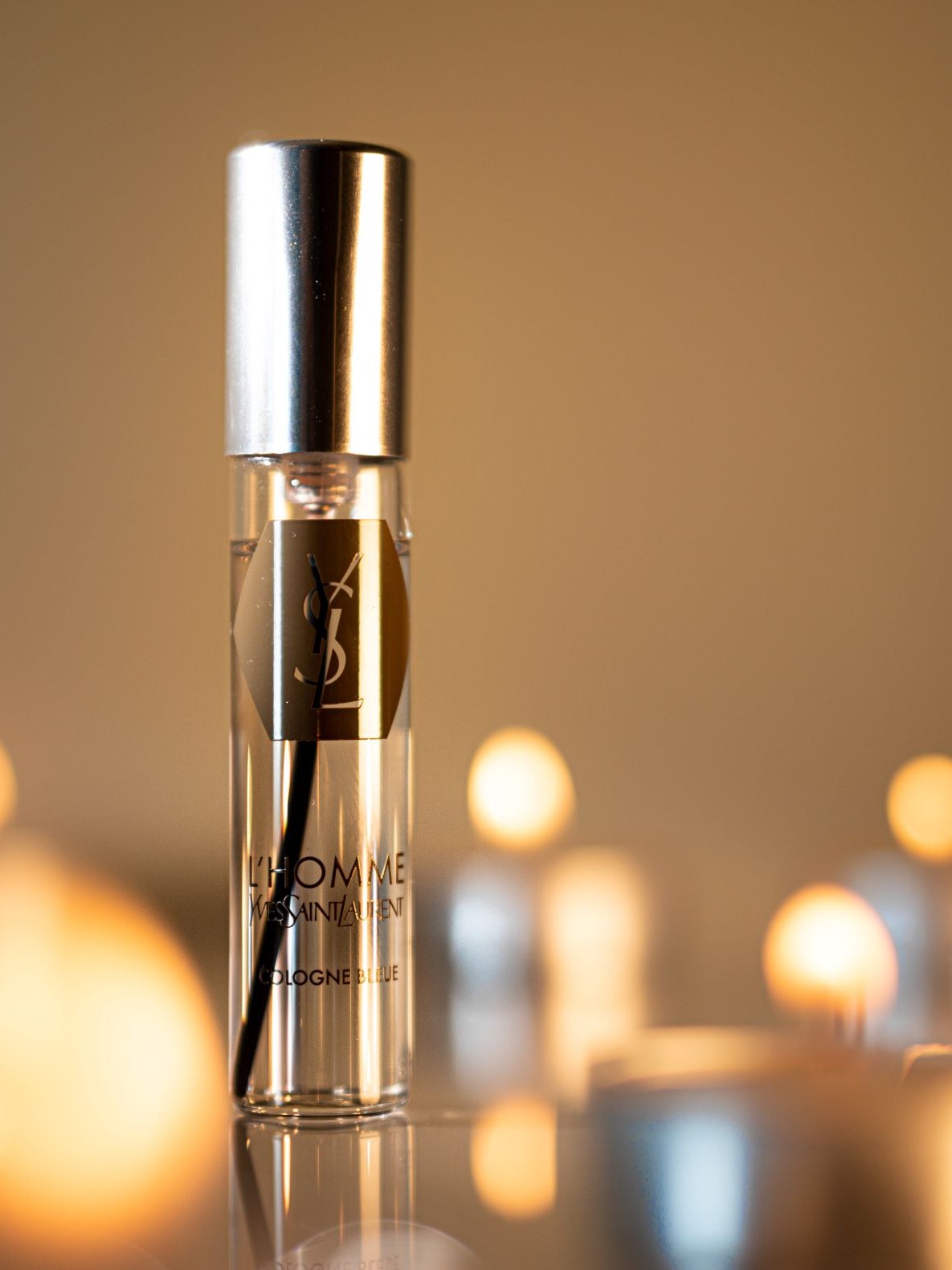
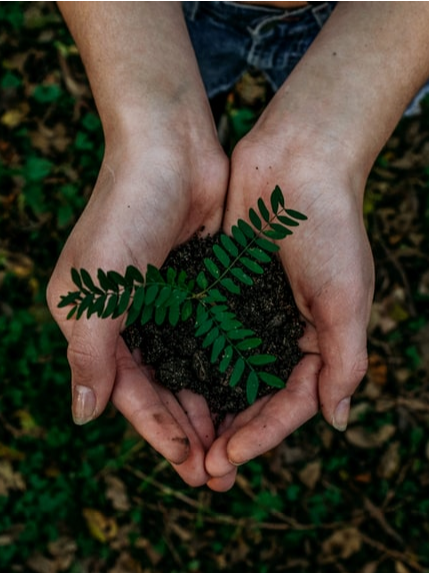
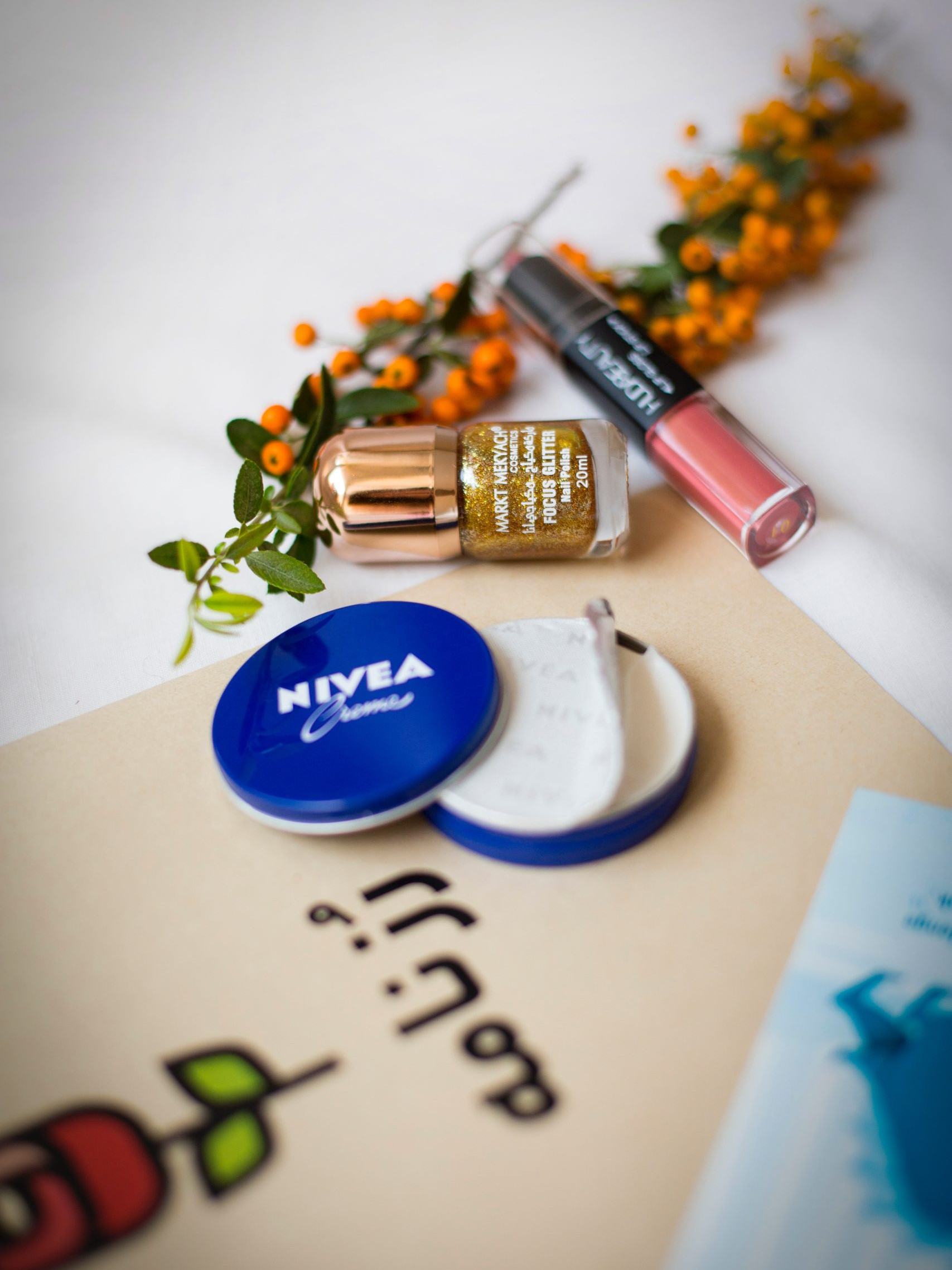
What is ECO-friendly packaging?
ECO-friendly packaging can also be called pollution-free packaging and sustainable packaging. It refers to packaging that is harmless to the ecological environment and human health, can be reused and recycled, and is in line with sustainable development. From a technical point of view, green packaging refers to a kind of environmentally friendly packaging developed from natural plants and related minerals that is harmless to the ecological environment and human health, is conducive to recycling, and is easy to degrade and sustainably develop. The life cycle of its packaging products from raw material selection, product manufacturing to use and disposal should meet the requirements of ecological environmental protection. Eco-friendly packaging should be implemented from three aspects: sustainable materials, packaging design, and vigorous development of the green packaging industry.
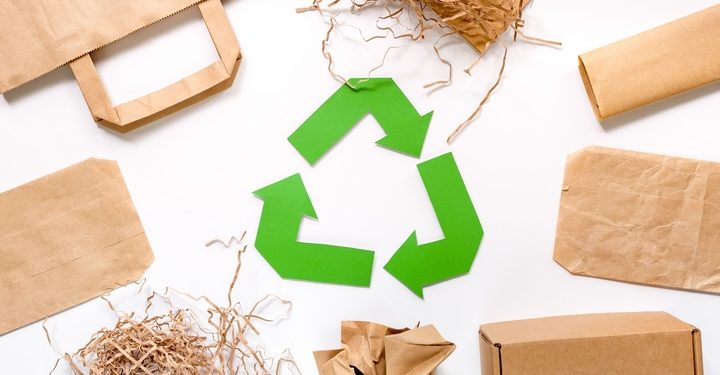
Its concept has two meanings: one is to protect the environment, and the other is to save resources.
The two are complementary and indivisible. Among them, protecting the environment is the core, and saving resources is closely related to protecting the environment because saving resources can reduce waste, which is actually the protection of the environment from the source in ECO-friendly packaging for cosmetics.
Whether you discard the biodegradable sugarcane packaging or reuse it for other purposes, you can rest assured that once you use the perfect products, they will not cause harm to the earth.
In essence: Eco-friendly packaging is to reduce energy waste during product design, production, and to minimize energy consumption. It can be recycled and reused, or it can be degraded in a simple natural environment.
The essence is to minimize the price of its damage to the ecological environment. Eco-friendly packaging is mainly manifested as the greening of raw materials for packaging production, the greening of packaging design, greening of packaging methods, greening of packaging operations, greening of production processes, use of greening, and recycling of packaging materials, etc.
Types of Eco-friendly packaging materials
Paper and cardboard is reusable, recyclable, and biodegradable in ECO-friendly packaging for cosmetics. There are a number of advantages to this type of packaging product, not least the fact that they are readily available. Many packaging manufacturing companies offer an environmentally friendly option that has been created using a high proportion of recycled paper.
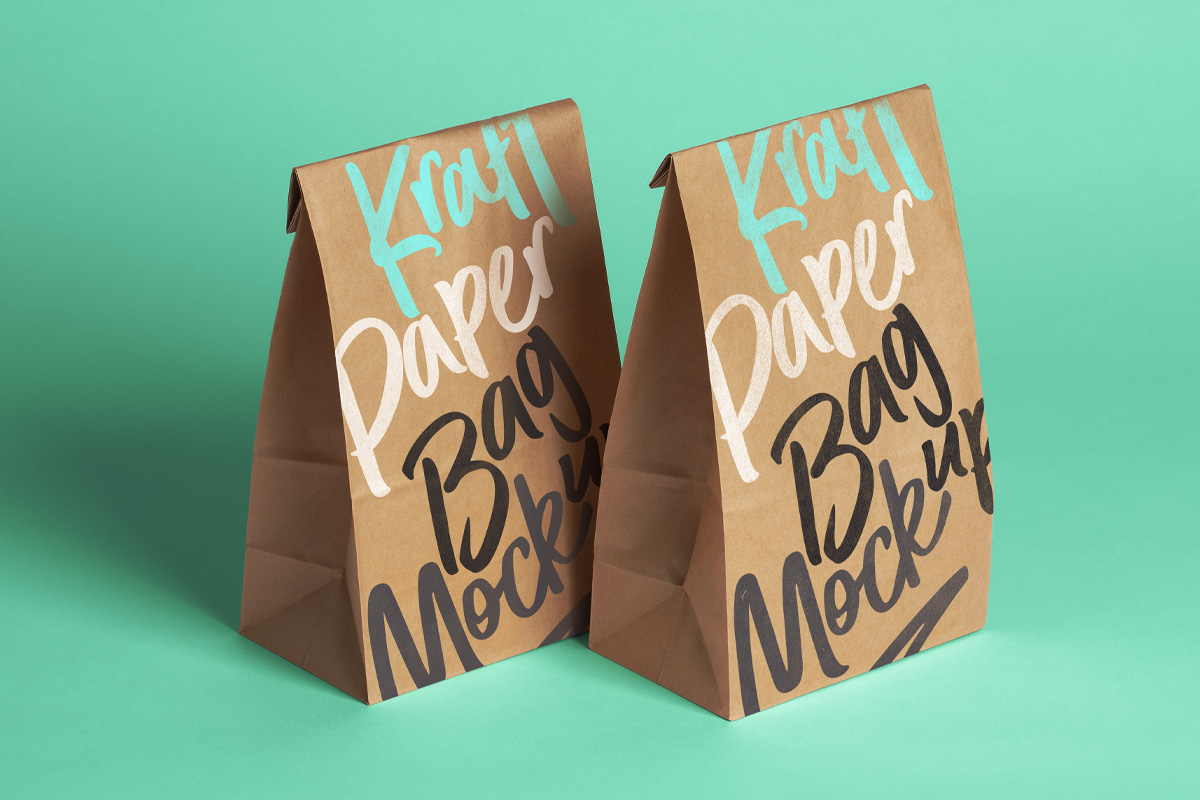
This is now commonly used in plastic bags and is also used in other items such as envelopes used for bulk mailing. This type of plastic starts to decompose when it is exposed to daylight and is a good alternative to traditional plastics.
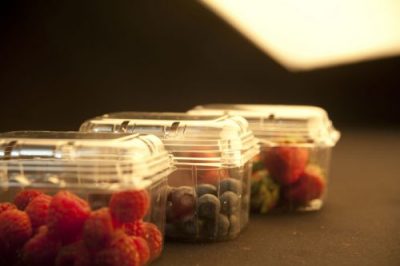
Ensuring all your items are properly insulated is important, regardless if you’re packing fine china or things that may be heartier. Using biodegradable packing peanuts is a great idea and can help the environment. These will make your packing easier and can allow you to remain eco-friendly
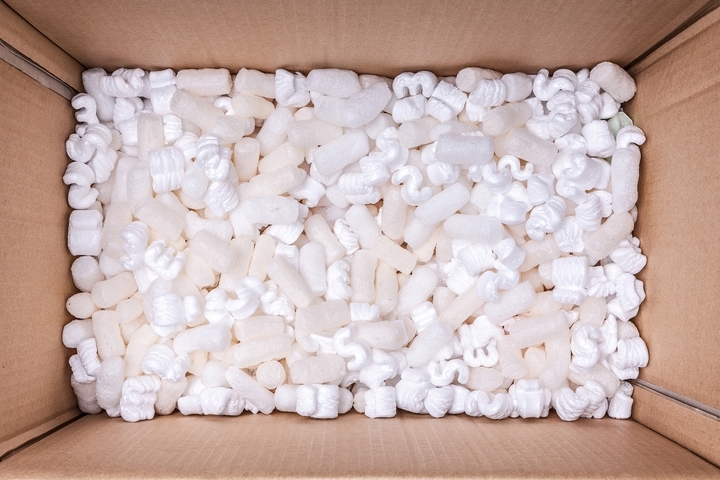
Adding inflatable air pillows to your packing supplies can be useful. These eco-friendly packaging materials are ideal to assist in ensuring all your belongings will have the right level of protection and cushion.
Fortunately, you can choose small bags that are filled up with air for this item. There’s likely to be much less damage to any of the goods you need to transport when you do. All these bags can be put to use by others at a later date. This is typically an inexpensive method for keeping your packaging materials good for the environment.
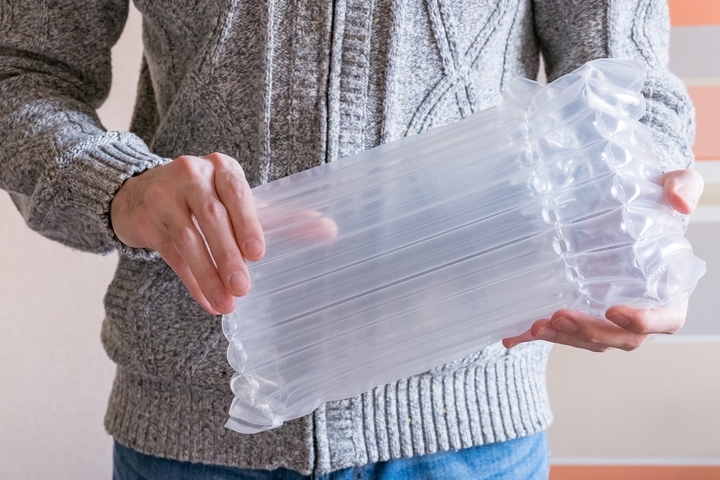
This is widely used as a packaging material. Environmentally friendly alternatives include bubble wrap made from recycled polythene and bubble wrap which is completely degradable.
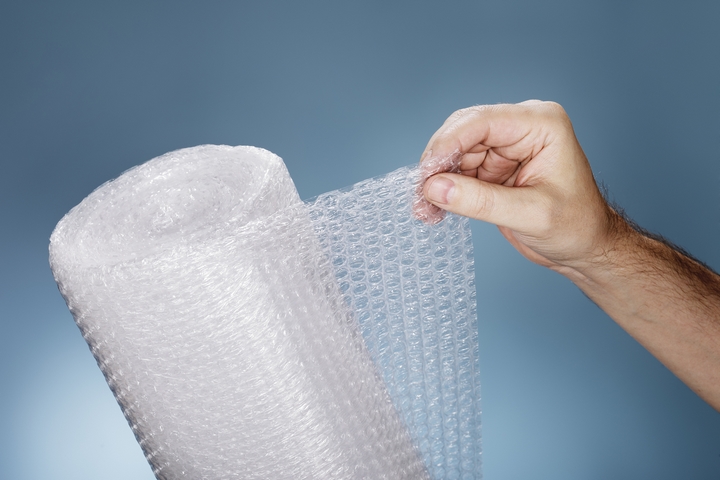
The PP woven pack, as it’s name suggests, is made from polypropylene resin (PP), which is a recyclable thermoplastic material. Using this element in out production allows the development of light yet steady composition that can handle heavy weights.
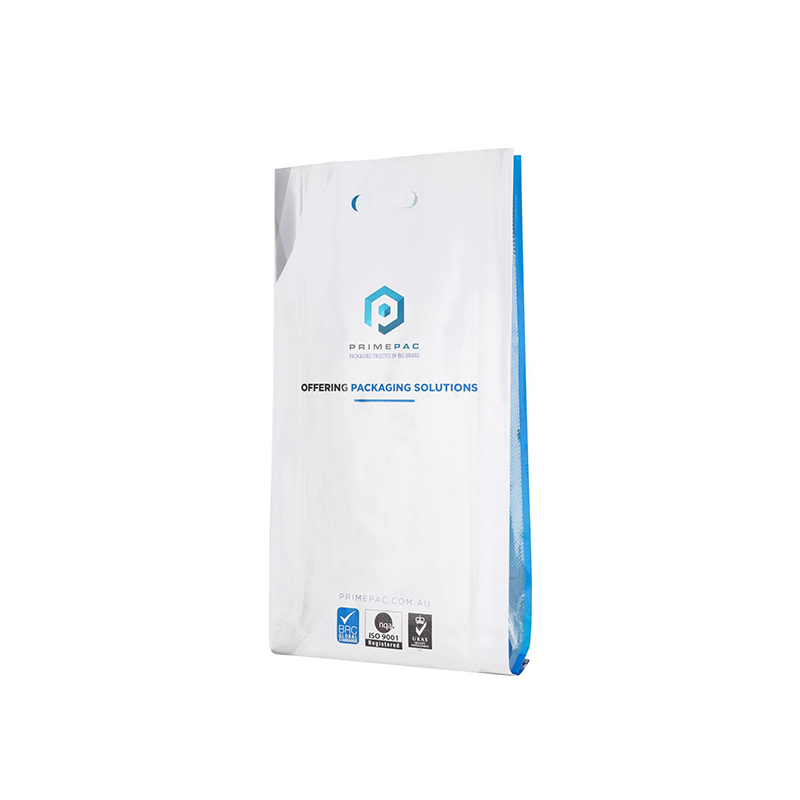
This packaging is made from mushrooms. It can be made from non-toxic materials and is an ideal method for working to have a better environment. You’re sure to enjoy the use of the mushrooms for a long time because this can make for durable packaging.

Why used eco-friendly packaging?
South Australia will become the first Australian state to ban plastic straws, cutlery, and drink stirrers under a plan announced by the state government.
The SA environment minister, David Speirs, said on Saturday the Liberal government would draft legislation to ban the single-use items this year before introducing the bill to parliament in 2020.
Plastic straws, cutlery, and drink stirrers are first on the agenda, and the government is also looking to ban takeaway polystyrene containers and cups in ECO-friendly packaging for cosmetics.
It is also considering outlawing items such as coffee cups and reusable plastic bags. South Australia was the first state to ban lightweight plastic bags in 2009.
Eco-friendly packaging for cosmetics - How to do?
Here are some tips on how to achieve Eco-friendly packaging for cosmetics:
The material is green
Packaging designers should try to use green packaging materials and design long-life packaging materials, which can greatly reduce environmental pollution after the packaging is discarded.
Packaging reduction.
In some developed countries, many supermarkets encourage consumers to use nylon shopping bags that can be used multiple times, but less disposable plastic bags. The materials used in packaging design are minimized, unnecessary packaging is eliminated as much as possible, and simple packaging is advocated To save resources.
Natural packaging materials
The materials used are as simple as possible, do not mix different materials in order to facilitate recycling.
Packaging design is detachable
Packaging that requires a composite material structure should be designed as a detachable structure, which is conducive to recycling after disassembly.
Pay attention to the reuse of packaging materials
The use of recyclable, reusable and recyclable packaging improves the life cycle of the packaging, thereby reducing packaging waste.
The harmlessness of packaging materials
The European Packaging and Packaging Waste Directive stipulates heavy metal content levels (lead, mercury, chromium, etc.), for example, lead content is less than 100PPM. my country should also prohibit or reduce the use of certain packaging materials containing harmful components such as lead, mercury, tin, etc. in the form of legislation, and specify the allowable content of heavy metals.
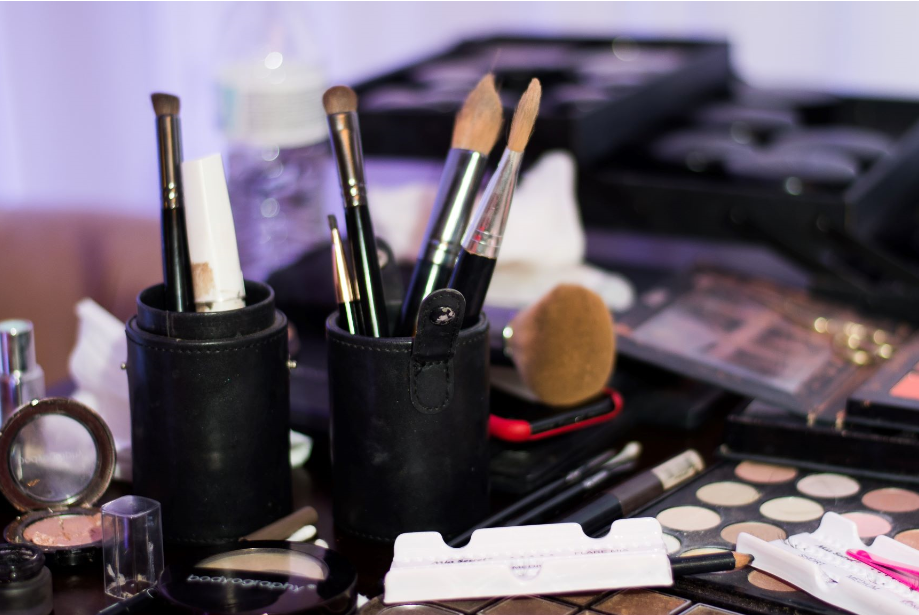
New trends of ECO-friendly packaging for cosmetics in 2020
Environmental issues affect people's lifestyles all the time, many packaging companies also actively respond to environmental protection. Make-up products-as indispensable products in daily life, ECO-friendly packaging for cosmetics, the industry has also begun to use sustainable raw materials in packaging design and application as well as various cosmetic packaging and product accessories.
This not only improves the product's design sense but also enhances a brand image for the product.
At the 2019 MakeUp in Paris, many exhibitors are showing their innovative products with novel green and environmental concepts in ECO-friendly packaging for cosmetics.
Let’s see what’s the new trends are!
Degradable plastic – Ecoform
At this exhibition, the most striking is a material called – Eco form, a recently launched material that is 100% biodegradable and is described as an ideal replacement for thermoformed plastic platforms or foam inserts (also synthetic) goods in ECO-friendly packaging for cosmetics.
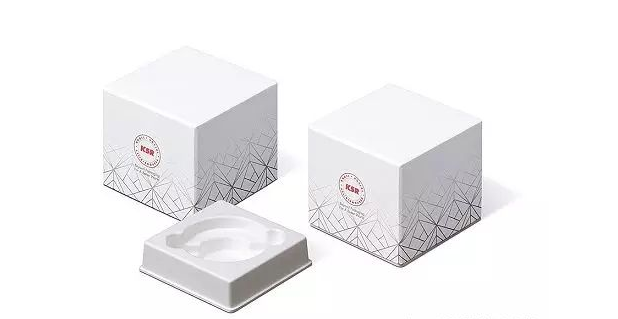
Usually, a lot of plastics are used in the packaging of cosmetics, and cardboard is not always suitable for cosmetics. It has no resistance and no elasticity, so this newly developed ecological plastic can replace traditional plastics well. It is completely made of green plants, made of bamboo, sugar cane, and wood, all of which can be recycled in ECO-friendly packaging for cosmetics.
Advanced eco-friendly brush
An innovative environmentally friendly brush called One Cut Brush has attracted much attention at the exhibition. In order to better match the new environmental trends, the exhibitors proposed 100% vegan products-synthetic hair and 100% wooden handles to customers, which is unique in the makeup brush market.
The customizable brushes are made of FSC certified light birch wood, and save the usual aluminum ferrule, creating a stylish, organic look.
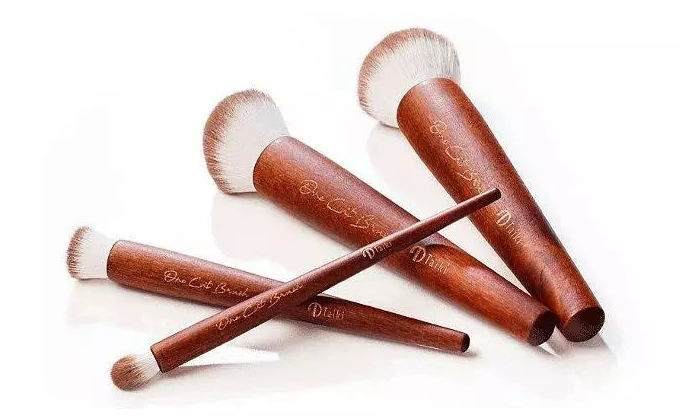
The hair material used is Ecolon (a 100% animal-free, innovative synthetic fiber) that creates a soft, natural feel. The brush is resistant to water and solvents after treatment, both of which are important characteristics of the brush.
Reusable multi-purpose toolbox
As part of its “reuse” series, Texen Beauty Partners, a multi-purpose toolbox exhibited at Makeup in Paris, showcased the integrated beauty tool concept. One of the most representative is an 8ml press pen used for perfumes, make-up products or skincare products. Its inner box and lid are made of easy-to-recycle PP or even rPP.
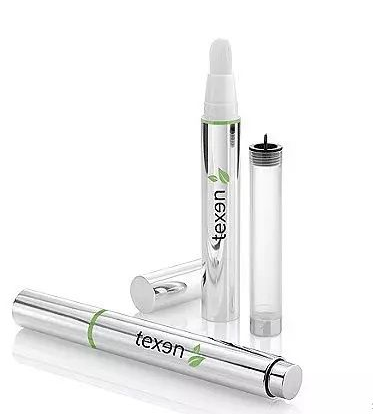
Advantage of using Eco-friendly packaging
# Reduces your carbon footprint
Carbon footprint is the number of greenhouse gases that are released into the environment as a result of human activities.
The product lifecycle of packaging products undergoes various phases, from the extraction of raw materials to production, transportation, usage, and end of the life cycle. Each phase releases a certain amount of carbon into the environment in ECO-friendly packaging for cosmetics.
Eco-friendly packagings employ different methods in each of this process and hence reduce the overall carbon emissions, reducing our carbon footprint. Also, eco-friendly packagings release fewer carbon emissions during production and they are produced using highly recyclable materials which reduce our consumption of heavy-energy resources.
# Biodegradable
Green packaging not only reduces your carbon footprint and environmental impact but is also beneficial after it has served its purpose as the ECO-friendly packaging for cosmetics materials are biodegradable.
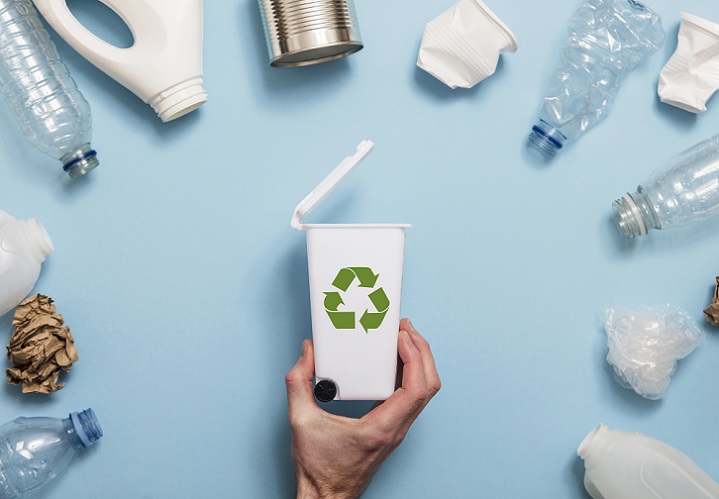
# Ease to Disposal
Packaging materials make up the majority of the trash that ends up in landfills. With e-commerce quickly becoming the most popular shopping method, consumers have more packages coming to their homes than they know what to do with. When you use eco-friendly containers for shipping, you make it easier for your consumers to get rid of all those ECO-friendly packagings for cosmetics. Compostable and recyclable containers are much easier to dispose of than ECO-friendly packaging for cosmetics that are not, and even when they do end up in landfills, they’ll break down much faster than their non-compostable, non-biodegradable counterparts in ECO-friendly packaging for cosmetics.
#Lower Shipping Costs
In addition to using recycled and biodegradable materials, ECO-friendly packaging for cosmetics supplies is designed with minimalism in mind. While they still provide effective protection for the items contained within, they are designed to be less bulky and require less overall material. This makes them weigh less and take up less space. ECO-friendly packaging for cosmetics that weigh less is, of course, more affordable to ship. With less packaging, it’s also possible to fit more packages on each pallet and in each shipping container. This can result in requiring fewer pallets or containers to ship the same number of products, which also leads to decreased shipping costs in ECO-friendly packaging for cosmetics.
# Become a part of the brand message.
These days people are getting more environmentally conscious in buying ECO-friendly packaging for cosmetics, they are constantly seeking out ways to make a positive impact on the environment without making any major changes in their existing lifestyle. By using eco-friendly packaging you are giving your consumer a chance to make a positive impact on the environment.
#No harmful plastic
Traditional packaging methods and materials contribute to global warming and other environmental issues. Using eco-friendly packaging allows you to reduce the amount of plastic that you use. Using non–sustainable petrochemical resources which are a part of all traditional plastics requires a lot of energy. Petrochemical products usually tend to litter public places and have been linked with health problems when used with food.
One of the biggest trends in life today
Consumer sentiment is raising awareness of waste and the environment. As a result, many manufacturers have brought sustainable packaging and made their products valued with regard to the environment. With our environmentally friendly food packaging series, we provide customers with financial, social, and brand equity products.
PCR packaging
PCR or post-consumer resins are the sustainable solutions of today’s environmentally friendly consumer product packaging choices. Still provide your customers with sustainable product types.
When using environmentally friendly food packaging, PCR provides many benefits.
Avoid further use of petrochemical resin
To prevent us from exhausting our limited fuel resources and make further efforts
Reuse plastic
Reduce landfill dumping
Can be recycled again for further manufacturing purposes
Like other PET plastics, the dynamics of production needs are happy
World history circular economy
Has the same sturdiness as PET plastic
Provide an appearance similar to PET plastic
Maintain a very low gas transmission rate
Resistant to cracking
Help branding your products and prove to customers that you care about the impact of plastics on the environment
Our products provide our customers with a full range of usability, size, shape, color, and suitable options.
We also provide solutions that can be customized according to your specific brand and needs.
Our existing basic manufacturing capabilities allow us to have a large population and allow us to adapt to any of your needs.
Bamboo packaging
Another sustainable development trend of bamboo is bamboo.
Bamboo is a plant that has been used in the world for several years, and now it has packaged the entire industry, construction, and textiles. It is fast-growing and sustainable.
The source of environmentally friendly food packaging, the impact on environmentally friendly food packaging, and the promotion of cleaner products. In food, bamboo represents a characteristic industry, as well as a sense of luxury.
The benefits of bamboo are:
Strength and customary tradition.
Reusable and recyclable
growing up very fast
Local purchase
Biodegradable and compostable
Paper packaging
The perfect substitute for plastic, it can be used in your balm, cream, or lotion series. Our paper cans and decorative tubes are the best choice for the perfect shape and oil-proof invisibility.
The development of eco-friendly cosmetic packaging
But eco-friendly cosmetics packaging design isn’t usually a criterion for clean beauty or sustainable skincare products.
Why? Marketers commonly push the narrative that it’s what’s on the ‘inside’ that matters (which may be true for beauty, but the outsides count when it comes to packaging!).
When consumers search for ‘best clean beauty brands’ or ‘eco-friendly beauty products, and they will find plenty of information about what a product is ‘free of’.
What is much harder to find is information on whether it’s been packaged sustainably.
This is a major problem, as there are 2.5 billion plastic bottles hitting the landfill every year. The beauty industry is a major contributor, as most of its bottles and containers are designed to be single-use.
Multi-layered packaging to make products look more ‘premium’ also creates excess waste.
This is an issue that consumers also contribute to. A study of UK consumers discovered that while 90% are recycling kitchen waste, this plummets to 50% for bathroom waste.
So, it’s safe to say that the cosmetics industry is lagging behind on eco-friendly packaging innovations.
Why does sustainable cosmetics packaging matter so much?
With much greater awareness about plastic pollution, sustainable packaging is actually becoming a serious selling point for consumers.
Dotcom Distribution’s latest study found that 62% of consumers would rather buy from brands with eco-friendly packaging. In fact, McKinsey has rated sustainable packaging as the biggest ‘green premium’ that consumers will pay extra for!
But when you market yourself as a ‘green’ beauty brand, having a sustainable cosmetics packaging design carries another level of importance.
Using eco-friendly containers for beauty products has more than just positive environmental effects. It’s about preserving (and enhancing!) your brand image.
Sustainable brands in any industry face greater scrutiny over their business practices, and with good reason.
Consumers are very alert to ‘greenwashing’ practices and are on the lookout for signs of authenticity.
A sustainable packaging initiative shows consumers that a brand actually practices what they preach.
For example, Ethique Beauty is a brand that sells eco-friendly personal care products.
Their flagship product is ‘bars’ of hair products and deodorants. Selling in bar form means they avoid plastic bottles and aren’t contributing to plastic pollution.
For shipping, they package the bars plastic-free in 100% compostable cardboard sleeves.
Conclusion:
Eco-friendly packaging for cosmetics , you must first understand what is Eco-friendly packaging, and what are the widely used materials in those sustainable packaging. The use of sustainable raw materials combined with a fashionable design is the new trend of Eco-friendly packaging for cosmetics. Follow us to learn more about packaging trends and developments! If you also find this article interesting, please share it with more people in need!
About PeimePac
At PrimePac, we bring together design experts and brand innovators to create fresh ideas, customized packages, and fully efficient processes.
We design creative packaging solutions that cater to a diverse global audience with the in-house knowledge and network of experienced professionals to meet the demands of every type of client.
From our dedicated sales team and warehouse staff in Australia to the experts at our production facilities in China, all of our employees are guided by four core values at the heart of our business in ECO-friendly packaging for cosmetics: integrity, innovation, passion, and engagement.
Network
With our team in China and Australia working as one, we reduce inefficiency so that you deal with one streamlined team from manufacturing right to delivery.
Service support team located in Guangzhou, the manufacturing hub of China, providing rapid response, and local industry knowledge in ECO-friendly packaging for cosmetics. Warehouse and 3PL network located in Sydney, to provide rapid distribution, and delivery to your customers.
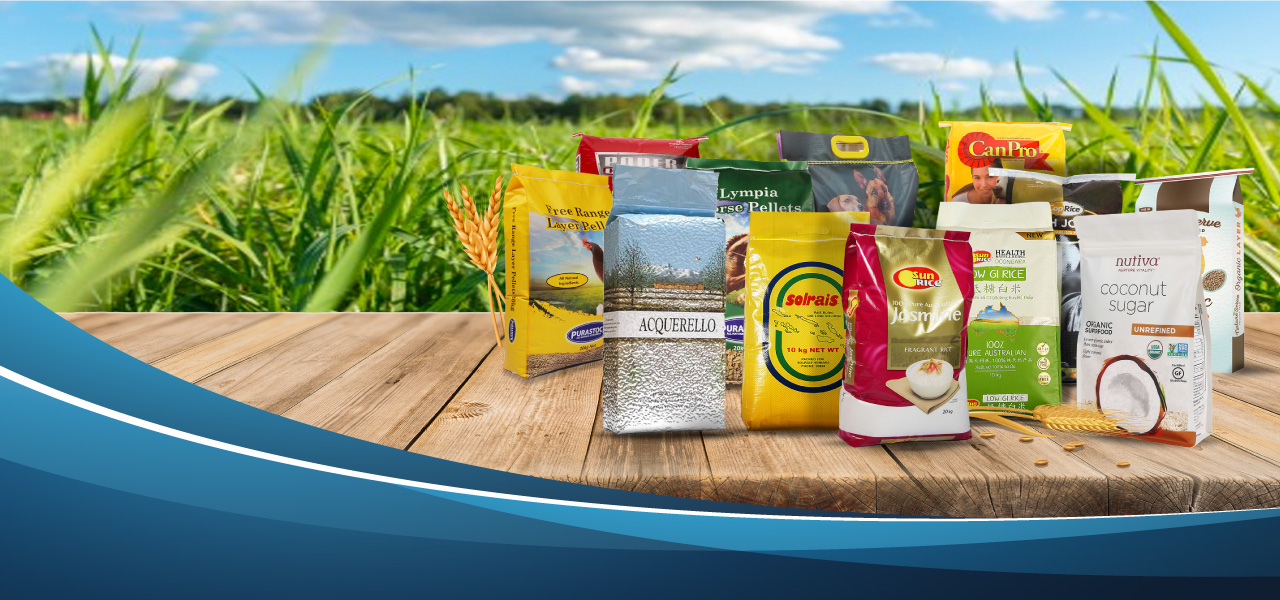
Why Choose Flat Bottom Bag - A kind of popular packaging
This form of flat bottom bag packaging is an improved version of the standard vertical bag. Flat bottom bags are popular products in the packaging industry, especially for food products. It has many optional added extras such as matte print finishing, grip seal closure, or tear notches.
In this article, we first introduce what are the characteristics of flat bottom bags, then introduce the advantages of flat bottom bags and why we love custom flat bottom bags and finally explain the market prospects of flat bottom bags.
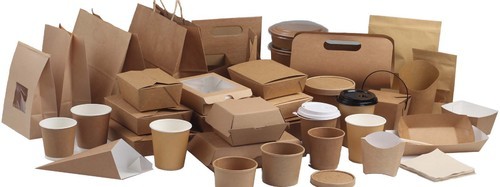
Ever What is Flat bottom bag?
Just as its name implies is eight at the bottom of the sealing side, four sealing sides of the side of each side two sides, this bag is nearly two years the rise of a new bag. Flat bottom bag because of its good stereo feeling, show class looks, high-end atmosphere, popular with consumers.
Flat bottom bags have a flat bottom that makes them stand upright on shelves or wherever one places them. This is one of the most resourceful qualities flat-bottom stand-up bags possess.
These bags have a gusset (a triangular insert/bracket for added strength or expansion) on the right and left side, as well as at the bottom too! These gussets on flat bottom bags make them look attractive as well as supports the design and structure of the bag to make it stand upright and to better fit into packaging requirements of versatile industries.
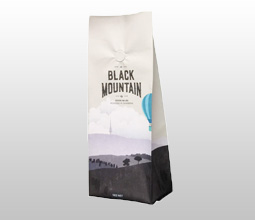
They consist of three layers, which can firmly keep the product inside, and can be recycled and decomposed. And it has a distinctive design that gives it an attractive shape to customers, this exclusive form gives large storage space and gives enough space to put your own design and use the space in the front and back.
What are the characteristics of flat bottom bag?
Vivid color printing, independent, with a resealable zipper and ventilation holes. With a flat bottom and side gusset, the Flat bottom bags can stand up well on the shell, so as to attract the clients’ eyes more easily.
With a flat bottom and side gusset, the inside space of the bag is enlarged a lot, which achieves a much larger volume for holding goods. Customized material, thickness, size, shape, and design are welcome.
Strong sealing, easy-open fresh fruit bag. There are 2 sets of cylinders required for the Flat bottom bag, one set for the front and bottom. And Back Panel, the other set for the right and left side gusset. The two parts will be printed separately and then combined together by heat sealing.
Food grade packaging supplies, eco-friendly ink, non-toluene workshop condition. Realistic & lively print effect help upgrade the image and competition.
What is the use of flat bottom bags?
Flat bottom bags can be used in the packaging of many industries such as food packaging, animal food packaging, organic product packaging, and many other uses.
You can add an extra fitment in a flat bottom bag:
Zipper (Make it easier to open the bag and maintain it)
Suspension holes (to hang the bags instead of placing them on the shelves)
Degassing Valve (to keep the product from exposure to air and the expulsion of industrial gases)
Laser scored tear notch for easy tear and opening.
Flat bottom bags are the innovative alternative to a folding carton or corrugated box. Unlike a bulky box with an ineffective inner liner, flexible box bags have a small footprint and keep products fresh longer. No more squeezing big boxes into the cupboard and rolling up liner bags once the product has been opened – flexible box bags make it convenient for you and your customer to store, transport, access, and consume your quality product.
Our customers use Flat bottom bags to package anything that would traditionally go in a box with an inner bag, such as cereal, granola, crackers, and snacks. The flat bottom mimics a box, allowing the pouch to stand effectively, while side gussets provide more space for labels and branding than traditional stand up bags.
In addition, flexible box bags are made with heavy duty barrier film that protects the bags’ contents from moisture, odor, puncture, and other hazards and contaminants. That means your product stays fresher, longer, even once the packaging has been opened (unlike those worthless liners!)
Best of all, our Flat bottom bags use up to 15% less film than typical stand up bags, but hold more volume. Each bag has five printable surfaces perfect for brand building, can be printed in up to 12 colors, and is available in clear, metalized, and foil structures. Functional zipper tops complete our flexible box bags, guaranteeing that your customers can easily reach their fresh, favorite products again and again.
What is the advantage of flat bottom bags?
1、Flat bottom bag is three flat bags that are best suited for thin-film material of flat bag type. The advantages of the packaging as thin-film materials and flat stand shelves visual representation, the volume, higher than that of the traditional vertical bag is the new choice of traditional film type vertical bag upgrade. The tensioning chain can be used repeatedly, which is convenient to use, to avoid the failure of the tensioning chain on the organ bag, and a one-way valve can still be added.
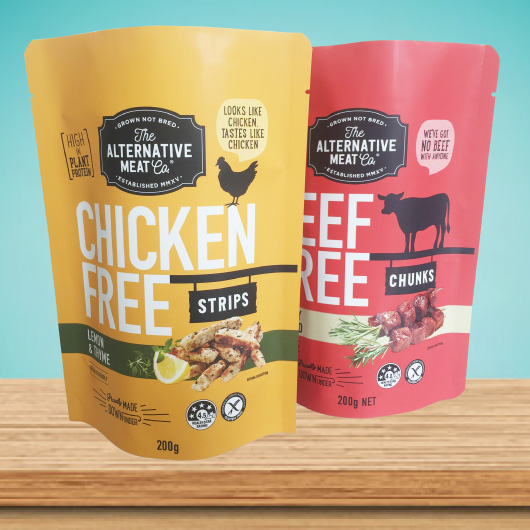
Flat bottom style bags are the newest kid on the block. This pouch style is getting more famous for high-end food product packaging companies. Flat bottom bags are most expensive than any other type of flexible packaging bags. But due to good looking and convenience, the bags are getting famous.
3、Flat bottom bags have many names like box pouch, box bottom bags, block bottom pouch, square bottom bags, box pouch with valve, quad sealed flat bottom, block bottomed bags, three side gusset bags, brick pouch, etc.
4、Flat bottom pouch looks like a box or brick style. These bags have gussets on the left and right sides and gussets on the bottom. We can fix zippers in bags as optional. We can also give pocket zip zippers fitted in flat bottom bags.
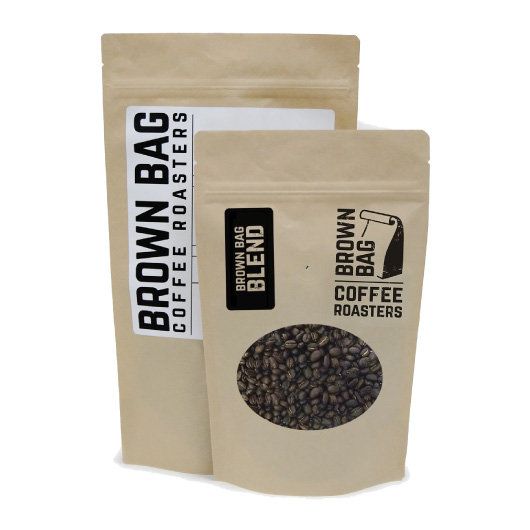
5、Flat bottom bags can save 15% of packaging material due to the unique design. So these bags are called environment-friendly packaging bags. We can also save shelf space in the supermarket as the bags stands tall and the width of the bags is less compared with stand up bags. So this style bags can save money for the food manufacturer by paying less to supermarket shelf space.
6、We can fix Degassing valves for coffee packaging. The bags are used to pack Pet food, organic products, chocolates, powders, spices, muesli, biscuits, tea etc. We can personalize flat bottom bags by printing in advanced rotogravure machines up to 9 colors. Customized printing is possible in brown kraft paper, white poster paper, PET, foil, BOPP.
Can be customized to suit your flat bottom bags
Customization: We have two options for all our clients.
1) In Stock/Ready Bags
2) On Custom Printed Bags
If you wish to customize i.e. make changes in color, size, print, or features of the stand-up bags you need or you have selected, we can do it for you fluidly.
On the other hand, we have banked an amazing collection of stand-up bags ready to be shipped!
Rotogravure Printing: Attraction is directly related to something beautiful, something attractive. To attract your customers, we use Rotogravure and Flexographic printing.
Rotogravure printing has changed the way stand-up bags look. It is attractive, quick, and budget-friendly too!
Auxiliary Tools/Accessories: We did not wish to make our clients wander in search of auxiliary accessories required to fill the stuffs in bags/bags.
So, we decided to transform ourselves into a One Stop Shop Solution for All your Packaging Needs, by providing accessories such as heat sealers, filling machines, and more under one roof, here at Smart Bags.
Our flat bottom bags give your product maximum shelf stability, and superb protection, all wrapped in an elegant and distinctive look. The gusseted sides and quad seals offer a stronger structure and more filling volume than other bags, making them a great choice for coffee, candy, pet food and treats, and other dry ingredient food products. We can custom-print over all five panels, providing enhanced artwork and design possibilities. Flat-bottom bags, also called Flat bottom bags, are a good “green” choice, too, requiring less energy to produce and less material than in traditional stand-up bags.
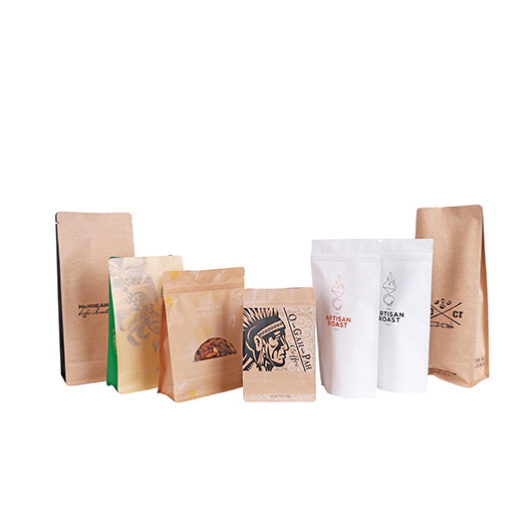
Flat Bottom Bags – Market Outlook
The flat bottom bags have high demand in the market owing to the fact that the bag offers shelf stability due to its sturdy level bottom. The base is flat and secure is ideal for packaging solutions for many consumer products such as rice, tea, coffee, cereal, and many more. Thus, the outlook for the growth of the global flat bottom bags market is expected to remain mostly positive during the forecast period.
In addition, flat bottom bags are produced with the help of the higher quality films to enhance the durability and flexibility of the pouches. Flat bottom bags can also be customized to suit individual product and brand so that it has high resistance to the pressure that decreases the chances of package rupture. One of the driving factors of flat bottom bags market is that these bags can be produced with lamination and metalized lining that helps in keeping excess moisture out, which keeps products fresher for a longer time.
Conclusion:
In the world of packaging, there are many ways to stand out. But the Flat bottom bags makes a statement. It combines the benefits of a traditional side gusseted bag and stand-up pouch, and rolls it into a package that sits narrow on the shelf, doesn’t tip over, and squares up like a box. Flat bottom bags have unique advantages and can be customized according to demand, and have a strong market prospect.
About PeimePac
At PrimePac, we bring together design experts and brand innovators to create fresh ideas, customized packages, and fully efficient processes.
We design creative packaging solutions that cater to a diverse global audience with the in-house knowledge and network of experienced professionals to meet the demands of every type of client.
From our dedicated sales team and warehouse staff in Australia to the experts at our production facilities in China, all of our employees are guided by four core values at the heart of our business: integrity, innovation, passion, and engagement.
Network
With our team in China and Australia working as one, we reduce inefficiency so that you deal with one streamlined team from manufacturing right to delivery.
Service support team located in Guangzhou, the manufacturing hub of China, providing rapid response, and local industry knowledge. Warehouse and 3PL network located in Sydney, to provide rapid distribution, and delivery to your customers.

About fruit and vegetable packaging you may wonder
Fruit and vegetable packaging is a farm practice that involves taking fresh crops from the field to the customer. Since all fruits and vegetables are perishable crops, choosing the right packaging for fruits and vegetables is crucial for farmers to survive in the market. The main function of packaging is to maintain fruits and vegetables in order to maintain their quality and extend the storage life.
More importantly, fruit and vegetable packaging represents an integral component in marketing management. As a matter of fact, a package is a way of communication with the customers, and therefore, it’s directly related to the sales strategy in fruit and vegetable packaging.
In this article, we first introduce the types of fruit and vegetable packaging and then explain how we should choose fruit and vegetable packaging. Finally, the trend of fruit and vegetable packaging is analyzed in detail.

Types of Fruit and Vegetable Packaging
Regarding its function, fruit and vegetable package can be observed in two ways:
Primary package:
The layer of the package which is in direct contact with the product; usually offered to the customer
Secondary package:
Holds the primary package during transport and storage, and therefore facilitates its handling
Regardless of its function, there are various types of fruit and vegetable packages. These include:
# Containers:
a cost-effective method for packing crops that are not so susceptible to physical damage, such as melons, pumpkins, yams, potatoes, and cassava. After the harvest, crops are stacked into a container which is fitted to a transport vehicle and delivered to the customers without using any other package.
# Woven baskets:
Commonly used by small-holder farmers and made of locally available materials. These baskets provide very good ventilation for crops. However, their rough materials can damage the crops during transport and handling.
# Bags:
A relatively cheap packaging type, suitable for crops that are not so susceptible to physical damage, such as potatoes, onions, pumpkins, or melons.
Modified atmosphere package; a special package created by removing the air from the package and replacing it with a single gas or a mixture of gases. The carefully managed gas mixture within the package maintains an optimal crop respiration rate and extends crop storage life and quality.
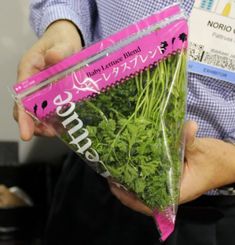
# Vacuum package:
A type of package in which oxygen was removed completely and the product is sealed in air-tight conditions
A Few Lessons About Choosing the Right Package
Farming is a very special activity that is highly dependent upon natural processes. In regards to that, every farm management should be unique. Each farmer’s decision, as well as each farm practice, can result in unexpected results. The same is with crop packing management. In order to manage crop packing successfully, while deciding on the right crop package, farmers should keep in mind a few of the following tips:
-
Crop requirements:
each crop has its own package requirements, for instance, berries are much more susceptible to damage than apples, and therefore, they require carefully managed packing.
-
Crop transport and storage management:
there is a difference between packing the crops that will be directly delivered to the market, and crops that will be stored for a certain period.
-
The storage:
crop package should be in accordance with the type of storage (CA storage, cooling storage, simple storage facilities, pre-cooling), as well as with the duration of the storage (short-term or long-term storage).
-
Message to customers:
the package is a way of communicating with the customers. Therefore, before packing their fruits and vegetables, farmers should consider how they want to present their products to customers.
-
Value for money:
when deciding on crop package, a farmer should be aware of his own financial possibilities. Besides that, for certain high-value crops (e.g. blueberries), farmers can afford higher costs of packaging. On the other hand, for crops such as potatoes, farmers prefer using more affordable packaging solutions.
In order to effectively bring advertising messages and important product information to the packaging, we should collaborate with an experienced advertising agency, which in turn closely cooperates with the packaging manufacturer who ultimately manages the printing of the fruit and vegetable packaging.
He also competently advises which printing method best suits the planned product and its specific requirements: flexographic, offset, or digital printing. In all the printing methods mentioned above, it is possible to resort to food-compatible inks in order to exclude the pollution of the product by the printing inks.
Six trends in fruit and vegetable packaging
Consumers are more concerned than ever about what they eat and where their food comes from. The growing demands in terms of health, sustainability, and organic production determine not only what customers eat but also the purchasing behavior of modern consumers.
At the same time, the variety of food products is increasing enormously – there are also constantly changing breeds and new varieties in the fruit and vegetable sector. Along with these changes, the packaging requirements are changing as well.
Trend 1: Sustainability along the supply chain
Eco is in! The desire for sustainable food ranges from production, up the value chain, into the kitchen. Packaging plays an important role throughout the supply chain – in terms of freshness and protection of goods, quality, and labelling. Corrugated cardboard or full cardboard packaging is not only nearly 100 per cent recyclable, but it is also made from renewable raw materials, which has a positive impact on the CO2 balance.
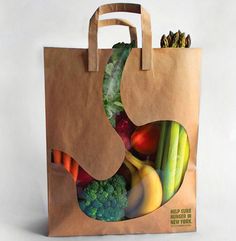
In addition, such packaging is much more natural than plastic and is rightly perceived by consumers as sustainable and environmentally friendly. For this reason, supermarkets and discounters are increasingly using cardboard instead of plastic in the packaging of fruit and vegetables, as in the case of cherry tomatoes, for example, which are increasingly available today packed in printed corrugated board trays.
Trend 2: Promoting the regional character
Many growers already know that in the case of fruit and vegetables, the regional origin of the products is even more important to consumers than biological or ecological considerations or fair guarantees. This was again confirmed by the study “Fruits and Vegetables 2016” by market research institute Mafowerk. The downside: Regional products are not available year-round in Germany.
As a result, more and more German producers are growing their fruits and vegetables in greenhouses. For consumers, this means for example that in November there are still strawberries from Franconia – instead of Peru. On the one hand, for the growers, this means a longer season and thus a competitive advantage over fruit and vegetable suppliers from abroad. On the other hand, smaller farms also have to learn to play their regional trump card: their own name, logo, and, of course, the region should be printed directly on the packaging. Packaging of cardboard or corrugated board is particularly suitable here because of the good printability of the material. And this is how regional producers stand out from their competitors in Italy, Spain, and so on.
Trend 3: Optimum advertising effect through a variety of printing processes
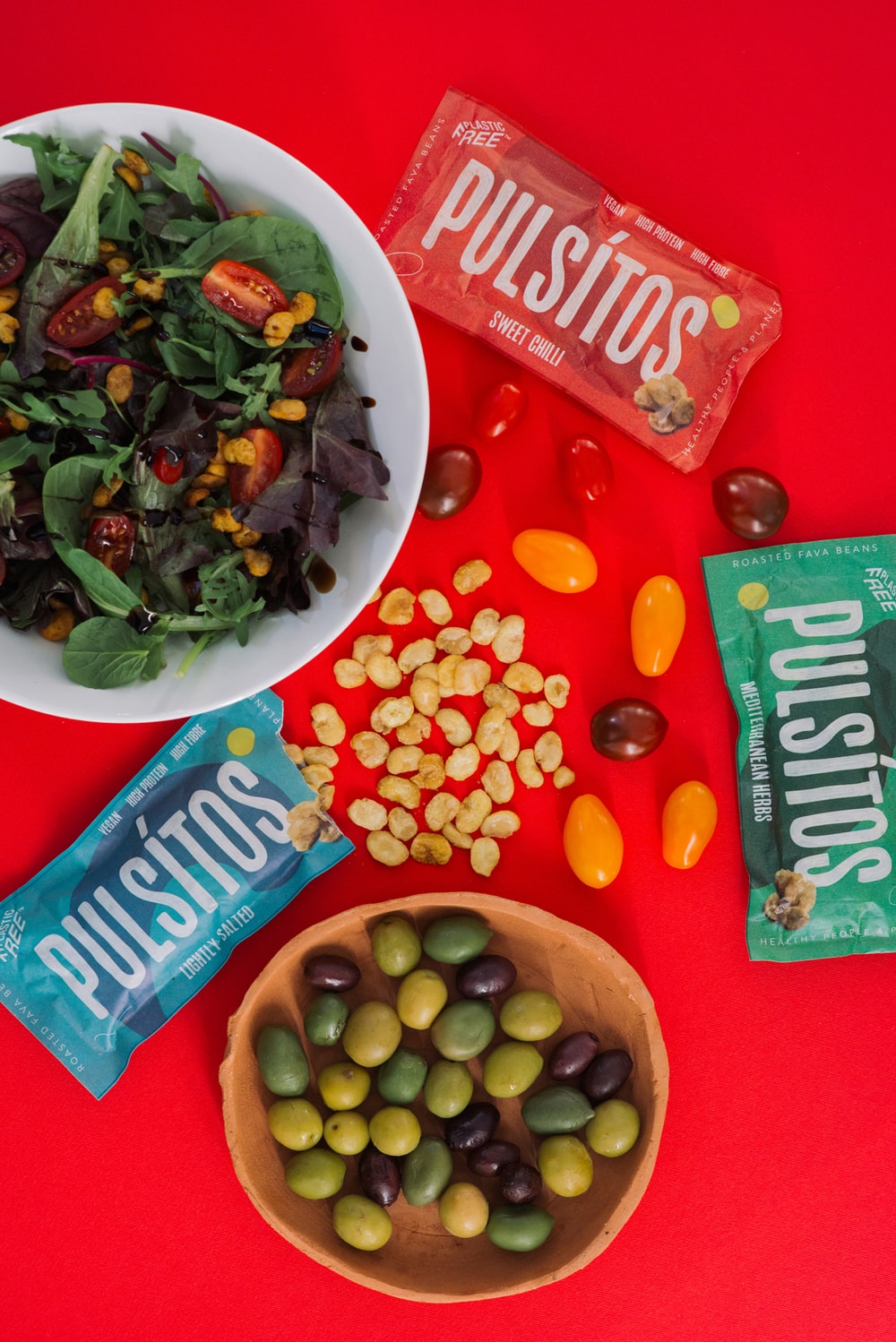
Trend 4: Flexibility and proximity in terms of logistics
High-yield harvests, lean harvests, a short-term harvest time, or the sudden increase in demand for regional produce due to trade promotions – in the fruit and vegetable sector, flexibility is extremely important. As a result, growers should source their packaging from a regional supplier who offers flexible delivery times, variable purchase quantities, and who offers to store the packaging until harvest time.
Trend 5: New packaging sizes and shapes
Changes in the shape and size of fruits and vegetables also require adaptation of the packaging. For example, the so-called small farmer’s cucumbers have already displaced the well-known larger cucumbers, and the trend continues towards still smaller specimens: the even smaller snack cucumbers. This also means that the size of the primary packaging, for example, a vegetable tray for the snack variant of the classic cucumber, as well as secondary packaging and packaging units must be adapted to this trend in fruit and vegetable packaging.
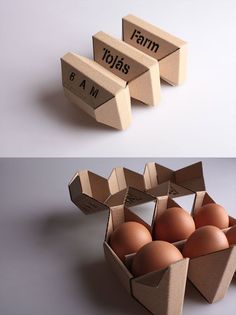
Trend 6: Changed material requirements
Foods that are shrink-wrapped in plastic could be rated worse in their actual quality than goods in an open cardboard box. However, paperboard fruit and vegetable packaging are particularly complex due to the moisture of the packaged products. For example, cucumbers are packed in cellophane before entering the vegetable rack, which is conducive to shelf life.
Alternatively, growers may provide fruit and vegetable trays with special paper grades or coatings that prevent moisture from entering the carton. An important role in material selection also plays a role in how fruit and vegetables are stored across the supply chain, for example in cold stores, during the transport route, and for which period of time.
Fresh fruit and vegetable packaging
The packaging of fresh fruits and vegetables is a fast and streamlined process. We understand your needs for flexibility and provide tailor-made solutions for the efficient processing of your fresh produce.
From flat packaging to ready-to-use top boxes and trays.
Our packaging solutions are used in automatic and manual production processes.
Manual processing, external setup services, or automation may be the best solution for you, depending on your operational capabilities.
With a huge network of setup stations and machine suppliers, we can advise you on how to effectively set up the packaging process with a transparent cost structure.
Intelligence in the greenhouse also means sustainable selection and smart inventory management.
We will deliver it at the exact time you need the packaging and keep it in stock.
Packaging provides protection, tamper resistance, and special physical, chemical, or biological needs.
It may carry nutrition labels and other information about foods available to consumers in local and international markets.
The packaging of frozen foods such as fruits and vegetables is divided into three types, namely primary, secondary and tertiary.
The primary packaging is in direct contact with the food, and the food can be kept in the packaging until it is used.
Secondary packaging is a form of multiple packaging used to process packages together.
The tertiary packaging is basically an extra layer on the secondary packaging used for bulk transportation of products.
The role of packaging in the fruit and vegetable industry
The packaging of fresh fruits and vegetables is one of the important steps in the long and complicated journey of fruits and vegetables from farmers to consumers.
Bags, crates, baskets, baskets, cartons, bulk boxes, and pallet containers are convenient containers for handling, transporting, and selling fresh produce.
Although the industry generally believes that container standardization is a way to reduce costs, the trend in recent years is to adopt a wider range of packaging sizes to meet the diverse needs of wholesalers, consumers, foodservice buyers, and processing operators.
Packaging and packaging materials contribute significant costs to the agricultural product industry;
therefore, it is important that packagers, shippers, buyers, and consumers have a clear understanding of the various packaging options available.
The main function of packaging
A properly designed product container should contain, protect and identify the product.
The packaging should be very attractive, and everything should be clearly mentioned on the packaging.
The important keys in some of these packages are given below.
1. Variety
2. Recyclability
3. Sales appeals.
4. Shelf life.
The following are the more important general requirements and functions of food packaging materials/containers:
1. It must be non-toxic and compatible with specific foods.
2. Hygiene protection, moisture-proof, grease-proof, gas-proof, and odor-proof.
3. Shading, impact-resistant, transparent, and easy to open.
4. Re-seal function, easy to handle size, shape, and weight restrictions.
5. Appearance, printability and low cost, special functions, etc.
Frozen packaging of fruits and vegetables——
1. The packaging material should be moisture-proof to prevent evaporation, so as to maintain the highest quality of frozen food.
2. Non-rigid containers include bags and sheets made of moisture-proof, thick aluminum foil, polyethylene, or laminated paper.
3. Bags are the most commonly used packaging materials for frozen fruits and vegetables because of their flexibility in processing and handling. They can be used with or without external cardboard boxes to prevent tearing.
With research and analysis, the future of fruit and vegetable packaging and the food industry has a long-term and broad market and export in India.
The fruit and vegetable industry, like the packaging industry in this industry, has good entrepreneurial opportunities.
In addition, the Indian government is also promoting and providing large amounts of funds and opportunities to develop fruit and vegetable processing industries so that these industries can achieve large-scale growth.
How to choose the right fruit and vegetable packaging?
Fruit and vegetable packaging is a farm practice that involves transporting fresh crops from the field to the customer. Given that all fruits and vegetables are highly perishable crops, choosing the right fruit and vegetable packaging is crucial for farmers’ survival in the market.
The main function of packaging is to preserve fruits and vegetables to maintain their quality and extend their storage life.
More importantly, fruit and vegetable packaging is an indispensable part of marketing management.
In fact, parcels are a way of communicating with customers, so they are directly related to sales strategies.
Types of fruit and vegetable packaging
Regarding its function, fruit and vegetable packaging can be observed from two aspects:
Primary packaging: the packaging layer in direct contact with the product; usually provided to customers.
Secondary packaging: the primary packaging is maintained during transportation and storage, so it is easy to handle
Regardless of its function, there are various types of fruit and vegetable packaging. These include:
Container: a cost-effective method for packaging crops that are not susceptible to physical damage, such as melons, pumpkins, yams, potatoes, and cassava. After harvest, the crops are stacked in a container, which is mounted on a transport vehicle and delivered to the customer without using any other packaging.
Cardboard: wooden or plastic boxes or crates; a widely accepted way of packaging various fruits and vegetables. These boxes come in various shapes and sizes and are suitable for different products.
Woven basket: It is usually used by small farmers and is made of locally available materials. These baskets provide very good ventilation for the crops. However, their rough materials can damage crops during transportation and handling.
Bag: a relatively inexpensive type of packaging suitable for crops that are less susceptible to physical damage, such as potatoes, onions, pumpkins, or melons.
Modified atmosphere packaging; special packaging made by removing air from the packaging and replacing it with a single gas or gas mixture.
The carefully managed gas mixture in the package can maintain the best crop respiration rate and extend the storage life and quality of the crop.
Vacuum packaging; a type of packaging that completely removes oxygen and seals the product in an airtight condition
Some lessons about choosing the right packaging
Agriculture is a very special activity, highly dependent on natural processes. In this regard, each farm management should be unique.
Every farmer’s decision, and every farm’s practices, can lead to unexpected results. The same is true for crop packaging management.
In order to successfully manage crop packaging, farmers should keep the following tips in mind when deciding on suitable crop packaging:
1. Crop requirements; each crop has its own packaging requirements. For example, berries are more susceptible to damage than apples, so they need to manage their packaging carefully.
2. Crop transportation and storage management; there is a difference between crops directly delivered to the market and crops stored for a period of time.
3. Storage; crop packaging should be classified according to storage type (CA storage, cold storage, simple storage facility, pre-cooling) and storage period (short-term or long-term storage).
4. Messages to customers; parcels are a way to communicate with customers. Therefore, before packaging fruits and vegetables, farmers should consider how to show their products to customers.
5. Good value for money; when deciding on the packaging of crops, farmers should understand their financial capabilities.
In addition, for certain high-value crops (such as blueberries), farmers can afford higher packaging costs.
On the other hand, for crops such as potatoes, farmers prefer to use more affordable packaging solutions.
Some farmers do not pay attention to crop packaging. However, choosing the right packaging for the crop can be a turning point in maintaining yield and maintaining crop quality.
Most importantly, crop packaging will determine the success of farmers in the market.
Conclusion:
Some farmers do not add importance to crop packaging. However, choosing the right package for crops can be a turning point for preserving the yield and maintaining crop quality. Above all, crop packaging will determine a farmer’s success on the market.
The current trend of fruit and vegetable packaging has reached personal benefit. We recommend that farmers use an excellent vegetable and fruit packaging company, and they will advise agricultural producers on the packaging of fruit and vegetable varieties.
About PeimePac
At PrimePac, we bring together design experts and brand innovators to create fresh ideas, customized packages, and fully efficient processes.
We design creative packaging solutions that cater to a diverse global audience with the in-house knowledge and network of experienced professionals to meet the demands of every type of client.
From our dedicated sales team and warehouse staff in Australia to the experts at our production facilities in China, all of our employees are guided by four core values at the heart of our business: integrity, innovation, passion, and engagement.
Network
With our team in China and Australia working as one, we reduce inefficiency so that you deal with one streamlined team from manufacturing right to delivery in fruit and vegetable packaging.
Service support team located in Guangzhou, the manufacturing hub of China, providing rapid response, and local industry knowledge. Warehouse and 3PL network located in Sydney, to provide rapid distribution, and delivery to your customers.

Window packaging in our daily life
Traditional packaging often hides the product inside the package, but modern designers are trying to overthrow this model and display the product in the packaging. Create a window in the packaging to display the product, so that consumers stay and notice, this is window packaging. Product packaging should increase simplicity, authenticity, and meaning. Packaging must be important as the first step in reaching consumers. Want to stand out from similar products, not only have good quality but also have outstanding packaging! This article mainly explains why window packaging is important to food and the benefits of window packaging in the Health and Beauty industry.
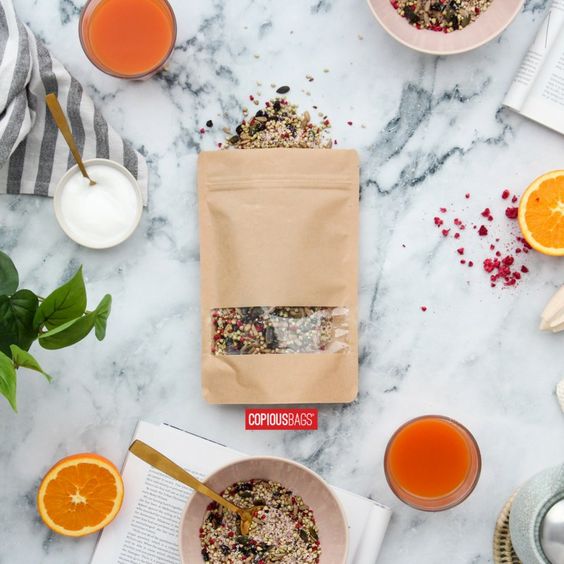
Why window packaging is important to food
All kinds of commodities have their own characteristics, and food packaging also has its distinctive characteristics. In addition to paying attention to its practicability, convenience, and safety, food packaging begins to pay more attention to its high quality, high taste and high-end sense.
Window packaging has become famous all over the world. It is considered to be the best packaging solution. Although window packaging has become popular in various fields such as clothing, cosmetics, etc., it has become the preferred choice of entrepreneurs, especially in the food industry. Window glass is widely used in food boxes. The main reason is that window boxes increase the visual appeal of the product and make it highly attractive to the customers. When customers can clearly understand the attractive contents inside, it stimulates their buying behavior. Window boxes are used to package a range of food products. Whether they are cereals, fruits, meat, chocolate, tea, or other edible foods, these custom food boxes are perfect for highlighting your food brand. Window packaging has its own elegance that complements your products.
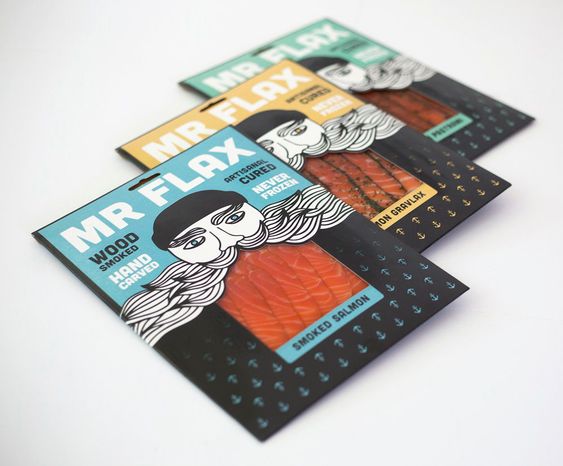
Window packaging has become famous worldwide. It is considered the best packaging solution. Although window packaging has made its way in every sector like apparel and cosmetic, it has become a preferred choice of entrepreneurs, especially in the food industry. Window panes are extensively used in food boxes.
The main reason is that window boxes increase the visual display of the product making them highly appealing for the customers. When customers can get a clear view of the tempting content inside, it stimulates their purchase behavior. Window boxes are used to package an array of food items. Whether they are cereals, fruits, meat, chocolates, tea, or other edibles, these custom food boxes are just perfect to highlight your food brand. Window packaging has its own grace which complements your products. They can be decorated and customized according to the requirement. Below are some of the main reasons why window packaging is important to food:
High-Quality Material protects the Food Items:
The quality of the material is an important concern especially in the case of food products. As most of the food items are extremely delicate in nature, they can get spoiled by little contamination. Therefore, the use of high-quality raw material is necessary to ensure maximum safety to the items inside. It should not be free from chemicals and make food last for long. Usually, the window food boxes are designed from a paperboard of Kraft paper. These are the refined forms of cardboard. They are durable enough to deliver the items safe from source to destination. Moreover, it also preserves the freshness of food items and retains their taste. Let us take the example of bakery products. They are the most delicate food items which require special care for their handling.
Confectionaries use high-quality cake boxes, cookie boxes, and other packaging boxes to protect their items from spoilage or mishandling. A little ignorance can destroy your lovely creations by smashing the frosting and beautiful decorations. No matter how perfect your taste is, but if the customers receive their products in a sullied condition, they will never return to you again. Moreover, the external safety of food items is also an issue of concern. You can design hanging window boxes to facilitate the customers in carrying the product easily.
Mesmerizing Display:
One of the biggest reasons why window packaging is preferred for a variety of food products is its mesmerizing display. When customers can have a direct view of what they are getting, it increases their satisfaction level. Window boxes are best for all such food items in which the first impression matters.
Customers never give a second look at the packaging which appears unappealing. Various physical aspects like packaging design, color schemes, typography, and shape are responsible for providing a perfect display to your products. Introducing window panes adds to the value of your packaging. It gives an inspiring and professional look to the items making them stand out on retail shelves.
Good packaging sells. It’s that simple, but not all manufacturers insist on the packaging that is unique and really helps sell. There are several types of high-visibility packaging (flip-top, blister, heat-shrink), and while it may cost a little more than regular cardboard or corrugated packaging, it adds value.
Rather than hiding the product and therefore needing to display the product’s graphics on the outside of the box, high-visibility packaging displays and promotes the product. The consumer can clearly see the product and must therefore be reassured, rather than assuming that the product has been correctly represented in the external graphics. Very often, this is not the case. This is why these products are more likely to be returned. It is difficult to resell the product after opening or damaging the packaging.
Cost Effective Packaging Solution:
Keeping the costs low is one of the biggest targets of every business. Especially in the case of smaller-scale businesses or startups, the entrepreneurs are in the search of ways to keep their investment costs low. Window boxes are one of the most effective packaging solutions. Irrespective of their specialized features, using them as custom food boxes can help you in meeting packaging requirements without disturbing your budget.
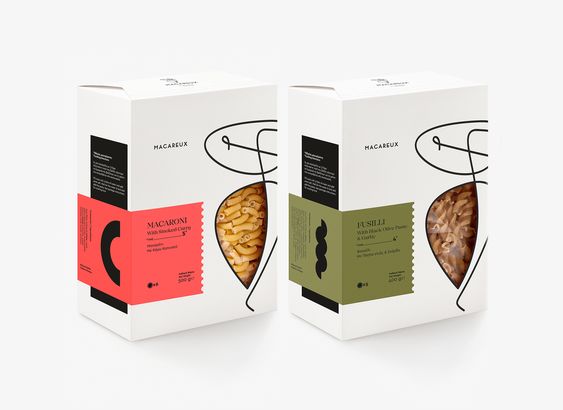
The boxes are made from cardboard which is one of the most cost-effective materials. It is readily available as it is made from natural substances. Its ability to recycle adds to its advantage. Window boxes DIY are easy to make by using a sheet of cardboard and transparent plastic film. You can make them for your food packaging at a smaller scale or for individual use.
Increase Sales by Endorsing your Food Brand:
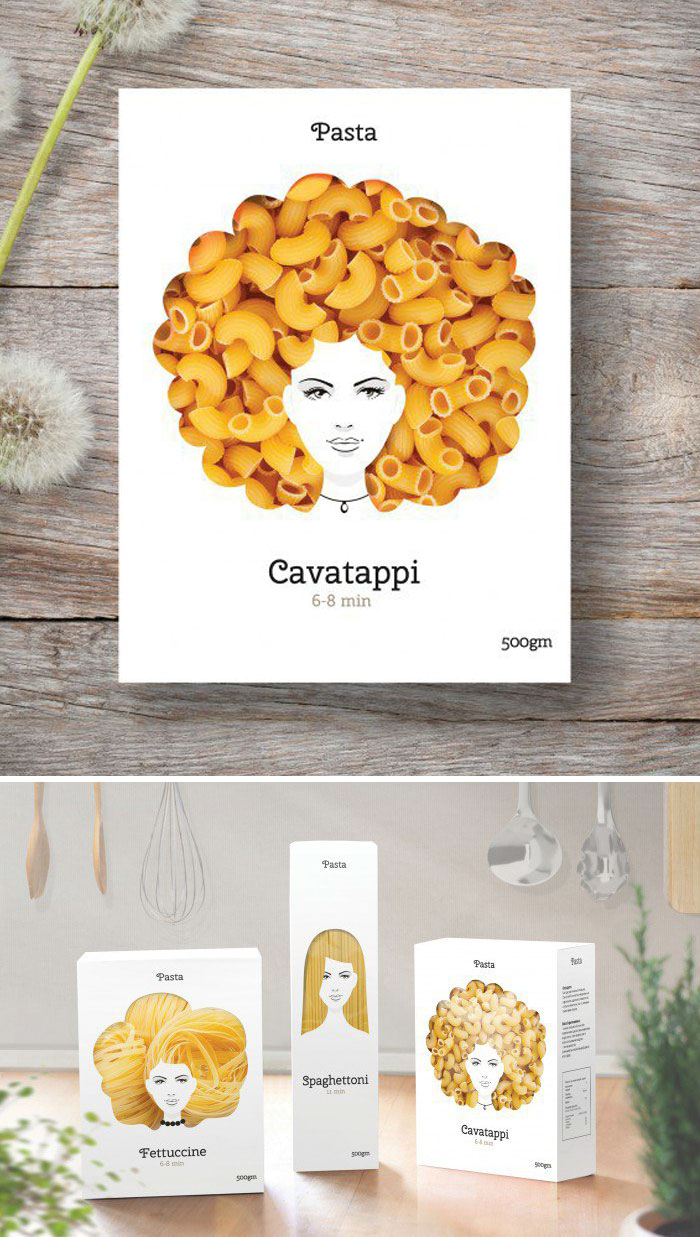
One of the biggest advantages of using window packaging is its ability to endorse your food brand among a number of similar offerings. Windows is a proven tactic to increase the sales of your products. Designing the window food boxes attractively is a great way to advertise your brand. Now you need not spend hundreds of dollars on carrying out promotional campaigns. Wherever your packaging goes, it speaks for its identity. High-quality printing with fascinating artwork and an enticing logo can make your food brand recognizable among a number of people.
Custom packaging also allows you to print useful information about the product and its manufacturer. For example, in the case of cookies or other similar food items, you can print nutritional information, calorie count, and a number of servings on the cookie boxes. If the customers get aware of various aspects of your products before their purchase, it increases their satisfaction level and loyalty towards your brand. The result is repetitive sales and long relationships with the customers.
Unlimited Options of Designs and Styles:
Window boxes are extremely innovative in nature. There are unlimited options of designs when it comes to food packaging. Customers can choose from various shapes, sizes, and styles for their window boxes. Alluring artwork and fascinating images can be added on demand. Printing on the plastic window can also enhance the elegance of your packaging. It has been seen that various manufacturers go for introducing important details on the window panes like the brand's logo or the expiry of the product.
You can add ribbons, labels or branded stickers to make your window boxes more appealing. Under the guidance of technical experts, you can design different shapes for your windows like a circle, heart, star or triangle depending upon the type of product you want to place in. Working with innovative designs can highlight your product and makes them different from those of competitors.
Benefits of window packaging in the Health and Beauty industry
The packaging reveals a lot about a brand. Showcasing your brand through packaging, both primary and secondary, is critical to building the brand image, perceived value, and the desire for the consumer to learn and want to buy your products. Adding a window to your packaging is a great way to showcase your product while providing consumers insight into your brand values and promise.
Brand image is paramount in all industries, but perhaps even more important when it comes to the health and beauty industry where mere looks influence and drive consumer decisions.
Here are just a few of the many benefits of using windowing in packaging of health and beauty products:
Provides a Realistic View of Your Product
Windowing inherently provides consumers with a real-life look into your product. Whether used in paperboard folding cartons or fully transparent plastic cartons, see-through areas of the packaging enables consumers to have an exact idea of your products’ color, shape, and other physical aspects. This realistic view of your product builds intrigue and buying impulses within consumers basics
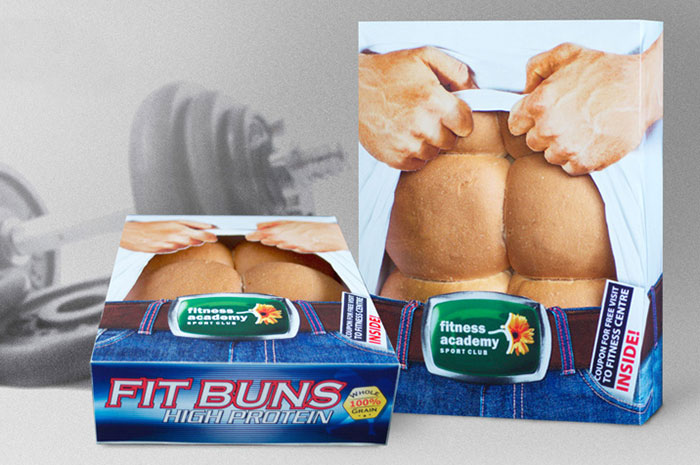
Showcases Primary Packaging for a Compounded Effect
When it comes to beauty products, looks can be everything. That’s why both primary and secondary packaging of beauty and cosmetic products, such as fragrances or high-end creams, are equally elegant and beautiful. Clear packaging allows consumers to see a product’s primary packaging, typically a gorgeous bottle or jar. This inside look into a product’s primary packaging, combined with beautiful secondary packaging, delivers an alluring and exquisite product presentation.
Creates a Heightened Experience for the Consumer
The closer a consumer can get to experience a product, the better connection they can make with a brand, and the more likely they are to purchase. Window packaging allows consumers to use more of their senses and ultimately heightens their overall experience and connection with your brand.
Flaunts Your Product’s Best Features
Every product has unique, selling features that brands want consumers to know about. Whether it’s the purity of ingredients or essence of the brand, window packaging is a unique design feature that can allow brands to promote one-of-a-kind product features, gifts with purchase, or companion products.
Conclusion:
Window packaging designs can help brands achieve many things. From presenting their product in a more direct way to heightening the consumer experience, window packaging requires mastery. When thinking about paperboard folding cartons with a window or an overall plastic carton, it’s important to work with a supplier that understands this unique material. Suppliers must have the experience, expertise, and equipment to guide brands on the ‘do’s and don’ts’ of print, finishing, structure, and other production considerations.
One of the biggest advantages of using window packaging is its ability to endorse your food brand among a number of similar offerings. Windows is a proven tactic to increase the sales of your products. Designing the window food boxes attractively is a great way to advertise your brand. Now you need not spend too much money carrying out promotional campaigns. Wherever your packaging goes, it speaks for its identity.
About PrimePac
At PrimePac, we bring together design experts and brand innovators to create fresh ideas, customized packages, and fully efficient processes.
We design creative packaging solutions that cater to a diverse global audience with the in-house knowledge and network of experienced professionals to meet the demands of every type of client.
From our dedicated sales team and warehouse staff in Australia to the experts at our production facilities in China, all of our employees are guided by four core values at the heart of our business: integrity, innovation, passion, and engagement.
Network
With our team in China and Australia working as one, we reduce inefficiency so that you deal with one streamlined team from manufacturing right to delivery.
Service support team located in Guangzhou, the manufacturing hub of China, providing rapid response, and local industry knowledge. Warehouse and 3PL net work located in Sydney, to provide rapid distribution, and delivery to your customers.

Coffee bean packaging - different package you can choose
Coffee bean packaging has been an early adopter of flexible packaging, but within this market, their packaging wishes have changed somewhat over the years. Some markets are very traditional and not very keen on changing their packaging concepts, forms, or designs.
However, innovative packaging design can do good help attract consumers also reinforce the first impression of consumers. During this article, we are going to discuss the style and design of coffee bean packaging and how can they attract consumers.
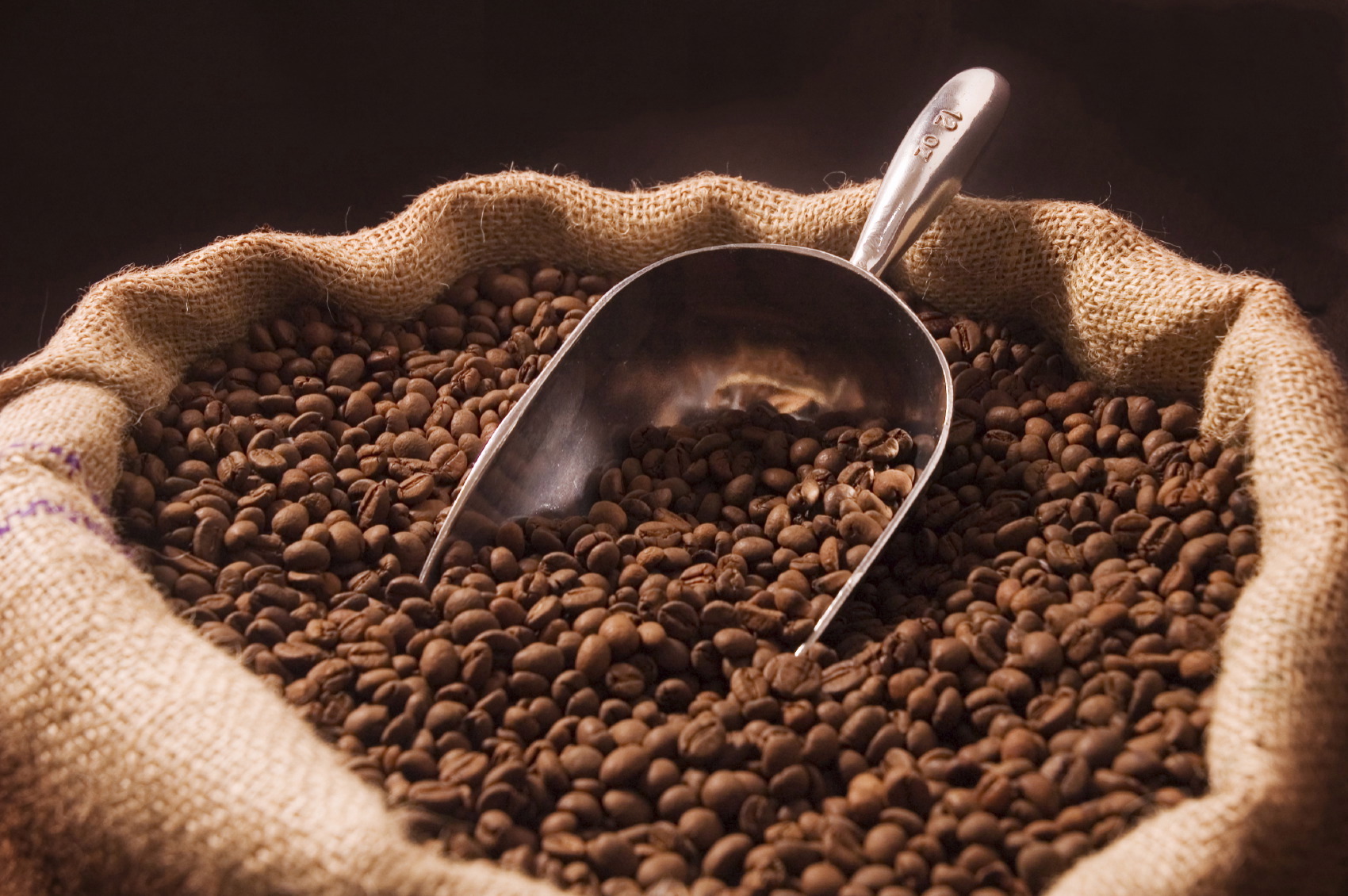
FOUR COMMON COFFEE BEANS BAG PACKAGING TYPES
While there is a wide range of coffee bags on the market, there are four types that each serve very different purposes.
# Stand-Up Pouches
The stand-up pouch is a very normal coffee bean packaging bag in the market, these bags are made of two panels and a bottom gusset, giving them a triangular shape. They also often feature a resealable zipper that can help keep the coffee fresher for longer, even once the bag has been opened. This combination of low prices and good quality makes stand-up pouches a popular choice among small- to medium-sized roasters.
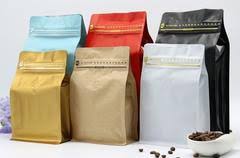
The bottom gusset also allows the bag to stand up on the shelf and there is plenty of room for branding. A talented designer can work with this style to create an eye-catching bag.

# Flat-Bottom Pouches
Its square design allows it to stand unassisted, giving it a prominent shelf presence and, depending on the material, a modern appearance. Besides, with its side gussets, it can hold more coffee in a smaller bag. In turn, this makes it more efficient to store and transport, and better for the environment.
The only downside to this bag is that it’s more complicated to make, so it tends to be a little pricier. Roasters need to weigh up the advantages in branding and freshness against the cost and decide if it is worth it for them.
# Side-Gusset Bags
This is a more traditional bag, and still one of the most popular. It’s also known as a side-fold bag. It is a strong, durable option well-suited to larger quantities of coffee. Most clients choose this style when they need to pack many grams of coffee, like 5 lb.
These types of bags tend to have a flat bottom, meaning they can stand on their own – when there’s coffee inside them. The empty bags can only do so if they have a folded bottom.

They are printable on all sides, making them easy to brand. They also tend to be less costly than other options. On the other hand, they don’t feature zippers. Usually, they are closed by rolling or folding them and using adhesive tape or a tin tie. Although they are easy to close this way, it’s important to remember that this is not as effective as a zipper and so coffee beans usually won’t stay fresh for as long.
# Flat Pouches
These bags come in many sizes, but they are most commonly seen as single-serve packaging. If roasters want to have a small bag, like a sample for their customers, they can choose this kind of bag.
Although these bags tend to be small, their entire surface can be printed on, offering good branding opportunities. However, keep in mind that this type of bag needs support in order to stay erect. You will need a platform or stand of some variety if you wish to display it on an exhibition booth, for example.
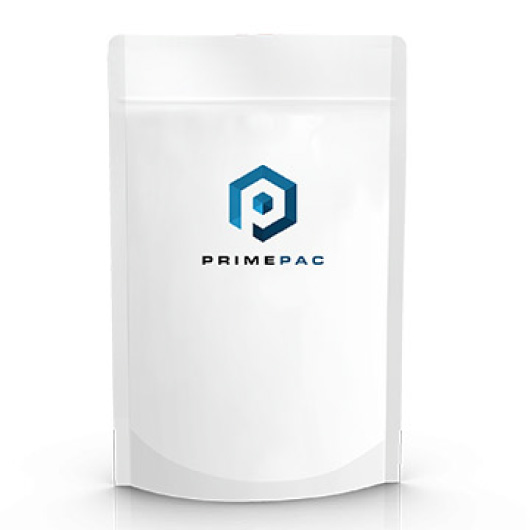
# BAG-IN-BAG (BIB)
Fractional packs of coffee can be packaged bag-in-bag into a larger package for foodservice or bulk sale purposes. Modern coffee packaging machines can form, fill, and seal the smaller frac packs and subsequently package those into a larger outer wrap on a single bag-in-bag machine.
Coffee bean packaging factors - Coffee freshness factors
Will your product be distributed to stores, cafes, businesses, or shipped to the end-users nation- or worldwide? If so, your coffee will need to stay fresh until the very end. To accomplish this, Modified Atmosphere Packaging (MAP) options can be used.
The most popular modified atmosphere packaging system is one-way degassing valves, which allows the natural build-up of carbon dioxide in freshly roasted coffee an escape route while not letting COFFEE FRESHNESS KILLERS like oxygen, moisture, or light inside the bag.
Other modified atmosphere packaging options include nitrogen gas flushing, which displaces oxygen in the coffee bag before filling, and the use of You can choose to use one type of MAP in your coffee bean packaging design or many, depending upon your needs. For most modern coffee packaging applications.
The coffee bean packaging process
Will you be hand-filling your coffee bags or are you considering automating with COFFEE BEAN PACKAGING EQUIPMENT? If you plan to hand-fill your coffee bags, we recommend you choose a bag style that has a wide enough top opening to accommodate your scoop or filling apparatus.
Also note that hand-packing, while it may have a lower cost to entry, seriously limits your throughput, accuracy, and ability to ramp up production at a moment’s notice. If you already use – or are considering purchasing – automated COFFEE BAGGING EQUIPMENT, your bag options are almost unlimited.
Most modern coffee packing machines can easily accommodate multiple bag styles and sizes. Fill weights are no longer a worry as automated filling solutions can operate at a high level of accuracy. Your throughput can increase by leaps and bounds and if you suddenly receive a large order, scaling your production up is no biggie.
The most noticeable coffee bean packaging trends:
#Sustainability
Many consumers are conscious of their purchases and the effect they have on the environment. Building trust with these consumers is done by reducing the impact the product and packaging have on the environment. And just as important, demonstrating this impact on the packaging itself! Earlier we gave the example of packaging concepts moving from aluminum to metalized PET.
#Premiumization
During the recession, convenience kept the instant market afloat. But the last few years have been good for the coffee market, and now we see instant coffee improving both the quality of their product and packaging to give sales and brand recognition a boost. For example, we see companies investing in better inks, lacquers, or varnishes.
#Marketing campaigns and their effect on packaging updates
Growing your brand can be difficult, particularly in the crowded coffee marketplace. One way brands choose to increase their market share is by offering variations on classic coffee products. We are also seeing more and more (short) branding campaigns that require frequent changes in packaging.
Coffee bean packaging convenience options:
Zippers
One of the most popular recloseable options, zippers means a consumer can reuse the product after opening. Zipper reclosures provide an effective barrier against staling.
Ties or tape
Popular in the coffee industry are tin tie and tape down closures. These reclosable options can be employed either independently or together on your coffee bean packaging machine. This choice is not as airtight as a zipper but is still a popular look for stand-up coffee packaging bags.
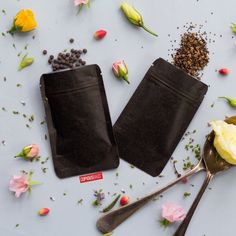
Minimal package design
Consumers are already overwhelmed with choices, visuals, and data. Make it easy for them to select your coffee with minimal use of graphics and bold, solid patterns in your coffee bag packaging design.
What else factors you need to consider about coffee bean packaging:
The Filling Process:
Bags with a small opening can take longer to open and fill than ones with wider openings. Whether you choose to fill your bags manually or with an automatic filling machine, make sure to analyze your processes and how much time this consumes.
A Degassing Valve:
Sealed bags without a valve usually inflate and can even explode. A degassing valve allows the carbon dioxide that roasted coffee releases to escape the sealed bags. It’s a one-way valve: carbon dioxide goes out, but oxygen doesn’t come in. However, keep in mind that your bags need to be completely sealed for this to be effective, so make sure to invest in a good heat sealer.
A Tear Notch:
It’s a simple addition that allows for better and quicker access to your product.
The Supplier:
Will your supplier give you genuine advice? What will happen if there is a problem? Choose a reliable supplier, you need to know more about their qualifications, visit their website through the Internet, be sure about the product quotation, and check the feedback from other customers and the quality of the product.
Design your coffee bean packaging
The design of packaging for your coffee beans starts with the structure of this bag.
It will determine how much information and details you can share on it, so you want to know what your product is.
If not, you need to highlight the properties of the coffee, such as fermentation characteristics, origin, and recommended brewing method.
If your coffee does not have any special quality, please mention it here.
There is a quality seal or certification mark because it can also imply a certain quality seal or certification mark, because there may be a certain quality seal or certification mark, and it can prove that they are from their place of origin.
You need to decide which information to choose and where, because your packaging has a lot of information to choose from.
Primepac has a stable outer flat-bottomed bag and an inner printable area. Internal printing adds an amazing element or can be used for the color of coffee beans that contrast with fermentation.
This may provoke customers to the color of other coffee bags. The curiosity of what was prepared for them.
Don’t forget about sustainable packaging
It is possible for modern packaging options to preserve the flavor and content displayed during the production process while considering the environment.
However, as Millennials and Gen Z continue to dominate the beverage market, their consumer interest in product labeling and packaging is increasing.
This is something you need to consider at every point, it can convey how your coffee is harvested and processed in your own way.
You can add a brief guide on how to properly dispose of the bag, or mention how to save money by recycling the bag.
Therefore, you can trust PrimePac
About PeimePac
At PrimePac, we bring together design experts and brand innovators to create fresh ideas, customized packages, and fully efficient processes.
We design creative packaging solutions that cater to a diverse global audience with the in-house knowledge and network of experienced professionals to meet the demands of every type of client.
From our dedicated sales team and warehouse staff in Australia to the experts at our production facilities in China, all of our employees are guided by four core values at the heart of our business: integrity, innovation, passion, and engagement.
Network
With our team in China and Australia working as one, we reduce inefficiency so that you deal with one streamlined team from manufacturing right to delivery.
Service support team located in Guangzhou, the manufacturing hub of China, providing rapid response, and local industry knowledge. Warehouse and 3PL net work located in Sydney, to provide rapid distribution, and delivery to your customers.

Pet food packaging: trends and design in 2020
Pet food packaging: trends and design in 2020
As the baby boomer’s ownership of pets declines, pet food packaging design turns its attention to millennial and Gen Z consumers. These young generations are rapidly redefining what it means to be a pet parent, including everything from pet food to how to shop.
Although millennial shoppers continue to favor healthier and more sustainable choices for their food, they are also looking for the same quality when shopping for the four-legged friends-they show that they are willing to pay for these additional Benefits of paying for food. According to a global study conducted by Nielsen, nearly three-quarters of millennials say they are willing to pay extra for sustainable products.
The pet food packaging market is valued at USD 9.92 billion in 2020 and is expected to reach USD 13.78 billion by 2026, growing at a CAGR of 6.79% during the forecast period (2021-2026). The growing popularity of the pet food packaging market is attributed to the increasing use of pets as companions and the growing awareness among owners to keep their pets healthy. The growing concern for pet health has led to the adoption of spill-proof and advanced pet food packaging to maintain the quality of pet food packaging.
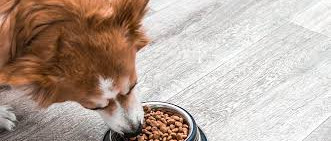
Gen Z has a similar attitude towards consumers, with 55% of consumers saying that they will pay higher prices for products and services for companies that are “committed to a positive social and environmental impact.”
In addition to sustainable development and environmental impact, young consumers are also looking for pet foods that provide pets with superior taste and quality experience, and are labeled with healthy, natural ingredients. Pet parents are also seeking the convenience of convenient and easy-to-use packaging.
Pet food packaging situation right now:
The pet food packaging market was valued at $9.29bn in 2018 and is predicted to grow at to $12.9bn by 2024, at a CAGR of 6.79% for the forecast period of 2019-2024, according to the ‘Pet food packaging market – growth, trends, and forecast (2019 – 2024)’ report. With pet owners wanting more protective, informative, and tasteful packaging, manufacturers are pushing to improve labeling, and produce more intelligent pet food packaging.
Packaging is playing a key role in the strong growth of the pet food industry, especially when it comes to premium products. The bag or container allows manufacturers to stand out from dog and cat owners who want sustainable options, personalized pet diets and even human-friendly ingredients.
Trends to pet food packaging in the future
# Sustainable development
The sustainable development of pet food is not only the sustainability of its ingredients-packaging plays a key role in the environmental characteristics of products. According to a Mintel survey, 29% of American adults between the ages of 18 and 22 said they specifically bought environmentally friendly products.
Using intelligent design and material selection, there are several ways to reduce the environmental impact of packaging. Look for packaging that is lightweight and usually uses less material. In addition, ensure that these materials come from renewable and sustainable sources, such as cardboard made from responsible forests or plastics made from plants such as sugar cane.
Another important sustainability aspect of pet food packaging is its ability to protect food, extend its shelf life, and prevent unnecessary waste. Choose a package to prevent exposure to light and oxygen to protect the taste, color, smell, and nutritional value of the product. Sterile and cooking cartons are a good example. This technology can extend the shelf life without preservatives or refrigeration.
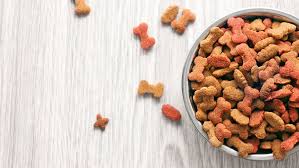
Packaging scrapping is another important consideration for environmentally conscious consumers. Pet food brands should go further by clearly communicating the life cycle of packaging, including what products can be made once the packaging is recycled.
# Taste and quality
Pet parents are increasingly concerned about the deliciousness of feeding pets with high-quality ingredients. According to Mintel, four out of ten dog owners will take into account their pet’s taste preferences when choosing food-this is a more important decision factor than food with limited ingredients or grain-free. Among cat food buyers, 31% make decisions based on taste.
As further evidence of taste trends, pet food toppings or broths have become a growing part of the pet food industry, and currently, 12% of American cat and dog owners buy these foods. Mintel’s research shows that adding a bowler hat to dry or wet food can customize the diet experience for pets and can increase nutritional value.
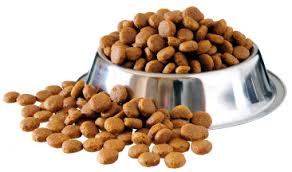
Pet parents are also paying close attention to the quality of the ingredients listed on the label. According to Nielsen, sales of pet foods that do not contain GMOs increased by nearly 29% in 2018. Other “free” claims of sales growth include no corn, hormones, fillers, artificial preservatives and artificial colors.
# Label
Clean labeling is another area where pet food trends strongly reflect human food trends. The trend in cleaning labels is to list short, easy-to-understand ingredients on the label. In 2017, 62% of American consumers agreed that the fewer ingredients in food, the healthier; according to a survey, nearly 50% said they prefer foods without artificial additives.
Not surprisingly, many consumers want the meat to be highlighted in the pet food ingredient list. In fact, according to a survey, 40% of dog food buyers and 35% of cat food buyers base their purchase decisions on “real meat is the first ingredient.”
# Flexible packaging
Flexible packaging, such as single-serve or convenience-sized packaging, has gained more traction due to the accessibility and functionality they bring to pet owners. Small pet food pouches can be customized, hold different sized products, are portable, and keep the product fresh, giving it longer shelf life.
Not only does flexible packaging offer a safe barrier for pet food but it also eliminates waste due to its all-in-one nature.
New Packaging Styles to the U.S. Market
Flexible pet food packaging, like stand pouches for pet treats and big bags for dog food, is still a relatively new concept in the United States. Traditionally, animal feed and associated products have been packaged in large boxes, flimsy bags, or rigid canisters. New developments overseas have pushed flexible packaging to the forefront, making it the preferred choice for highly influential modern brands across the globe. Companies that utilize intriguing, fashionable packaging that is sleek and highly functional are drawing in new customers and reshaping the marketplace in exciting ways.
We’re seeing more and more pet businesses using unique packaging styles for their food and treats because they stand out from the competition and draw in consumers. One trend being observed at trade shows is the packaging of smaller meals for cats and dogs. These single-use feasts are produced to satisfy the needs of smaller pet breeds — a growing trend happening here in the U.S. As such, companies selling these products need to place a special emphasis on the way they are packaged. New pouch styles can be custom-tailored to fit nearly any size product while keeping air out, prolonging the shelf life and freshness of the food inside. Utilizing these inventive types of all-in-one packaging cuts down on extraneous waste while providing a strong but pliable barrier that maintains the quality and integrity of the pet food.
Why Pet Food Packaging Design Can Make or Break Your Brand’s Success
Pet food packaging design trends closely mirror those we see in “human food” categories. Demand for healthier and more sustainable options is driving change in the food packaging industry as a whole, and pet owners tend to include their pets in the healthier, more environmentally friendly food purchasing decisions they make on behalf of their families. They want their pet food to be “just as good” as the food they eat.
These decisions are most often made on the spot while standing in front of a supermarket shelf, so packaging design makes all the difference between your product being put in the cart or not.
Here are some of the top strategic questions that inform our customers’ pet food packaging designs:
– Is the package safe, with excellent shelf stability and barrier control? The structural design of your pet food packaging is as important as its aesthetic to keep pets safe and avoid damaging recalls.
– Is the package convenient? Will consumers easily be able to carry it home and effectively reseal it from first use to end-of-life?
– Does the structural design of your pet food packaging enable easier and more cost-effective transportation and warehousing?
– Is the package sustainable—either recyclable or fully biodegradable?
We’ve seen a healthy growth trajectory year-over-year in the premium pet food category, which means both greater opportunity and greater competition for manufacturers. While a lot of different factors determine the success of each brand, one of the greatest competitive differentials, without question, is pet food packaging design.
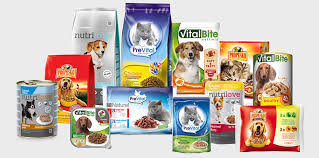
The analysis of pet food packaging future market
In terms of value and quantity, the bag segment is expected to lead the pet food packaging market from 2020 to 2025.
According to the type of packaging, the bag segment is expected to become the largest market for pet food packaging. The dominant market position of bags can be attributed to easy handling and low production costs.
The bagged portion of the pet food packaging market is expected to grow at the highest CAGR during the forecast period, both in terms of value and volume. The growth of this market segment is attributed to the growing demand for it from various pet food brands. In addition, because it provides different types of packaging, such as single-serve packaging, pouches, and excellent display appeal.
In terms of value and quantity, the dry food segment is expected to lead the pet food packaging market from 2020 to 2025.
Divided by food type, the dry food segment is expected to become the largest part of the pet food packaging market. Dry food causes less spillage and can be easily removed. Dry food is easier to handle than wet food because wet food has a strong smell.
It is expected that from 2020 to 2025, the plastics sector will lead the pet food packaging market.
Plastic packaging is durable, lightweight, cost-effective, and versatile, making it the largest market segment in the pet food packaging market.
In terms of value, the market is expected to remain the largest market segment throughout the forecast period and witness the highest compound annual growth rate during the forecast period.
In terms of value and quantity, cat food is expected to grow at the highest compound annual growth rate during the forecast period.
The cat food segment of the pet food packaging market is expected to grow at the highest compound annual growth rate during the forecast period, both in terms of value and volume.
It is estimated that from 2020 to 2025, the dog food part will still be the largest part.
The most important trend in packaging today is sustainability.
Sustainability has always been a serious concern of the government and consumers, so packaging companies focus on meeting government and consumer packaging requirements.
For example, ProAmpac’s PRO-EVP multi-layer bag is used for sustainable pet food packaging and is made of fiber-based renewable resources and paper/poly hybrid materials.
The company’s PRO-DURA series uses polypropylene woven bags, which are flexible and durable.
In pet food packaging, plastic bags are mainly used. However, due to environmental issues and regulations of plastic packaging, the adoption rate of such packaging in pet food packaging is declining.
The Pet Sustainability Coalition (PSC) stated that the cost of recycling plastic is higher than the value of the plastic material in the packaging.
This situation challenges market growth because of improper food safety and product bans that may lead to a reduction in the demand for pet food packaging.
With the recent outbreak of COVID 19, flexible packaging manufacturers are flooded with a series of problems that are expected to only appear in the short term.
Some of the effects of the blockade include supply chain disruption, an insufficient supply of raw materials used in the manufacturing process, labor shortages, and price fluctuations that may cause the production of final products to inflate and exceed budgets, transportation problems, and so on.
Conclusion:
The entire pet food packaging industry has undergone several much-needed changes in the last few years, and adhering to new regulations, upholding standards of quality, and working with pet products companies to best market and reflect their brands via their product’s container has propelled the marketplace into an exciting new direction.
The packaging is no longer regarded as an afterthought, and suppliers of innovative package solutions have become an integral part of a business partnership and team. Your product’s package is the first thing people see, after all, so whether you’re at a trade show, conference, demo booth, investors’ meeting, or in a store aisle, becoming a leader in reshaping the world of pets begins with staying up to date on the latest trends, technologies, and strategies for successfully selling your pet products.
About PeimePac
At PrimePac, we bring together design experts and brand innovators to create fresh ideas, customized packages, and fully efficient processes.
We design creative packaging solutions that cater to a diverse global audience with the in-house knowledge and network of experienced professionals to meet the demands of every type of client.
From our dedicated sales team and warehouse staff in Australia to the experts at our production facilities in China, all of our employees are guided by four core values at the heart of our business: integrity, innovation, passion, and engagement.
Network
With our team in China and Australia working as one, we reduce inefficiency so that you deal with one streamlined team from manufacturing right to delivery.
Service support team located in Guangzhou, the manufacturing hub of China, providing rapid response, and local industry knowledge. Warehouse and 3PL net work located in Sydney, to provide rapid distribution, and delivery to your customers.


